For the day that’s in it (it’s Culture Night 2022 today): this entry is not perfect but I want to publish it, and will improve it over time…
1. 9/9A Aungier Street, Dublin (Open House 2014)
2. Belvedere House, Dublin (Open House 2015)
3. Blackhall Place (formerly Blue Coat School) Dublin (Open House 2019)
4. City Assembly Hall, Dublin (Culture Night 2012)
5. Department of Trade and Commerce (2019)
6. Freemason’s Hall (Culture Night 2010)
7. Georgian Townhouse, 25 Eustace Street (2011)
8. 10 Henrietta Street, Dublin (2011)
9. 12 Henrietta Street, Dublin (2019)
10. 14 Henrietta Street, Dublin (July 2013 Heritage Week)
11. Iveagh House, Dublin (Department of Foreign Affairs) (Open House 2014)
12. Iveagh Trust flat, Iveagh Trust, Patrick Street, Dublin (Open House 2014)
13. Mansion House, Dublin (2015)
14. Marsh’s Library, Dublin (Heritage Week 2013)
15. 10 Mill Street, Dublin (2017)
16. 13 North Great Georges Street, Dublin (Open House 2012)
17. Pigeonhouse (2021)
18. Rates Office, Dublin (Open House 2013)
19. Royal Academy Dublin (2013)
20. Royal College of Physicians, Dublin (Heritage Week 2013)
21. Royal College of Surgeons, Dublin (2011)
22. St. Mary’s Abbey, Dublin (Culture Night 2012)
23. Tailor’s Guild Hall, Dublin (Heritage Week 2013)
24. Trinity Innovation Centre, former Bank, Foster Place, Dublin (Open House 2013)
1. 9/9A Aungier Street, Dublin (Open House 2014)

When remedial works were undertaken the age of this building was discovered. It was first realised it was older than thought when planners appraising development changes noticed the way the fireplace sticks so far out into the room.
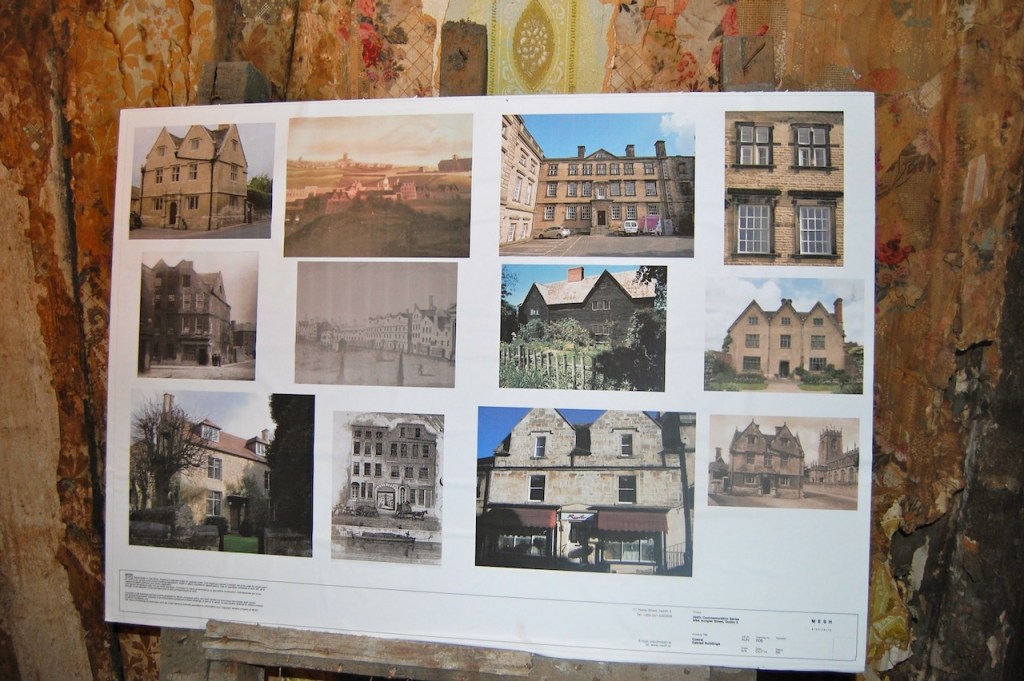
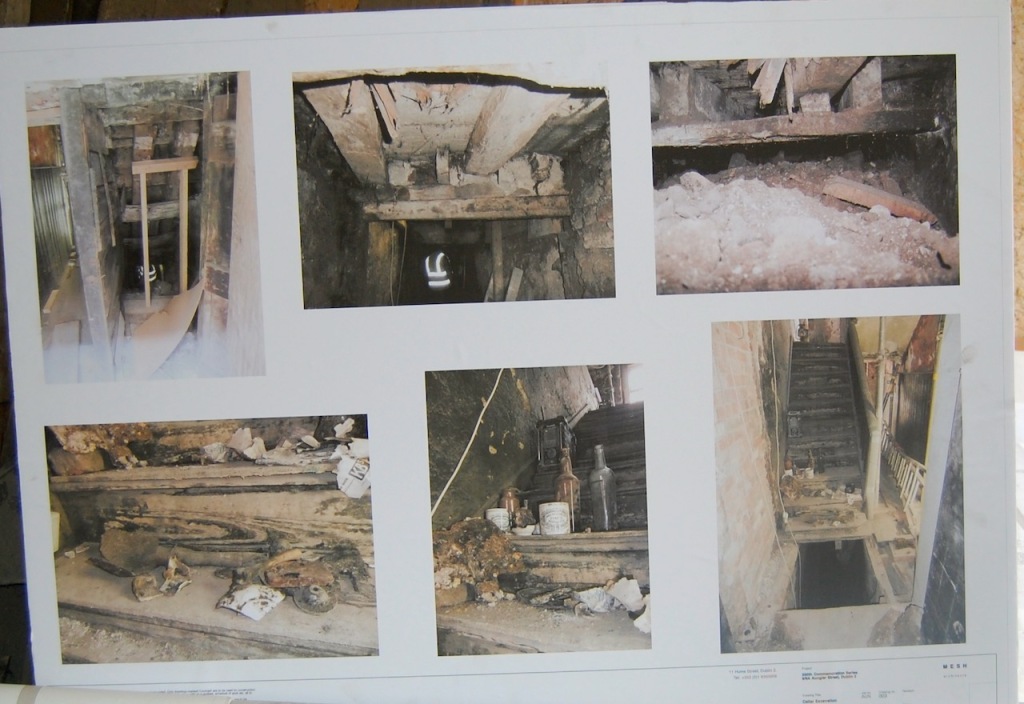



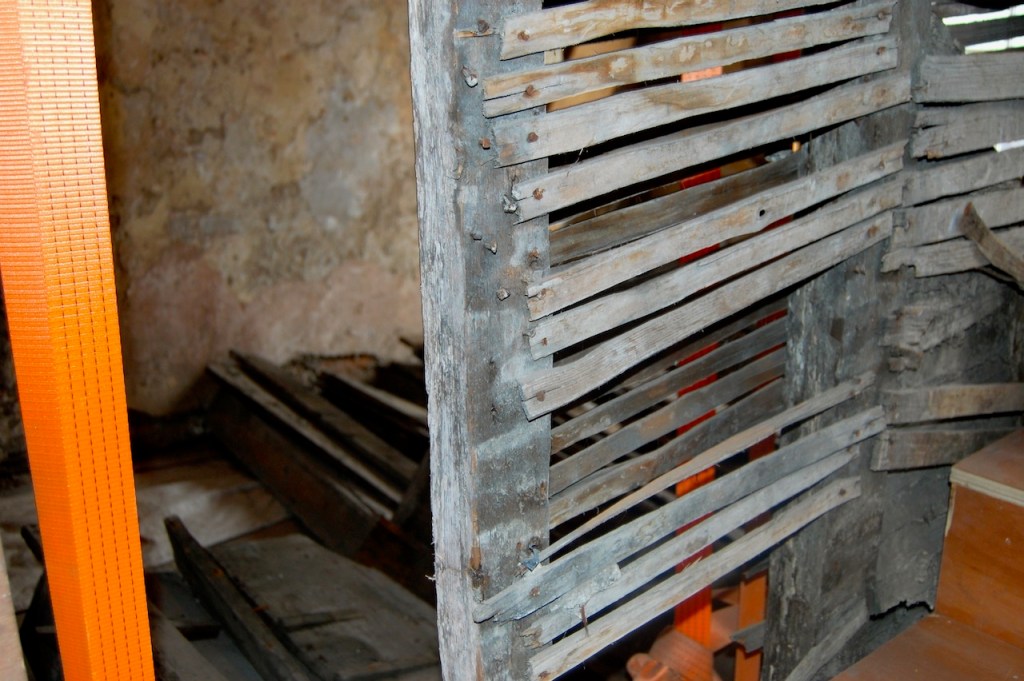

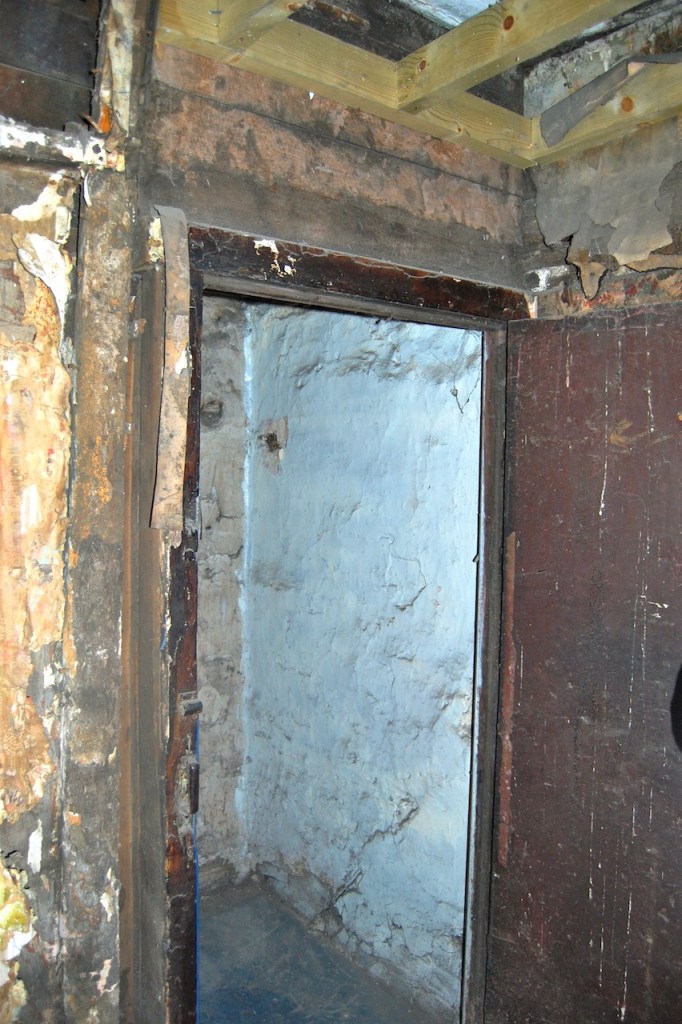


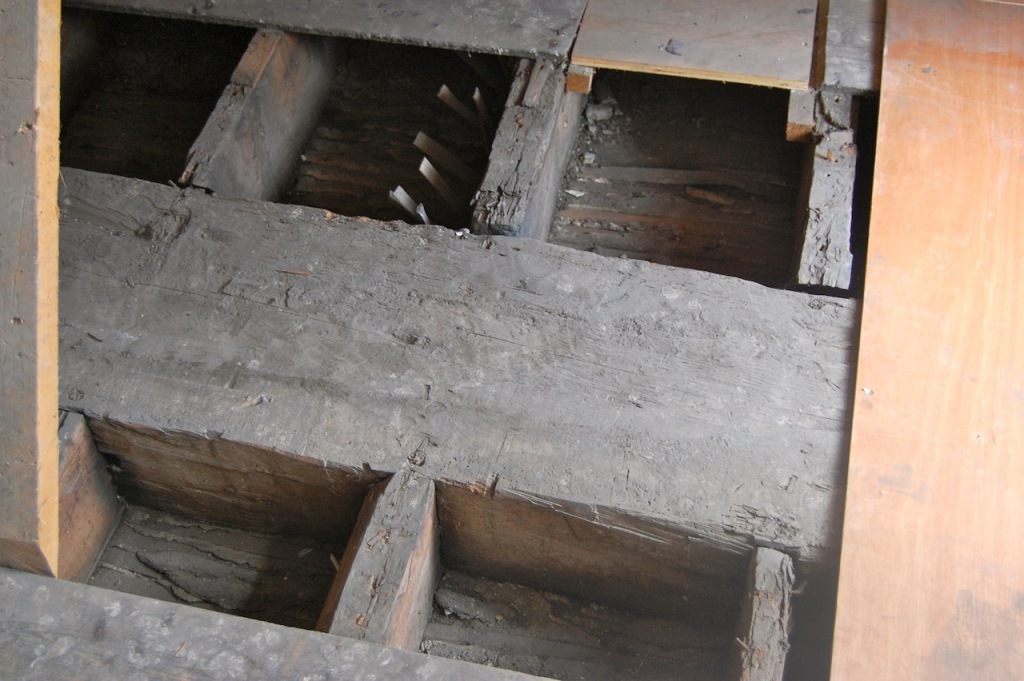


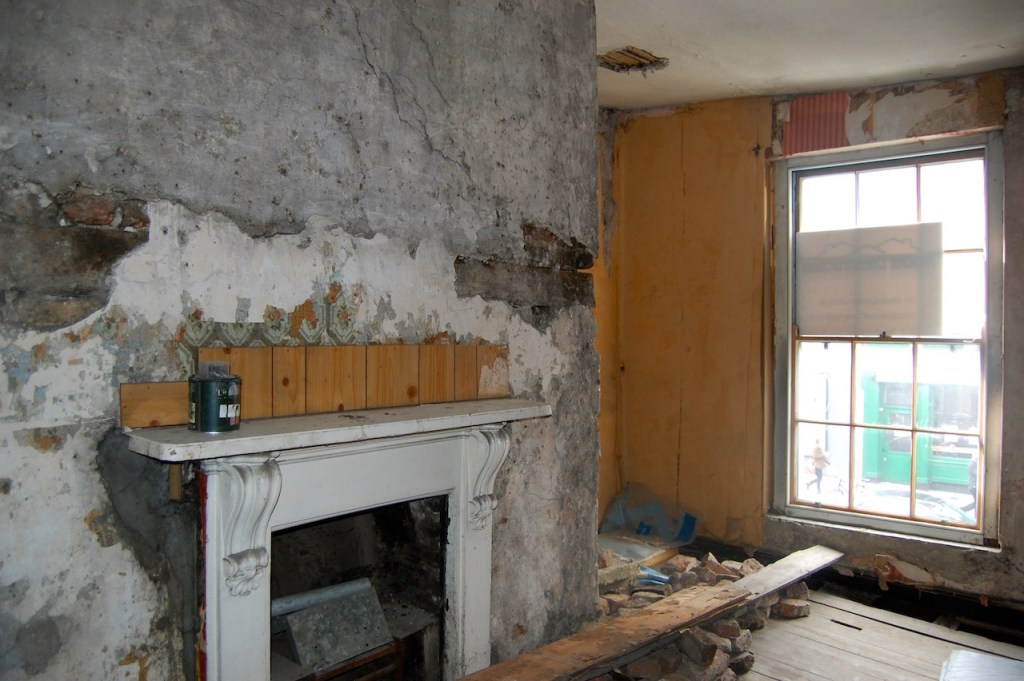
2. Belvedere House, 6 Great Denmark Street, Dublin (Open House 2015):
https://www.oreillytheatre.com/belvedere-house.html
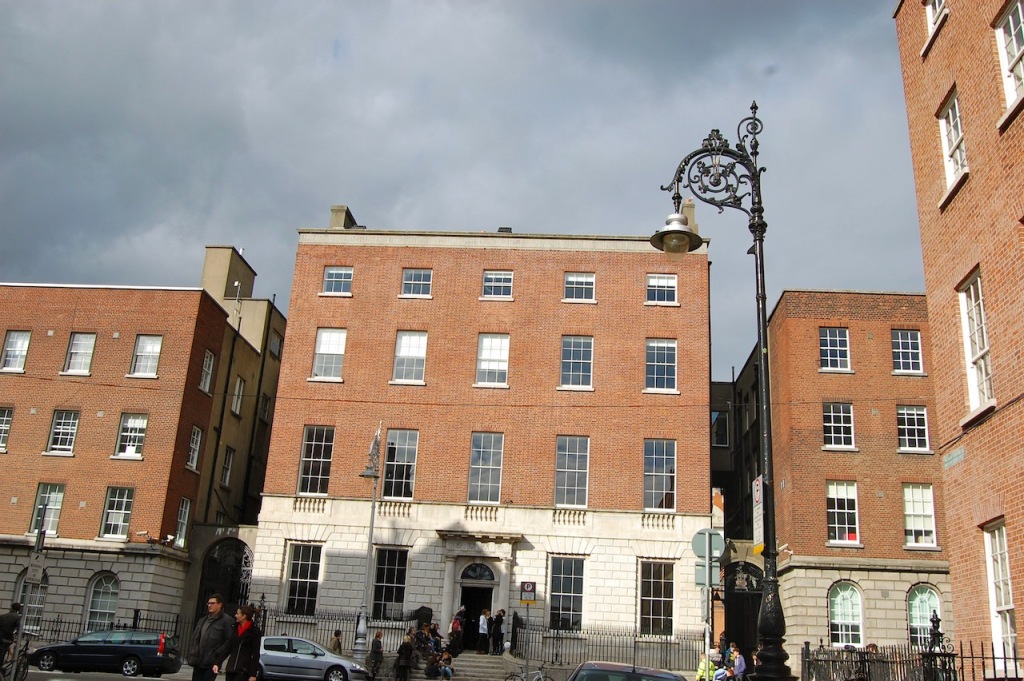
We went into three rooms upstairs, up the beautiful staircase. We weren’t allowed photograph on the tour, unfortunately, in the Apollo Room, Venus Room and Jupiter Room.
Belvedere House is a detached symmetrical five-bay four-storey Georgian townhouse over exposed basement, completed 1786, designed by Robert West who, in addition to being a stuccodore was also an architect and property developer, for George Augustus Rochfort, 2nd Earl of Belvedere. The house was built for £24,000 on what would have been rural green fields with a view of the Custom House, the bay and distant mountains. It is alleged that the house is haunted by Mary Molesworth, the first lady of Belvedere, mother to George Rochfort – we came across her at Belvedere in County Westmeath.
Rochfort was the son of the cruel Robert Rochfort, 1st Earl of Belvedere, who kept his wife under lock and key in the countryside after he believed she had an affair with his brother. Some believe that she was the inspiration for Charlotte Bronte’s “madwoman in the attic.” Robert Rochfort had the summer lodge, Belvedere, built in County Westmeath, now open to the public, which also has fine plasterwork. Robert O’Byrne writes that it was the 1st Earl who bought the property on Great Denmark Street. At first his son attempted to sell the property, but then he finished having the house built. Robert O’Byrne also tells us that it is similar to 86 St Stephen’s Green (Newman House, now housing the Museum of Literature of Ireland (MOLI), which was begun in 1765, and which is also attributed to Robert West.
North Great Georges Street itself was originally laid out in 1774 as a driveway leading to Belvedere House.
In 1841 the house was bought by the Society of Jesus (Jesuits) to accommodate their growing boys school which had started life ten years previously around the corner on Hardwicke Street, now known as Belvedere College.
One of the more outstanding features of the house is the stucco-work of Adamesque style popularised by Robert and James Adam. This can be seen in the ornamental surrounds, wherein pictures are framed in plaster rather than oil.
Dublin stuccodore and designer Michael Stapleton (1740-1801) was responsible for this work and further examples of his craftsmanship include the ceiling in the exam hall in Trinity College as well as some of the plasterwork in Powerscourt House in South William Street in Dublin and the Aras an Uachtarain in Phoenix Park.

It seems odd that a house designed by Robert West, however, would have plasterwork by Michael Stapleton. Robert O’Byrne elucidates this for us:
“In 1967 C.P. Curran’s Dublin Decorative Plasterwork of the 17th and 18th centuries noted in the collection of drawings left by stuccodore Michael Stapleton several items directly relating to the design of ceilings in Belvedere House. Accordingly, this work was assigned to Stapleton. However, the fact that West was responsible for designing the house complicates matters, and the consensus now appears to be that both he and Stapleton had a hand in the plasterwork. Conor Lucey (in The Stapleton Collection, 2007) suggests that Stapleton may have been apprenticed to, or trained with, West and the fact that he was named the sole executor of the latter’s will in 1790 indicates the two men were close. The source material for the stucco work is diverse, that in the stair hall deriving in part from a plate in Robert Adam’s Works in Architecture, but the first-floor rooms feature a wider range of inspiration, much of it from France and Italy.”
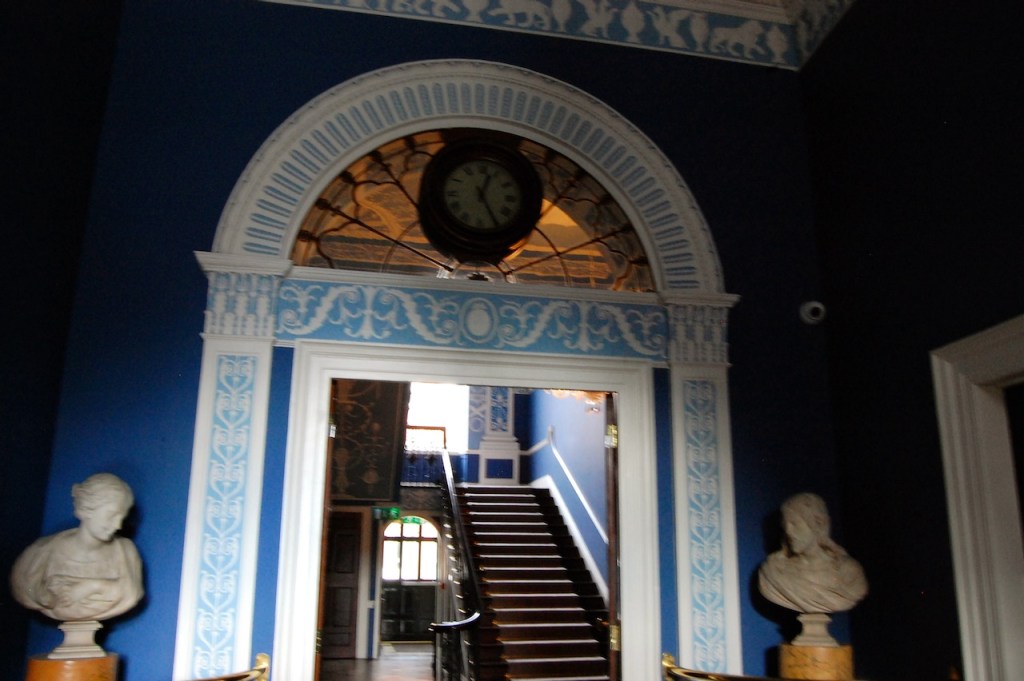
We were given a leaflet, which tells us:
“The ground floor rooms were intended for everyday and business use and therefore are minimally ornamented. However when one ascends they will encounter Stapleton’s stucco-work that depicts scenes from Greek and Roman mythology. On the half-landing the Bacchanalia is celebrated. The left panel depicts Bacchus with his thyrsis and staff, the right panel is Ceres with her cornucopia. The central oval shows Cupid being demoted by the three Graces. The arched window is ornamented with symbols of the authority of ancient Rome. The tall pilasters on each side have the Green anthemion (honeysuckle) motifs.
“At the top of the stairs the panel between the two doors on the right show Juno seated on a cloud with her peacock. The panel on the centre wall is Aurora in her chariot pulled by winged horses. Under this plaque “The New Bride” from an ancient marble popular in 18th century Rome. All the five doors have the same over-door: Silenus, the tutor of Bacchus. On the ceiling, Eros is depicted gazing at Psyche as she sleeps. Next is an Apollo head with winged lions and lastly, Cupid with a flower.
“The door immediately to the right of the stairs leads to the Apollo Room, named after the featured frieze of Apollo the music-maker holding court with attendent putti playing a variety of instruments. The adjoining Diana Room depicts Diana, patron of the chase, in a chariot drawn by stags. The design is taken directly from Pergolesi, however, Stapleton added the outer circle of flowers.
“Finally the Venus Room’s flanking panels have lunettes representing astronomy, architecture and sculpture. Notice the beautiful over-doors in all three rooms, each with the head of the principle subject.”
Notice that Venus was taken down by the Jesuits as she was nude, and it is supposedly in the National Gallery.
3. Blackhall Place (formerly Blue Coat School) Dublin, 2019.

Archiseek tells us that the first Blue Coat School or King’s Hospital was erected in Oxmantown Green between 1669-1673. It was officially named the Hospital and Free School of King Charles II. Orphans were nominated to attend the school by the Alderman or the parish, with funding coming from voluntary donations and from ground rent of St. Stephen’s Green. This building was demolished to make way for the new building, pictured above. The current building was started in 1773. Ivory resigned in disgust before it was finished, due to lack of funds, and only a stub was built instead of his tower, and the stub was removed in 1894 and a dome constructed.
The description of the tour tells us:
“The last of Dublin’s Palladian public buildings, the granite and Portland stone Blue Coat School replaced earlier premises, which had been established by King Charles I in 1671 to care for the sons of impoverished citizens. Construction began in 1773 to designs by Thomas Ivory, however funding issues led to a reduced building programme and Ivory’s departure. In 1894, a copper-clad cupola designed by Robert Stirling was added. Today, the building is home to the Law Society of Ireland, which has taken great care to retain many fine interior features.“

The building now houses the Law Society. It was built as a traditional country house composition with a central block, two wings and connecting passages. The wings have decorations intended to mirror the central tower.

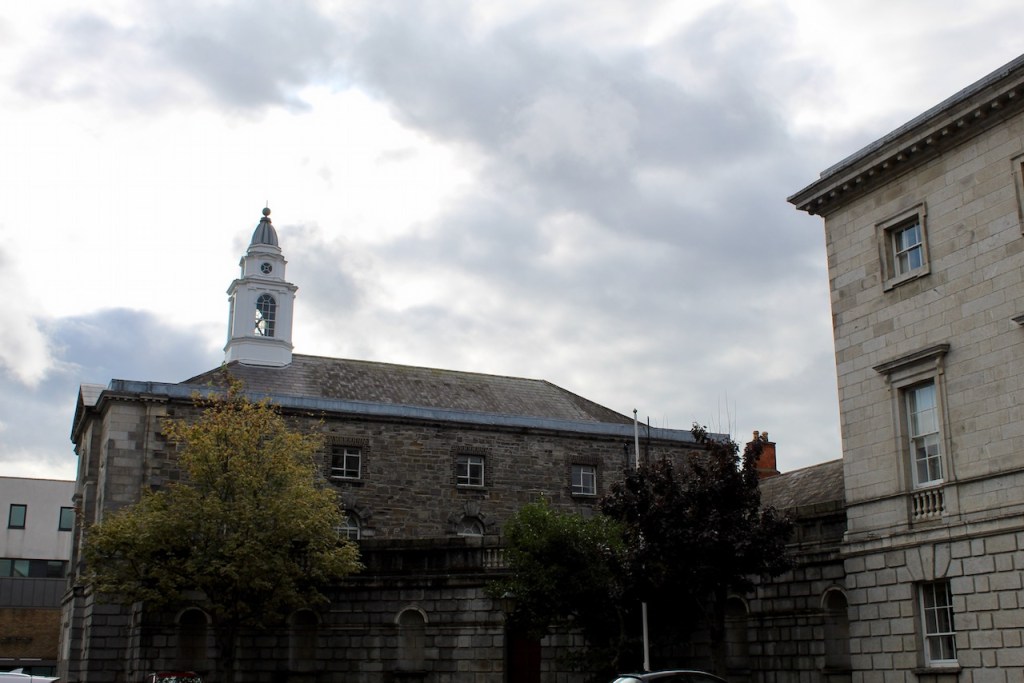

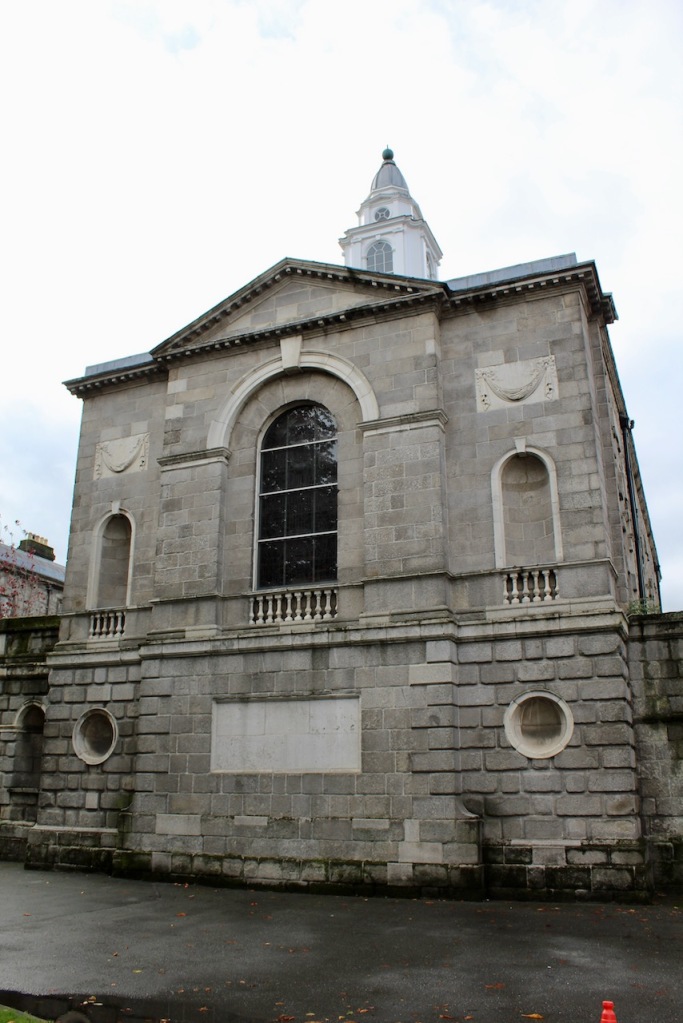
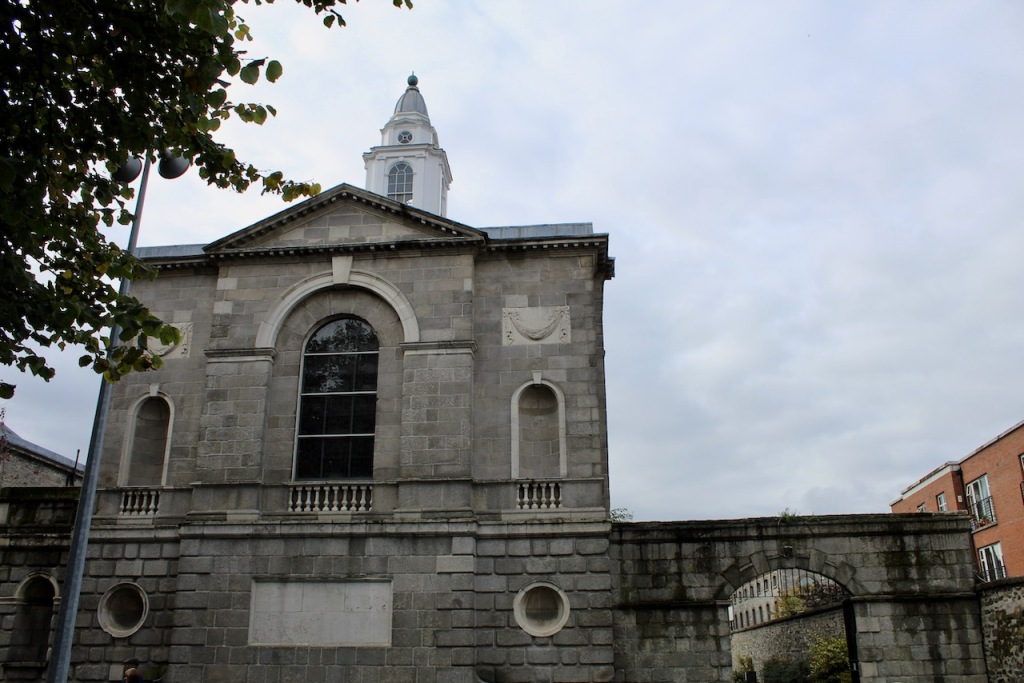

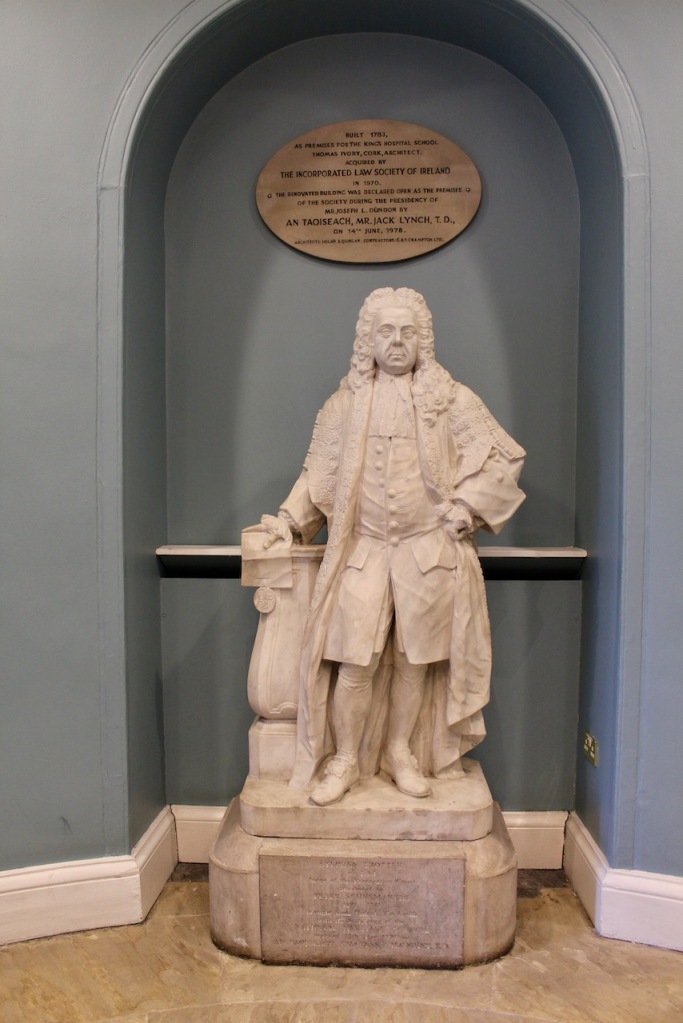

The interior contains plasterwork by Charles Thorpe and carvings by Simon Vierpyl.
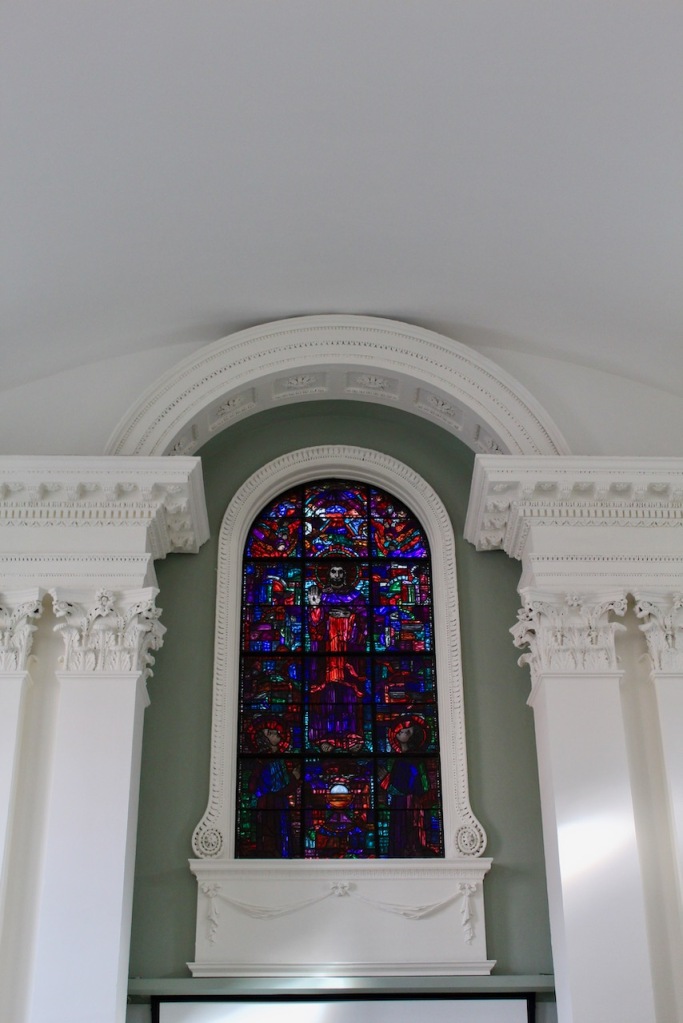
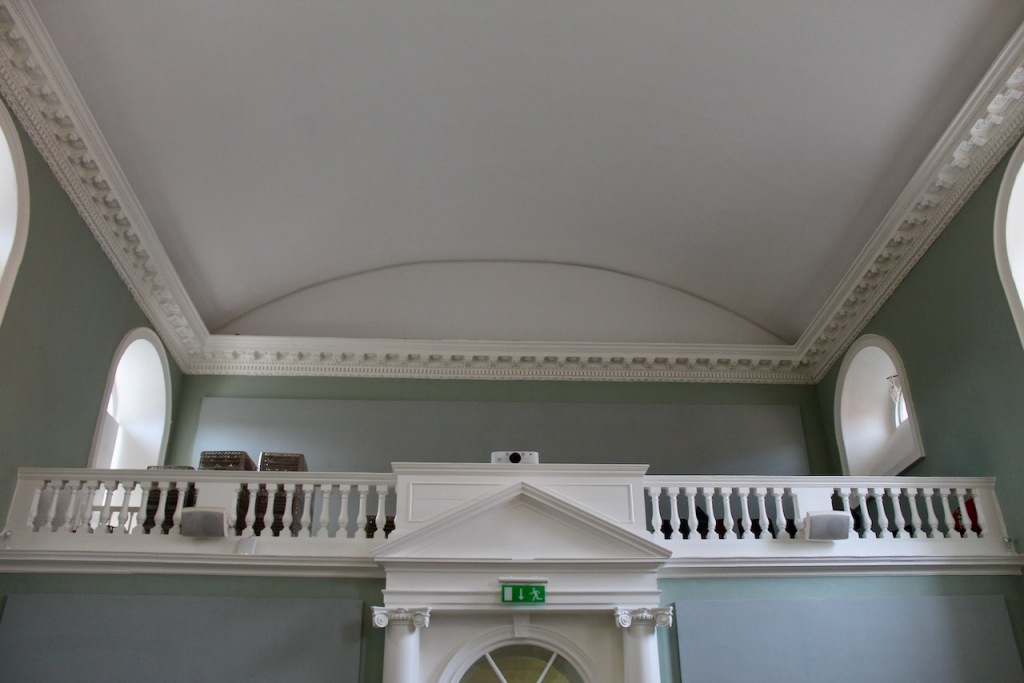
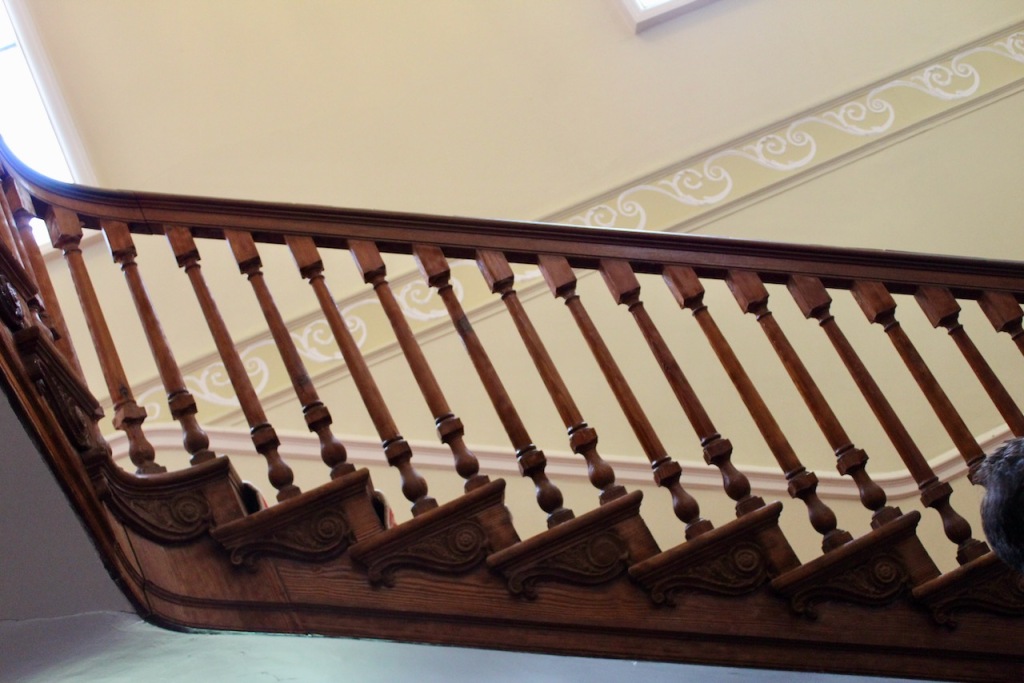
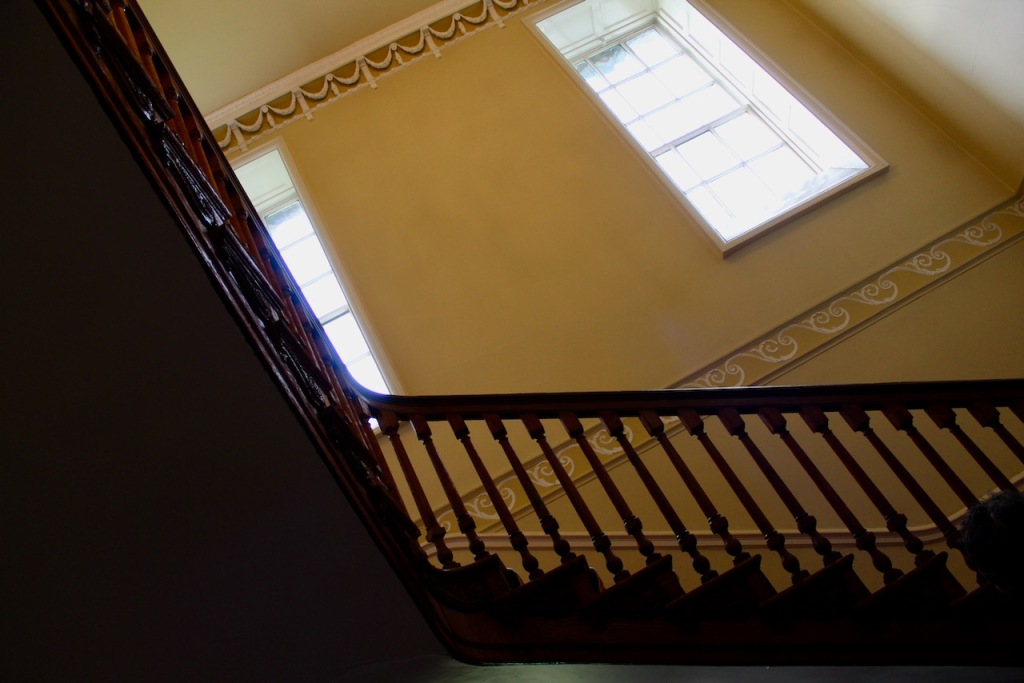
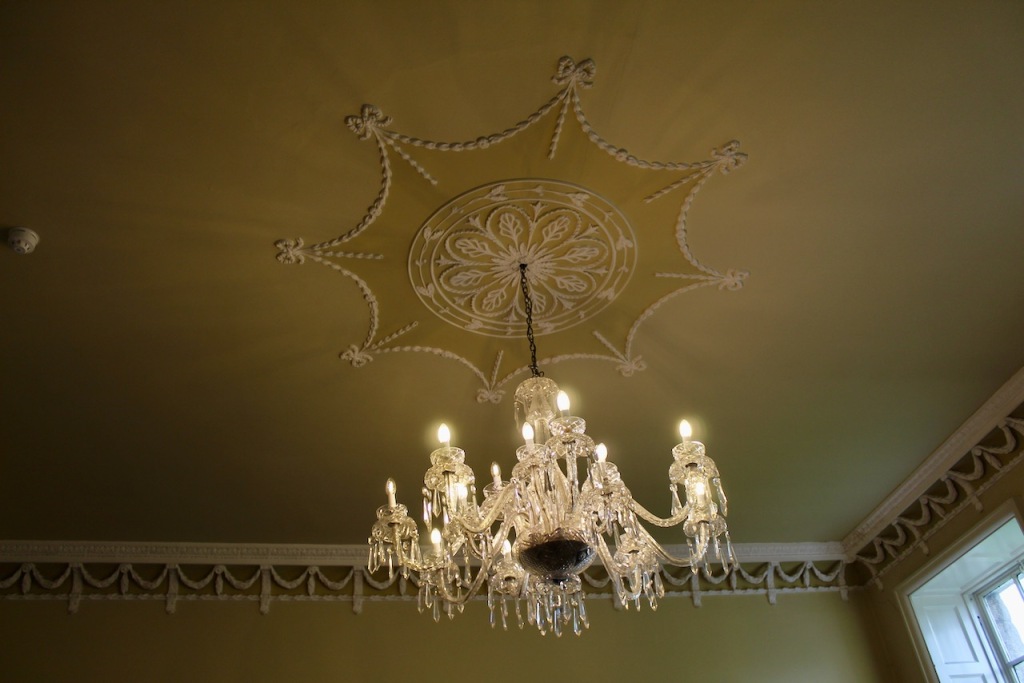
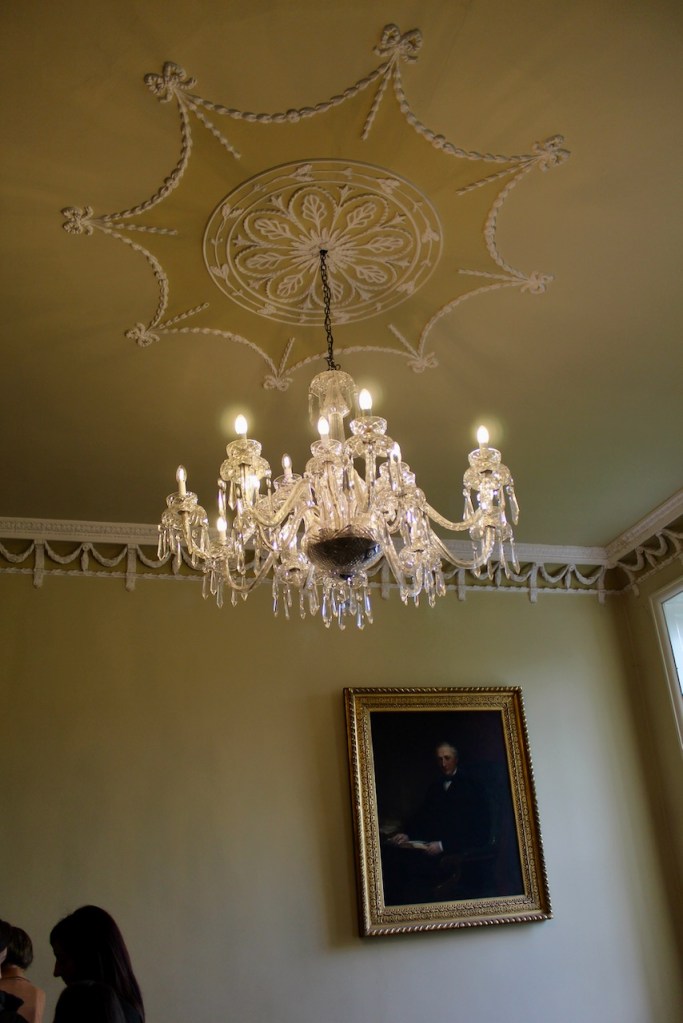
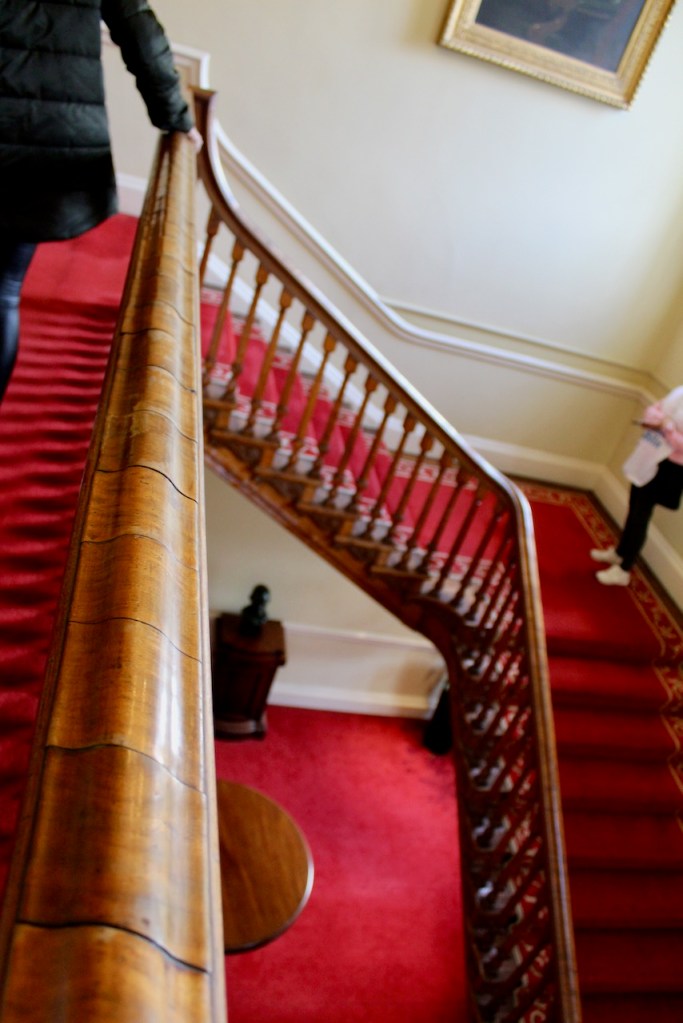




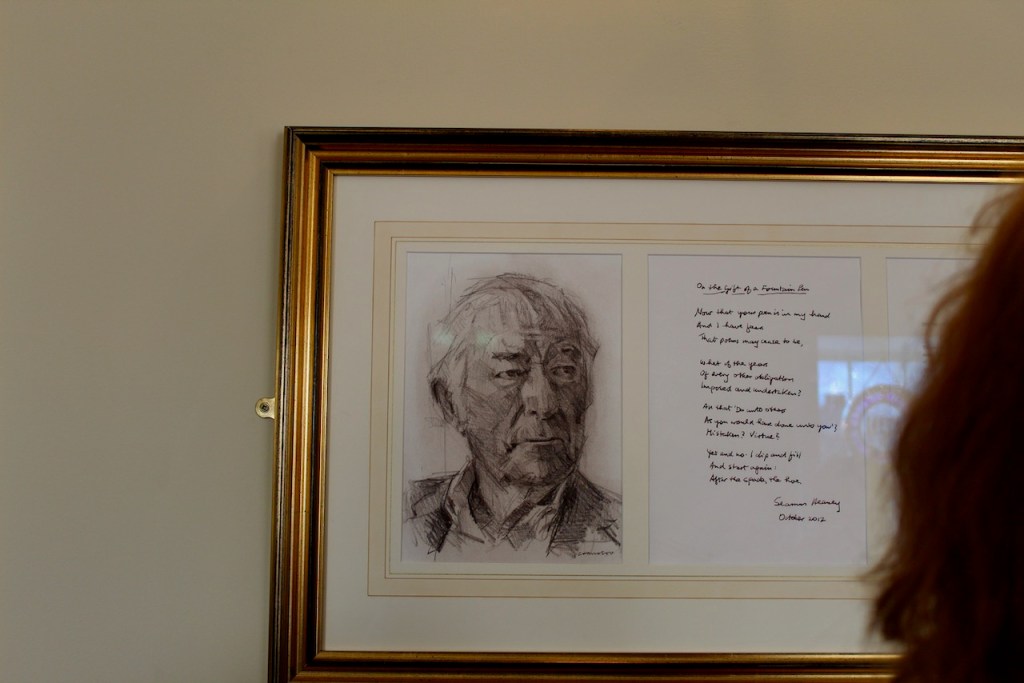
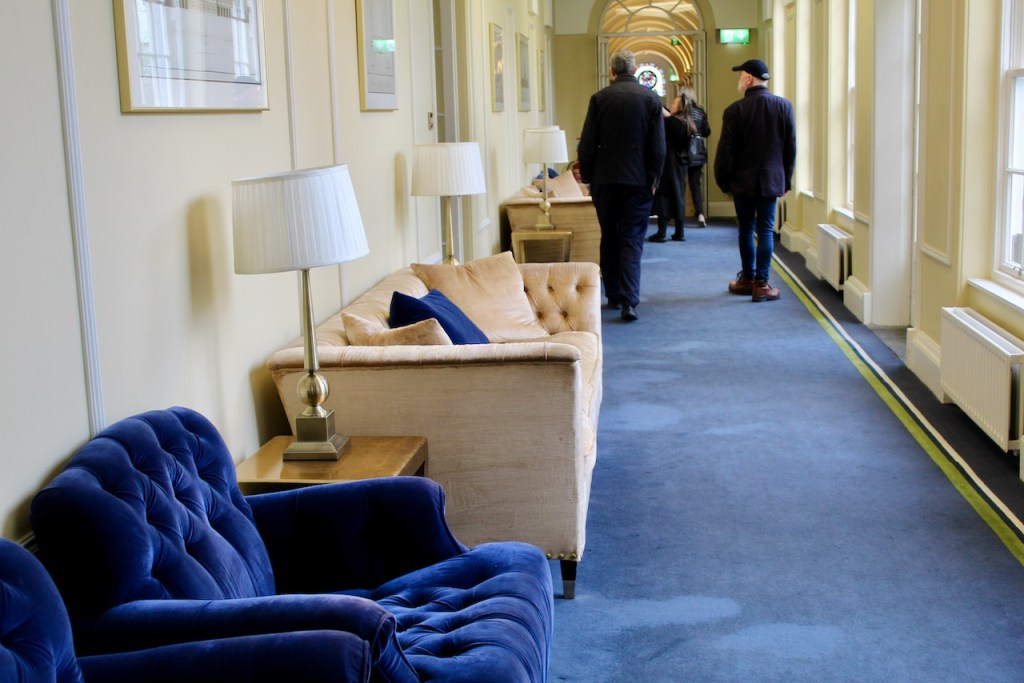
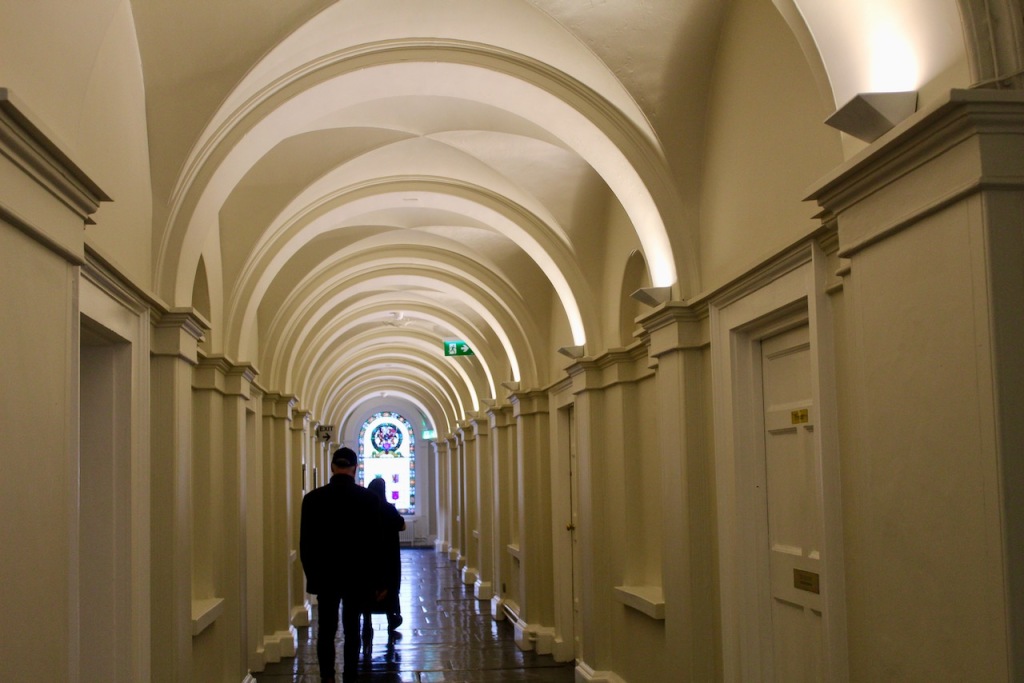

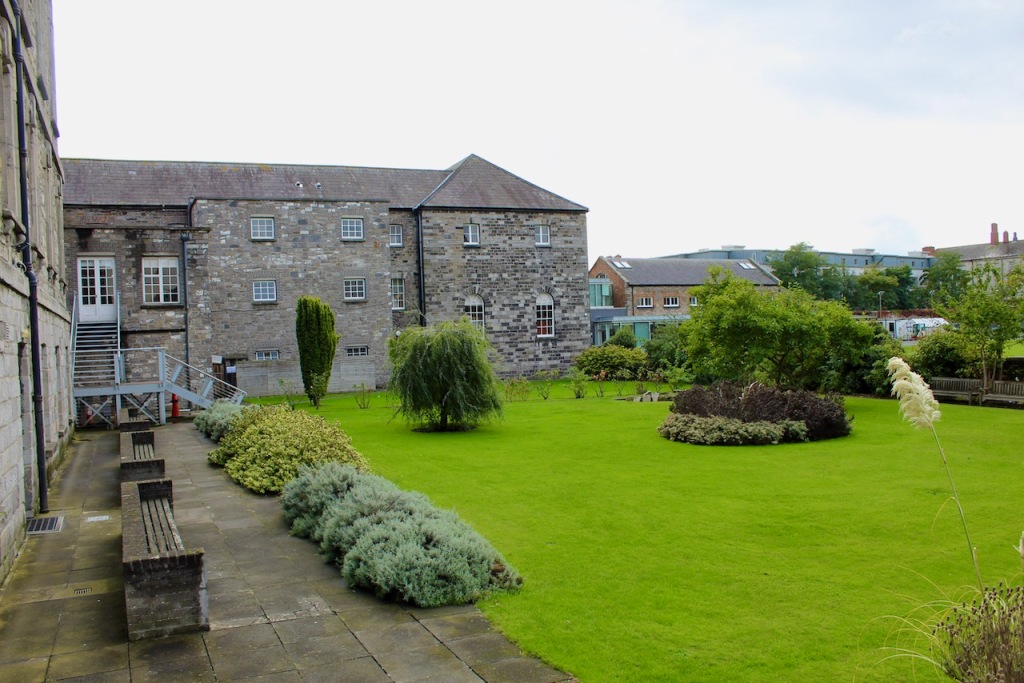

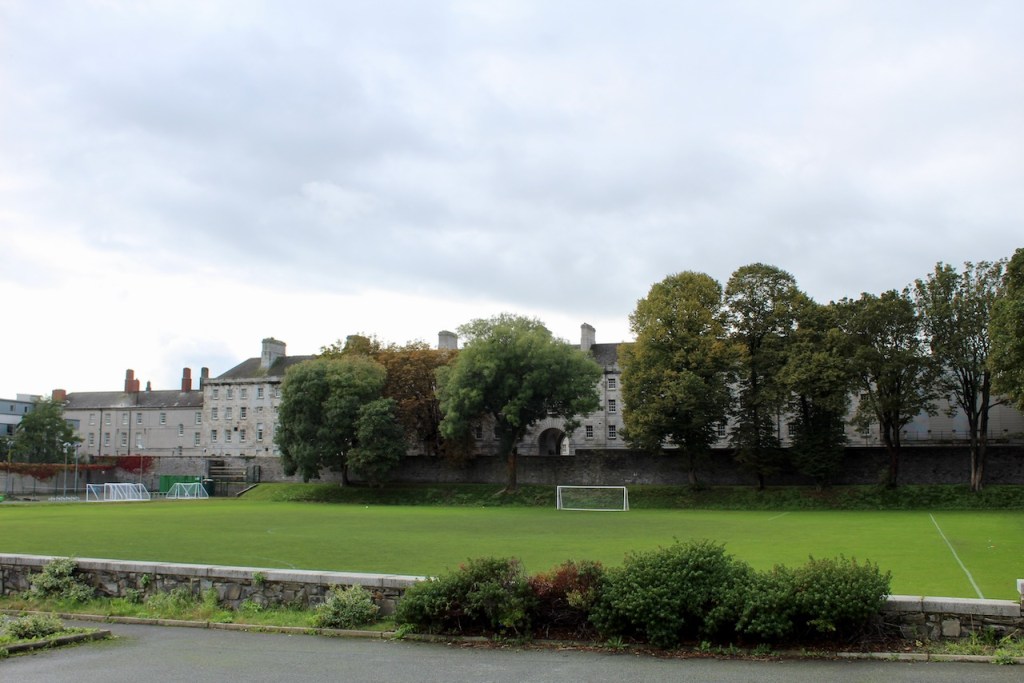
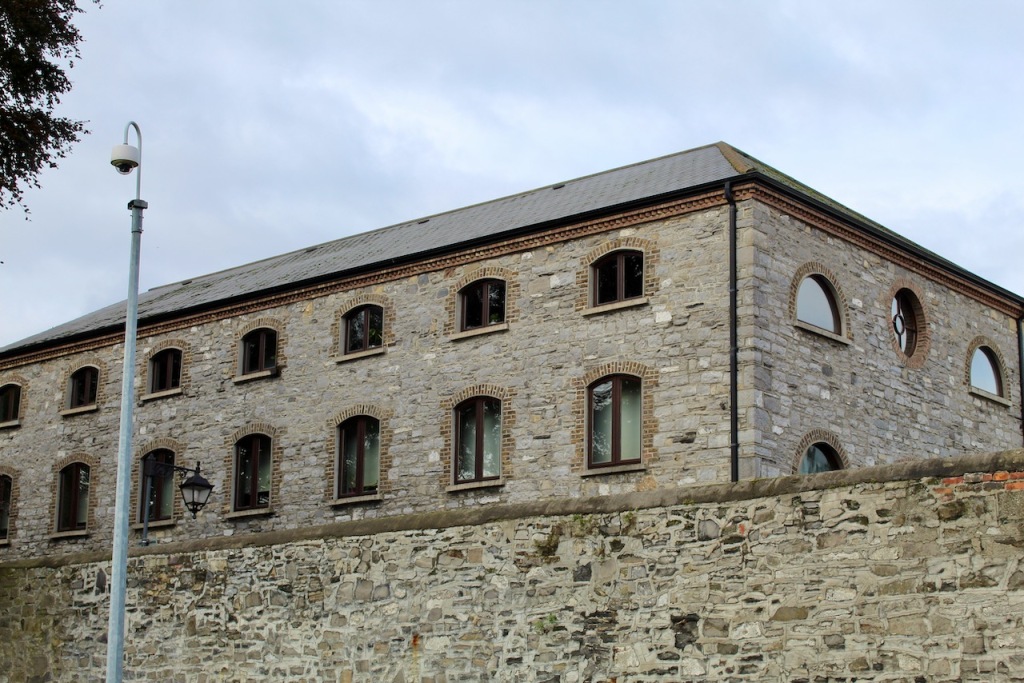


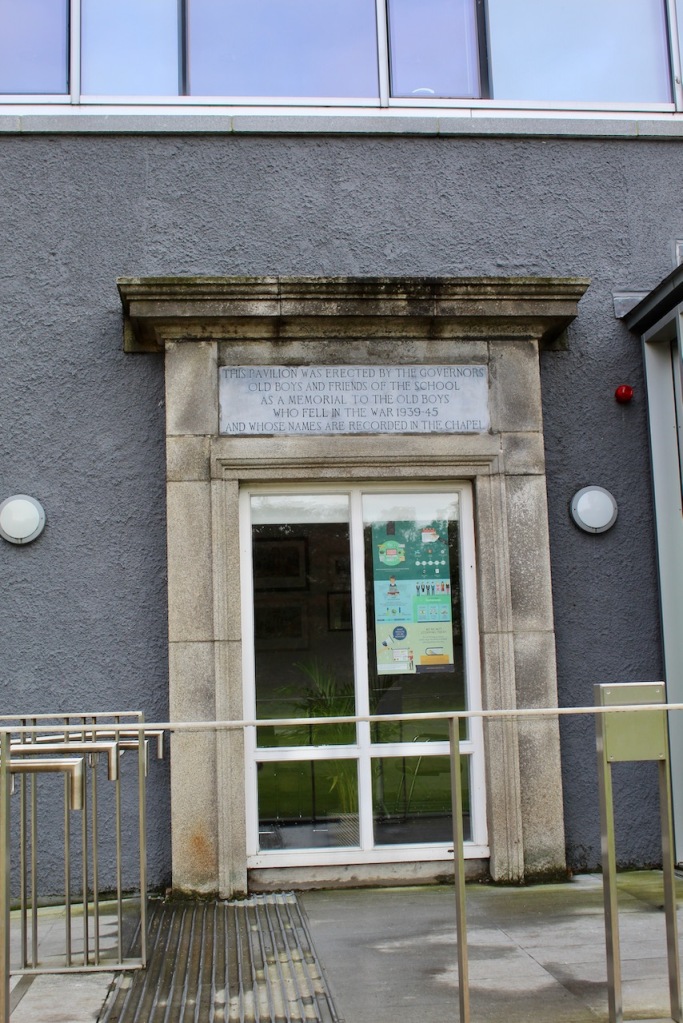


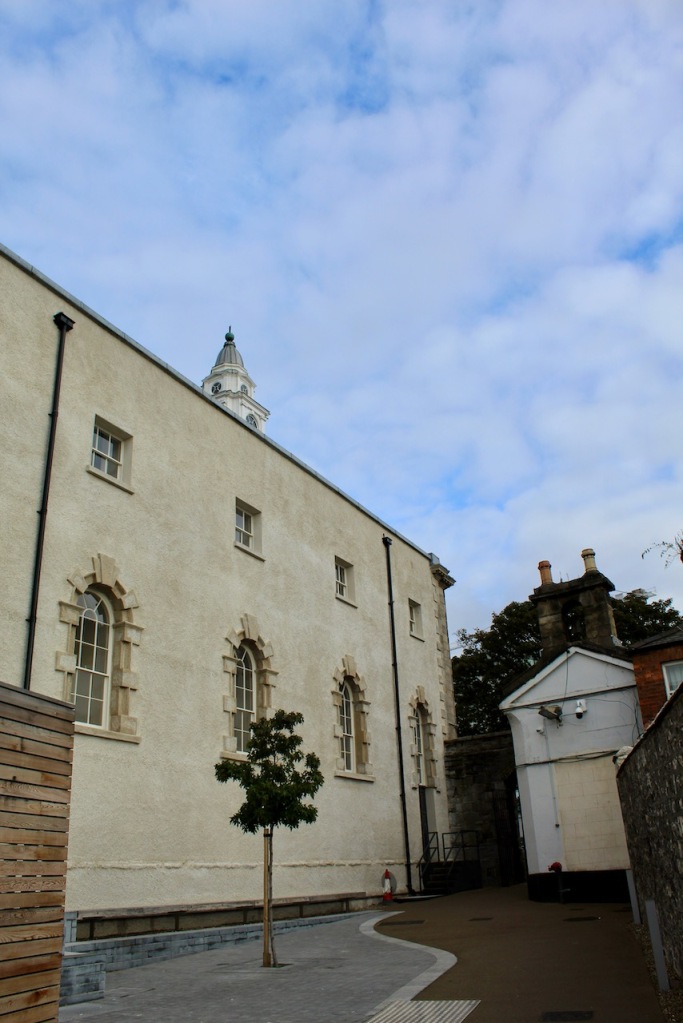
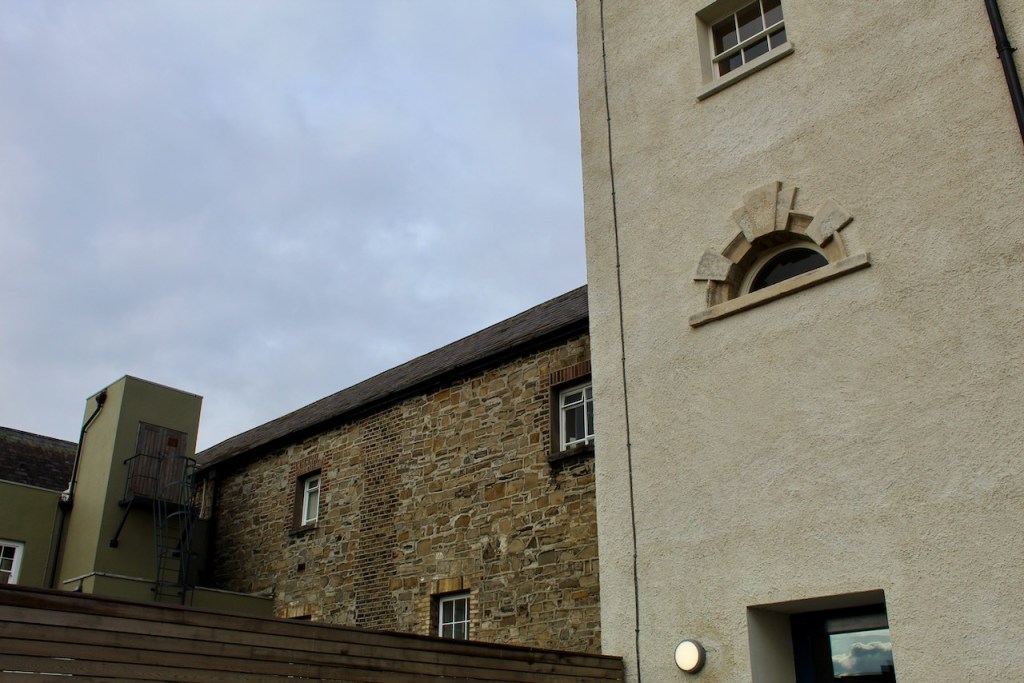
4. City Assembly Hall, Dublin (2012 Culture Night)
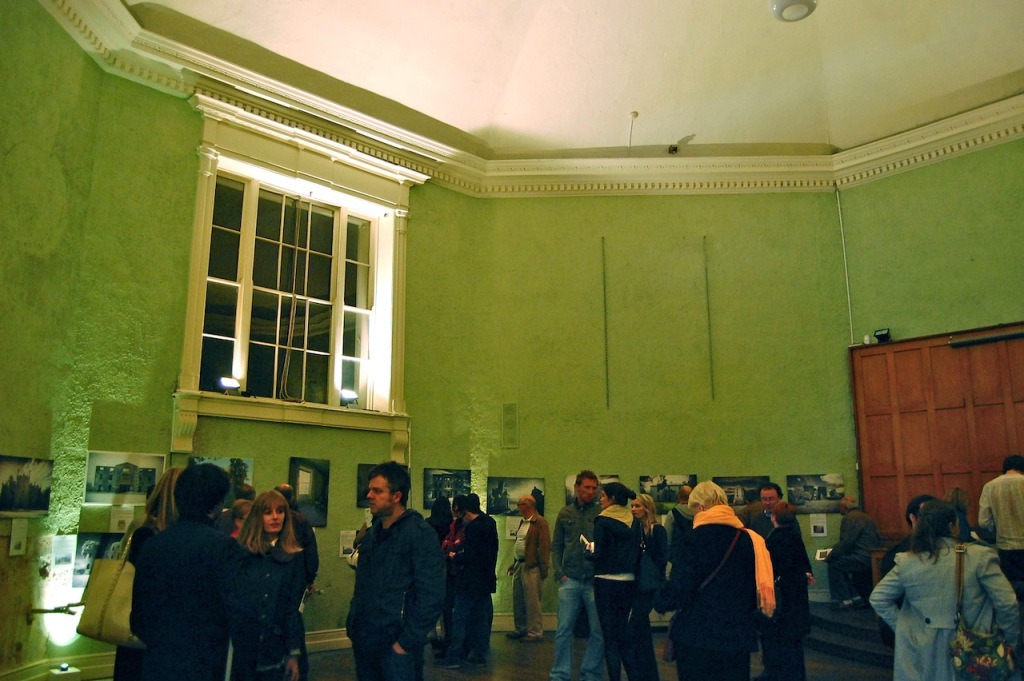

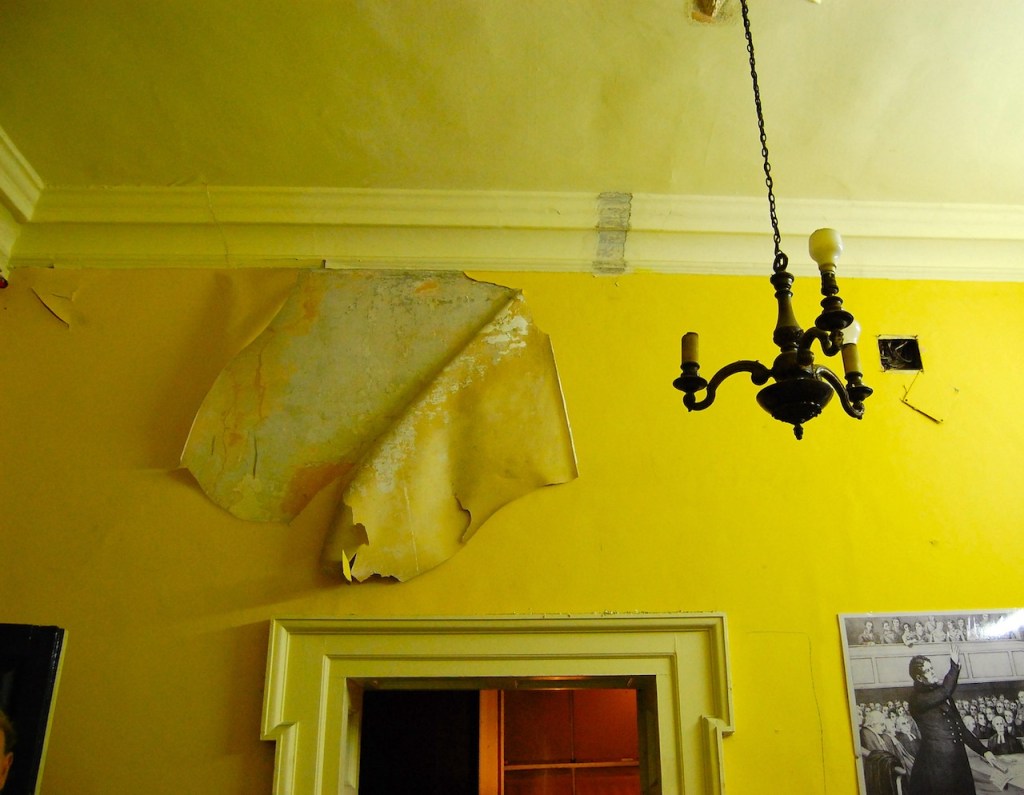

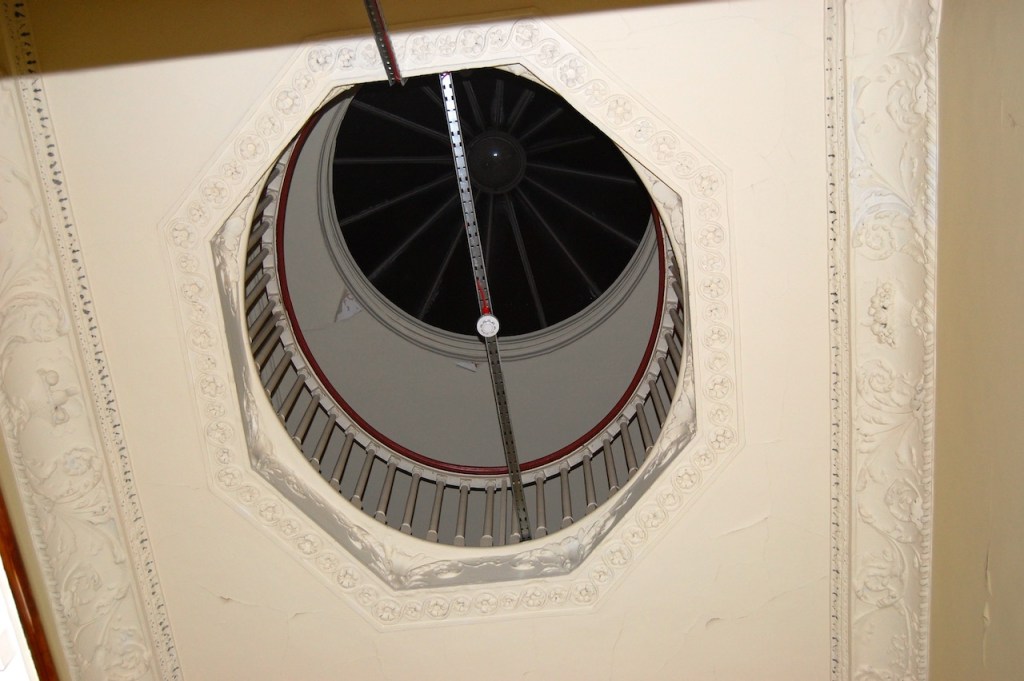
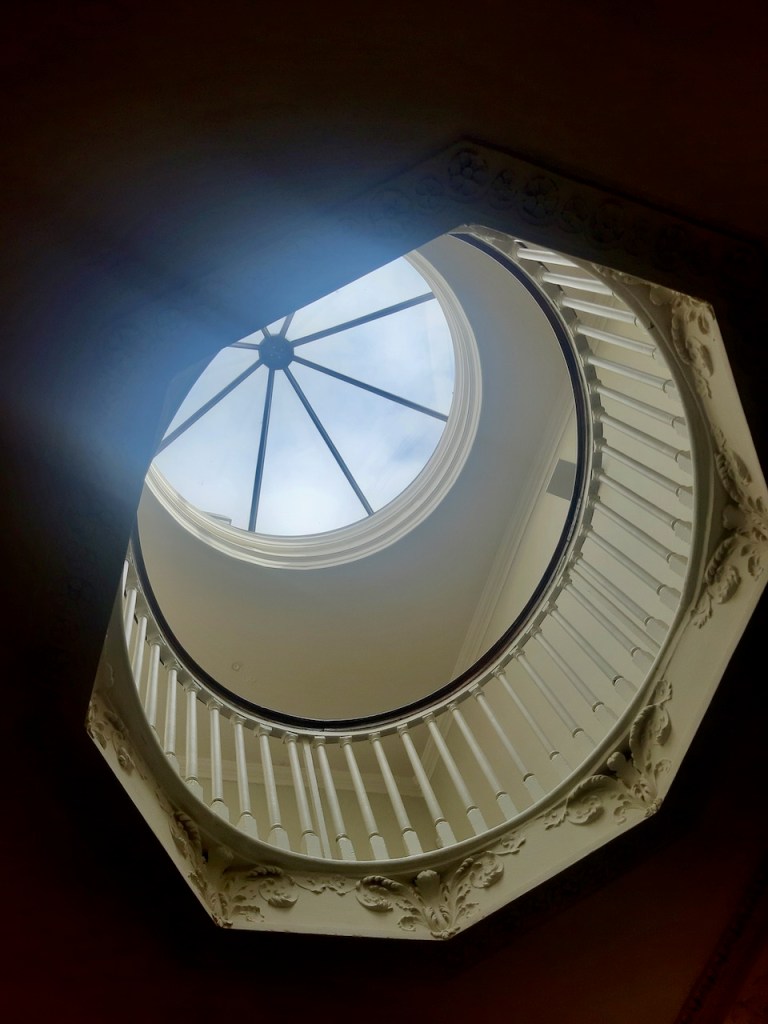

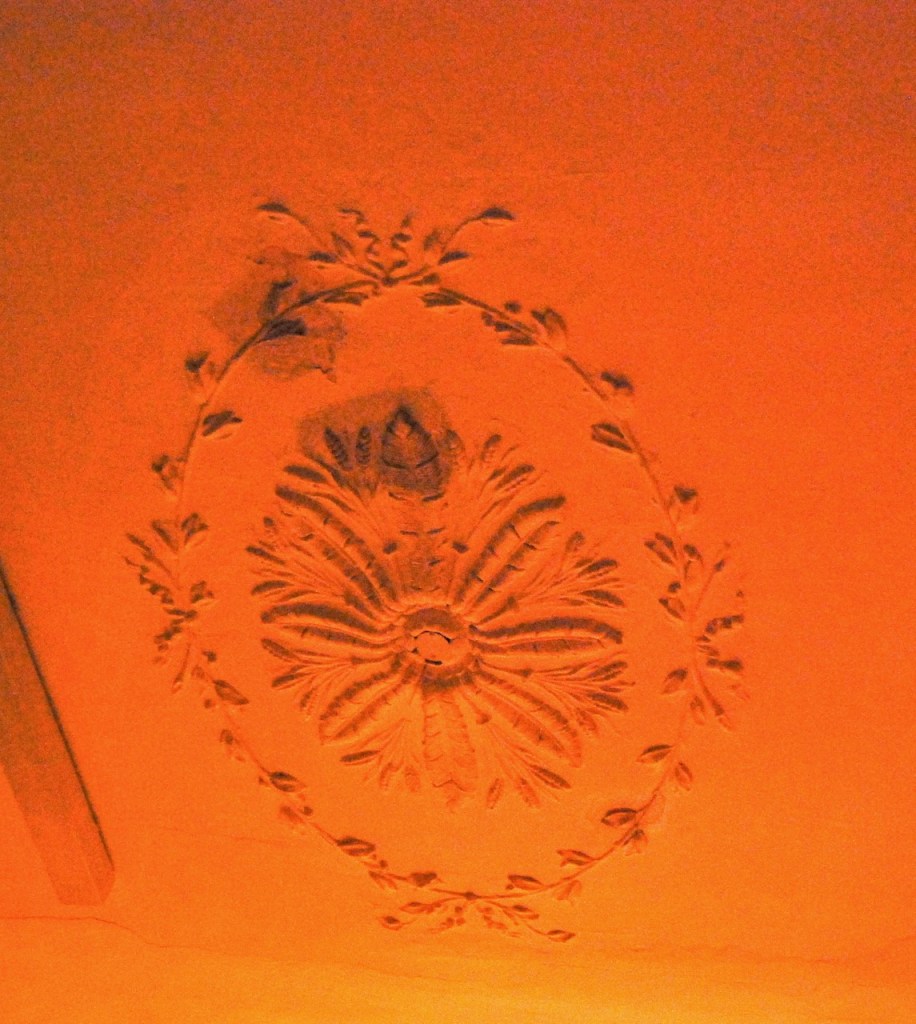


5. Department of Industry and Commerce, Kildare Street (Open House 2019)


The architect was J. R. Boyd Barrett, who won a competition to built it in 1936. It has a stripped Classical design with an Art Deco entrance bay addition. The external relief sculptures are by Gabriel Hayes. The tall round-headed window passes up through the floors to a keystone of representing Eire, with “jazzy” interstitial panels [Archiseek]. On the Schoolhouse Lane side the keystone represents Brendan the Navigator. The main entrance has a heavy cast bronze gates, and the carved lintel of the doorway represents the celtic god Lugh releasing aeroplanes into the air!
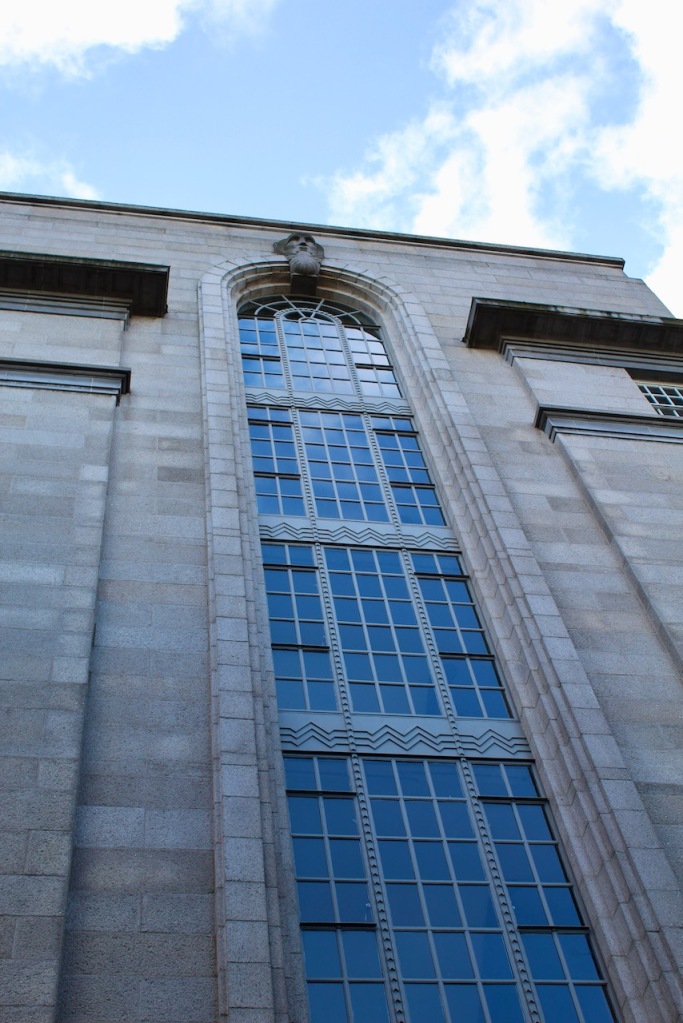

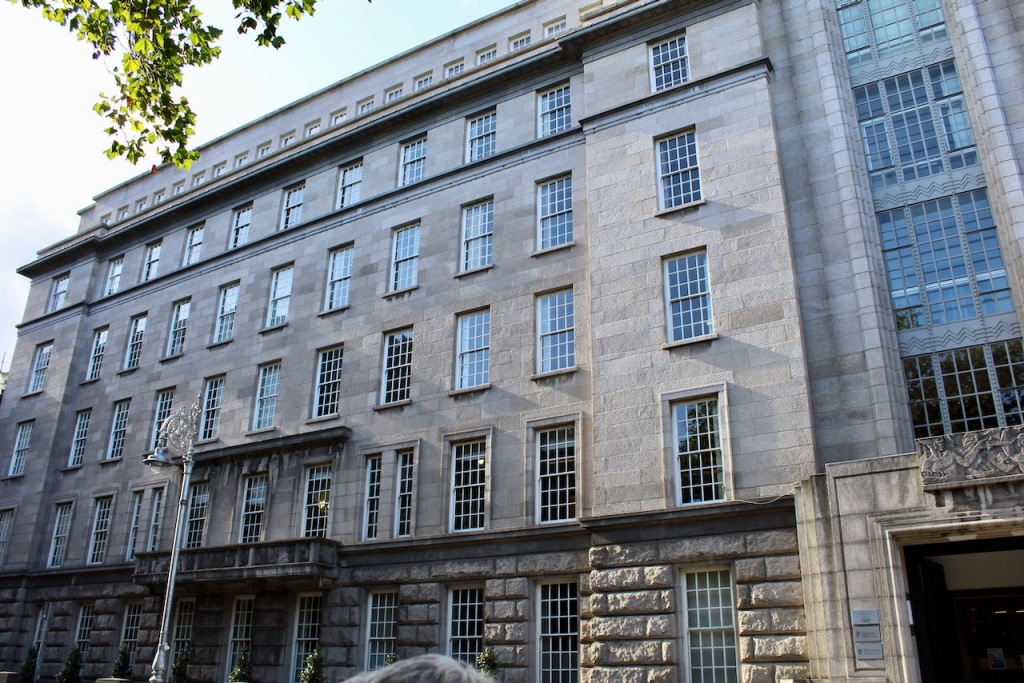
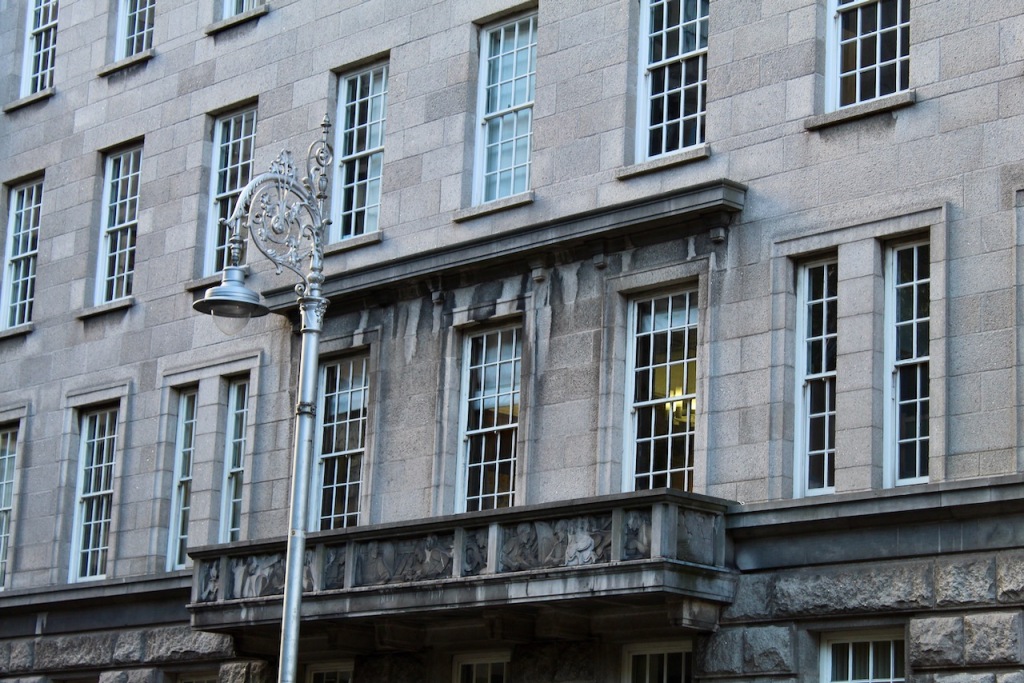
The interiors were also designed by Boyd Barrett and everything from the ashtrays, fireplaces and door handles were specially designed. The interiors feature polished woods and metals and patterned linoleum floors, and the ceilings are deeply coffered.


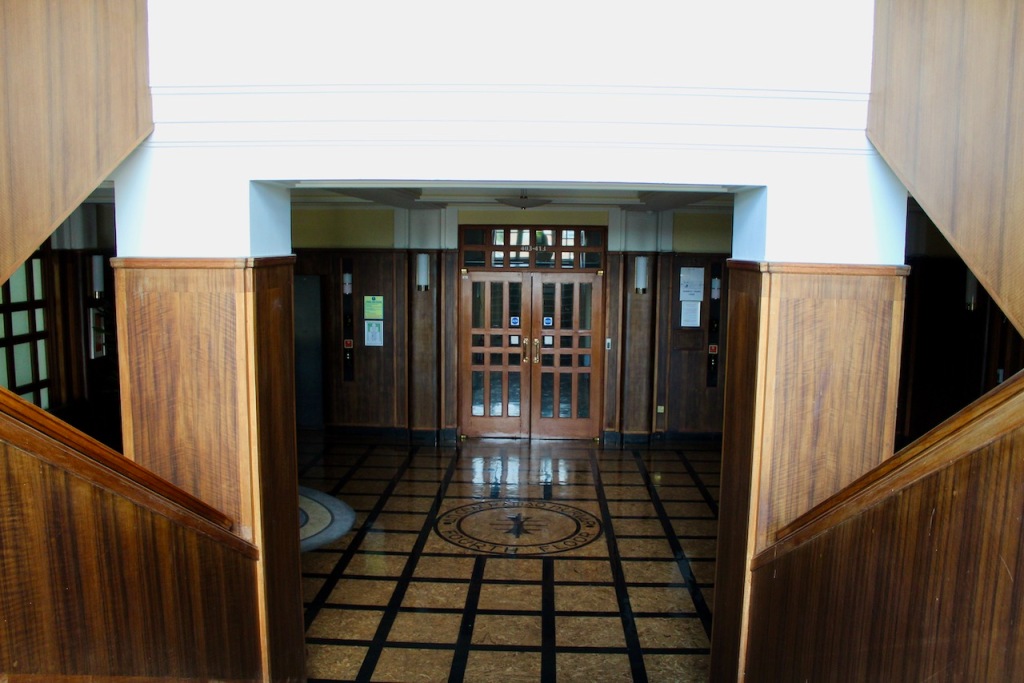
6. Freemason’s Hall, Molesworth Street (Dublin 2010)
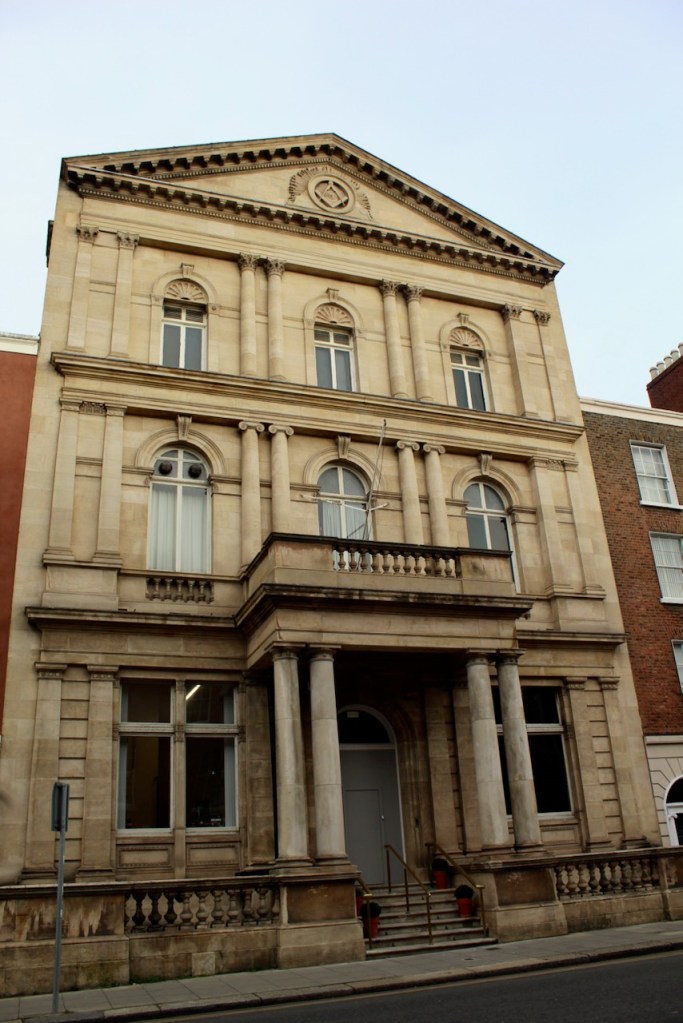
The Freemason’s Hall was built on the site of the townhouse of their first Grand Master, the Earl of Rosse. The building was completed in 1866, designed by Edward Holmes of Birmingham. The architect used three orders on the facade: Doric (lower), Ionic (centre) and Corinthian (upper). The pediment contains the Masonic square and compass.
The inside is an exuberant smorgasbord of themes. The Royal Arch Chapter Room has an Egyptian theme. The Prince Mason’s Chapter Room is Gothic Tudor. The Knights Templar Room is designed as a medieval chapel.
The Irish Builder 1877 described the interior: The main hall “is larger than St. Patrick’s Hall in Dublin Castle…Along each side are six pillars with Corinthian capitals, and there are two of the same style at each end. These are painted to represent white enamel. The capitals are gilt, the pedestals and lower part of the wall are painted a rich chocolate colour; between the pillars the wall spaces are painted a light dun colour, each space being formed into a large panel by a matted gilt moulding with a deep margin of grey. The pillars support a richly designed and gilt entablature. From this spring five semi-circular arches on each side. These arches contain a series of ten cartoons, illustrative of the building of Solomon’s Temple. The ceiling is intersected by beams, which divide it into five panels, and is painted blue, and studded with gold stars. The intersecting beams, together with the architrave and cornice, are cream colour and white, relieved with gold. The predominating colour in the painting of the hall is blue, in order to meet Masonic requirements, that colour being associated with the lower ranks of the order, and the hall being used for general meetings; but other tints are introduced in sufficient abundance. The cartoons have been painted in sepia by Mr. Edward Gibson, Great Russell Street, London, son of Mr. James Gibson of Mary Street, Dublin, by whom the entire of the rest of the hall was designed and finished...”


7. Georgian Townhouse, 25 Eustace Street (2011)
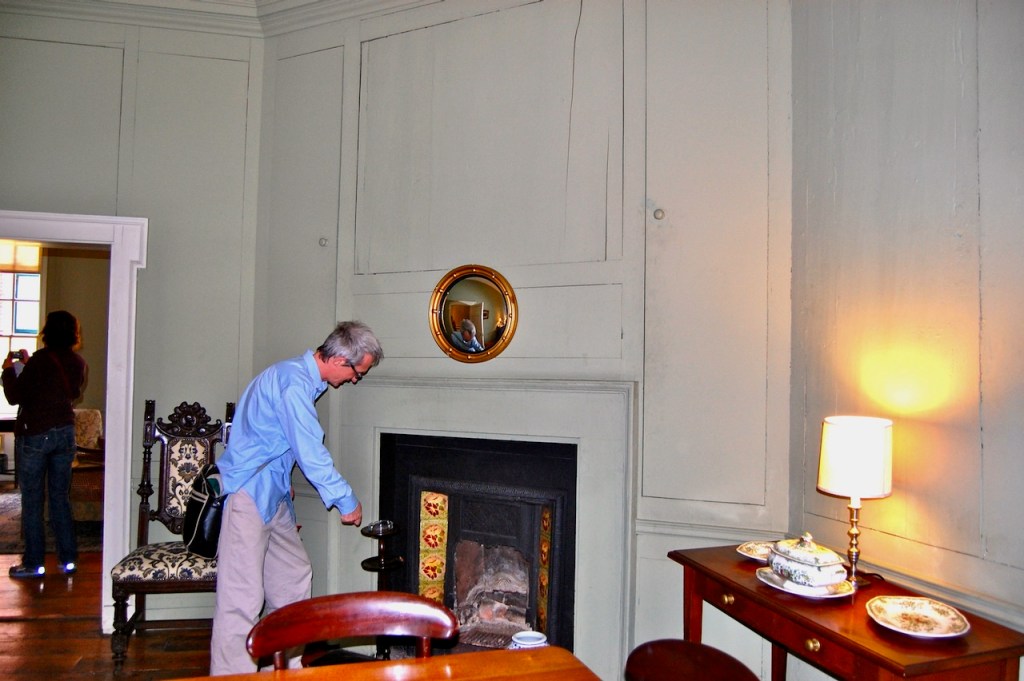
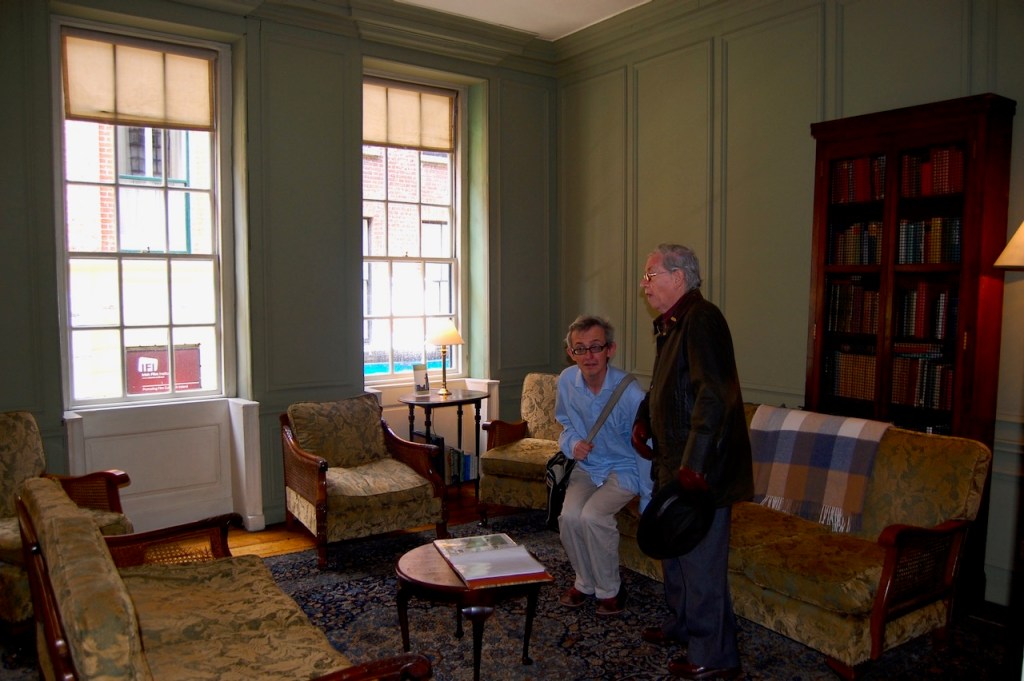
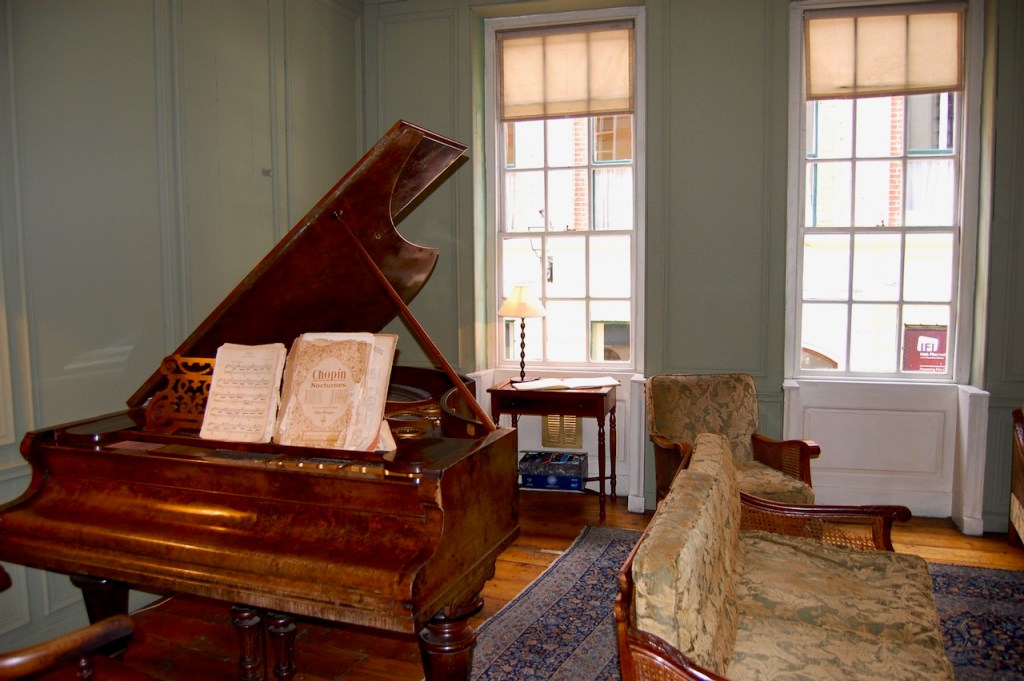
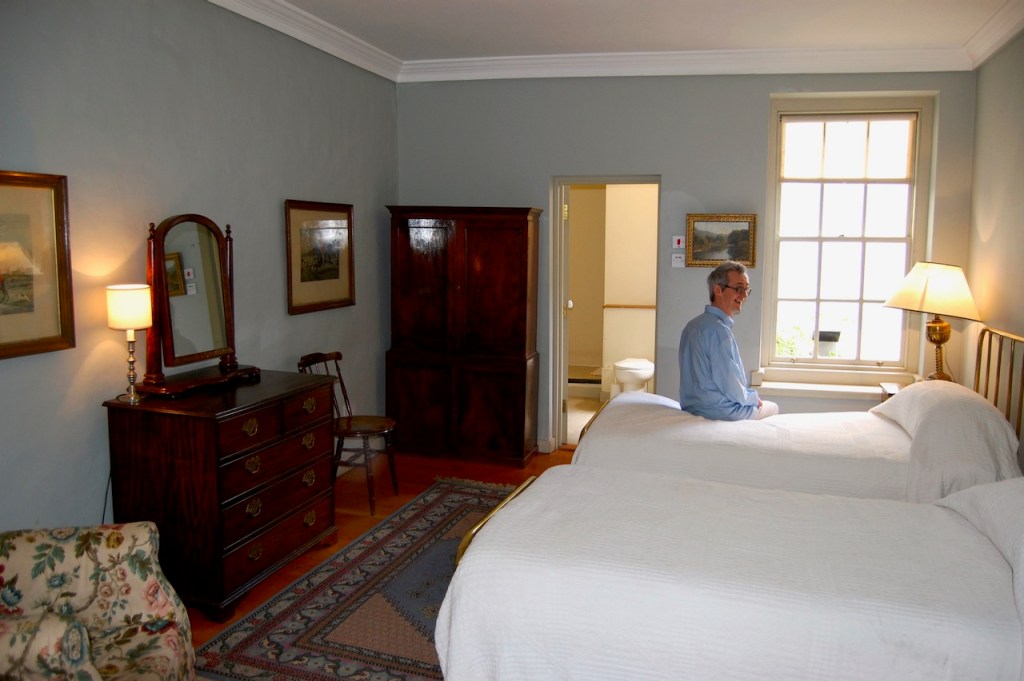
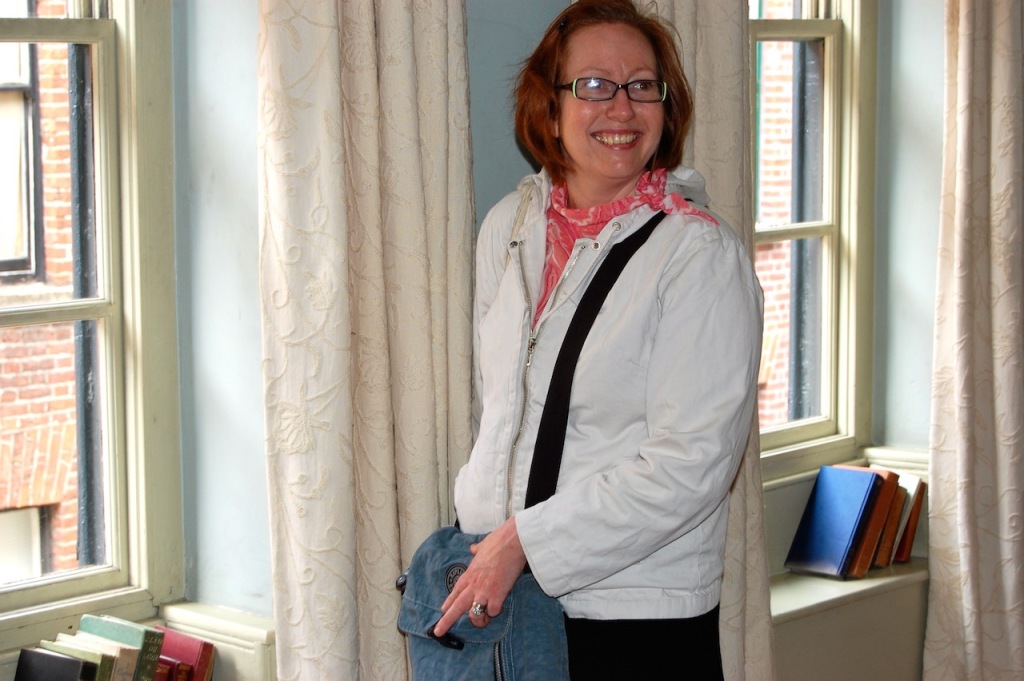
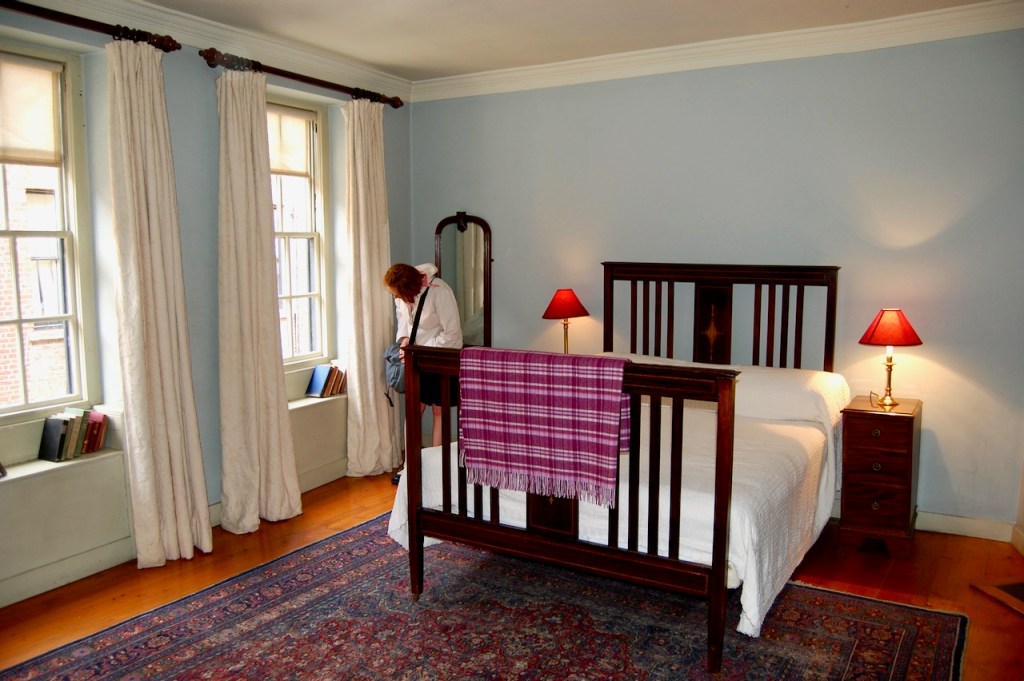
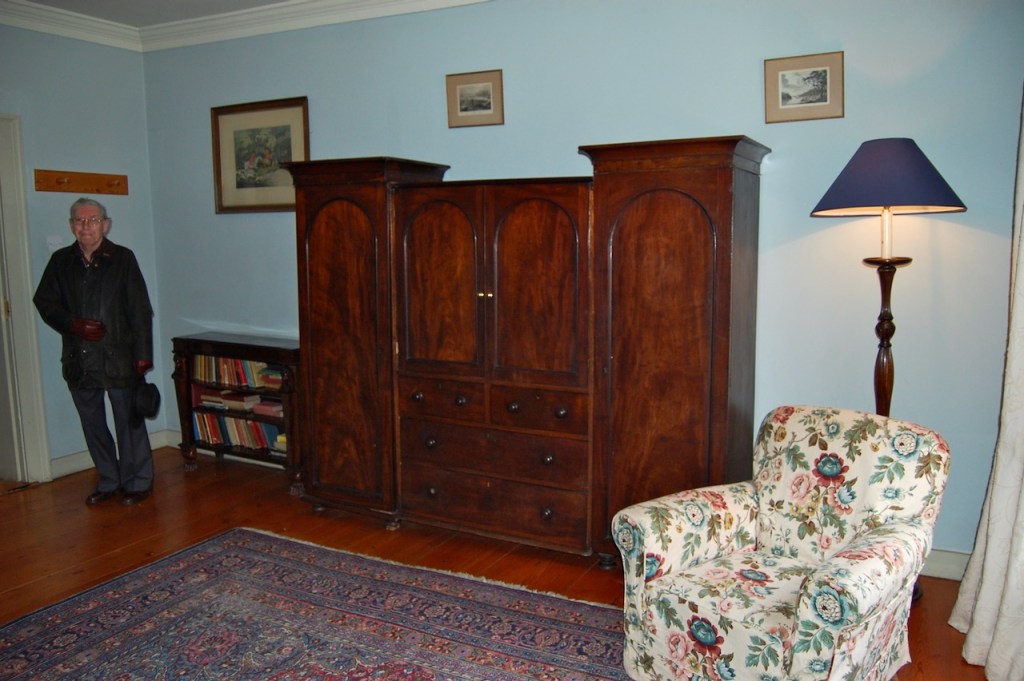

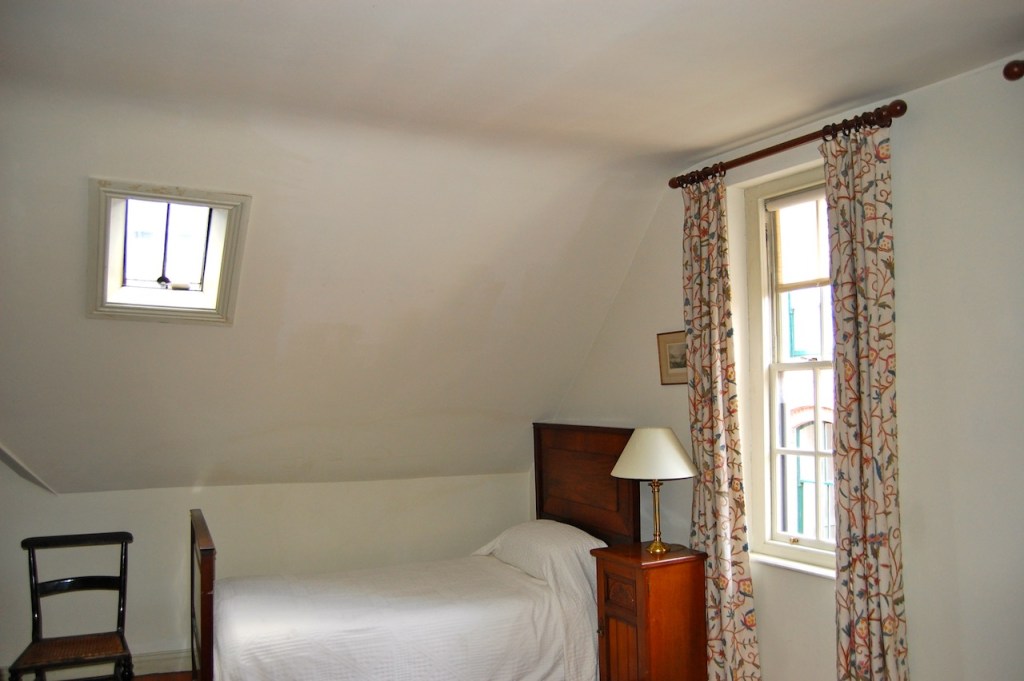
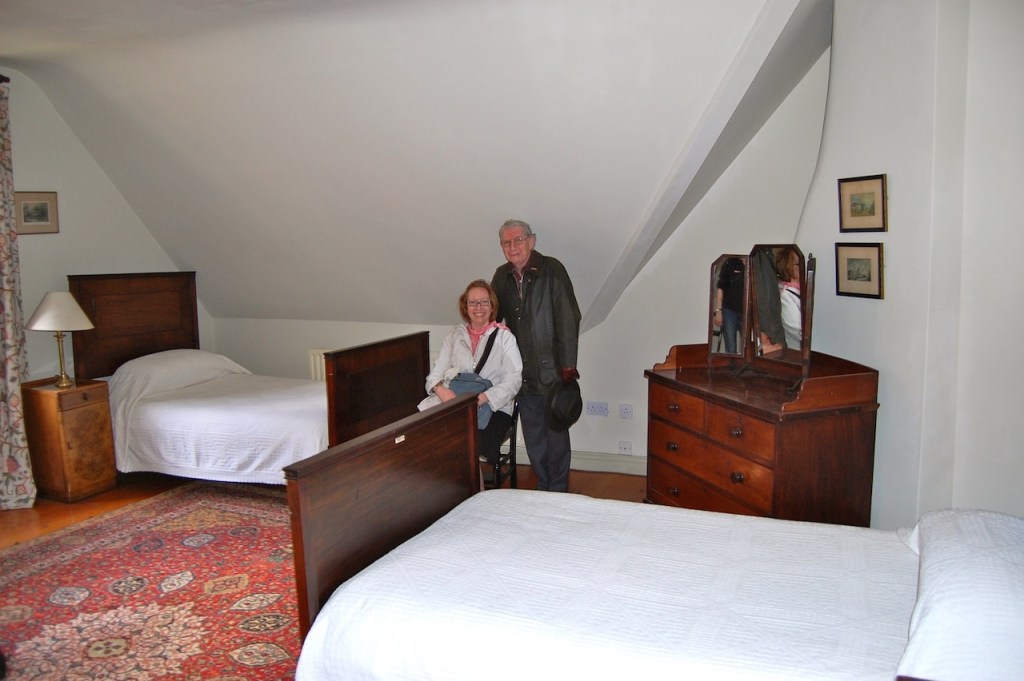
8. 10 Henrietta Street, (Blessington House), Dublin (2011)
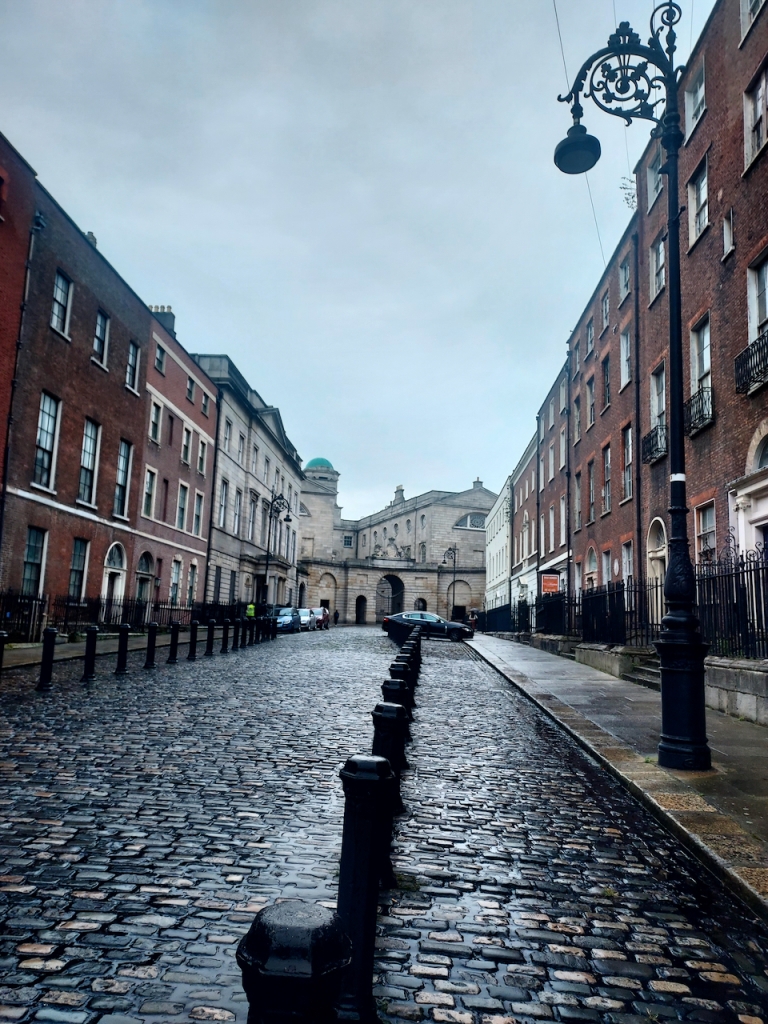
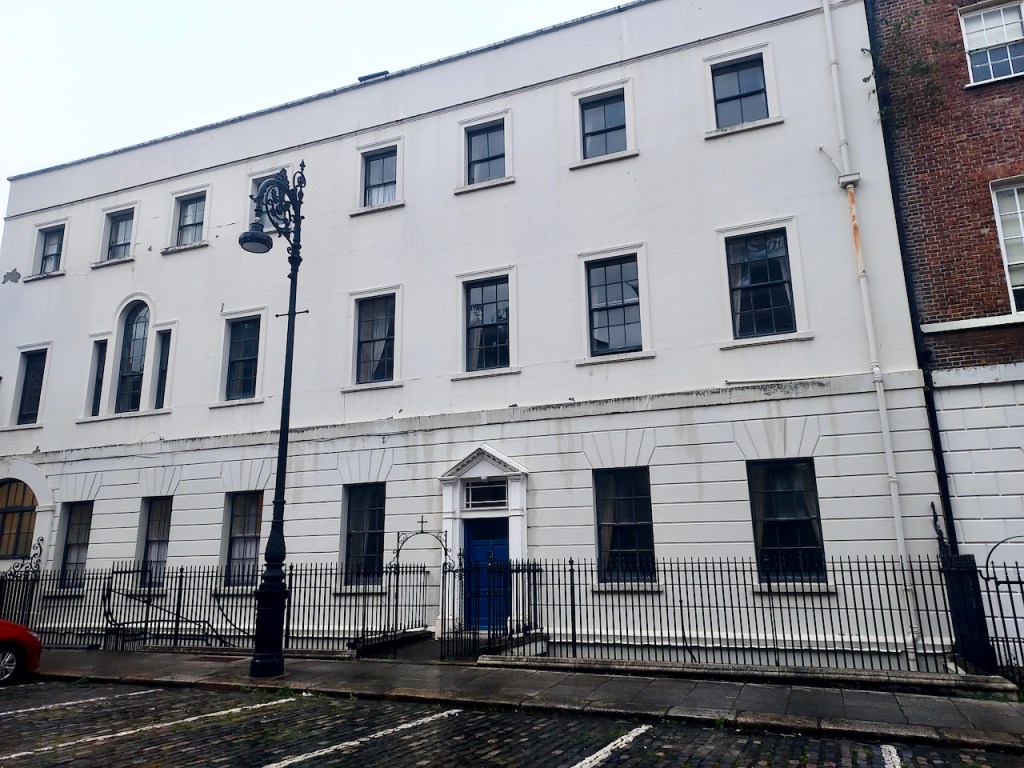
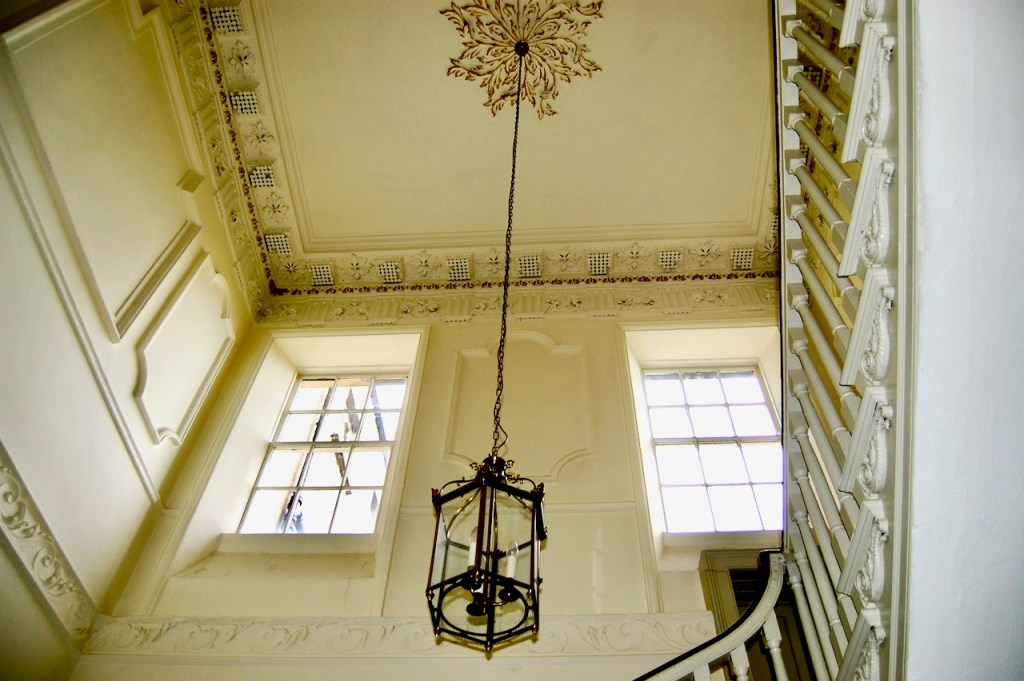
The Archiseek website tells us:
“It was built circa 1730 by Luke Gardiner [1690-1755] as his own residence. The design of the original building has been attributed to Sir Edward Lovett Pearce. The building is a three storey, eight bay over basement house with a Venetian window between the second and third bays at first floor level. Two major interiors of the 1730’s survive, the upper part of the original main stair hall and a rear room on the ground floor. The first floor reception rooms were embellished with Rococo plasterwork circa 1760. Luke Gardiner was succeeded on his death in 1755 by his son, the Right Honourable Charles Gardiner PC, MP, Surveyor General of Customs and Ranger of the Phoenix Park [The original house was extended to the west c.1755 by Charles Gardiner]. Following his death in 1769, his son, the right honourable Luke Gardiner MP succeeded. He was created Baron Mountjoy in 1779, Viscount in 1795 and killed in the Battle of New Ross, County Wexford in 1798. He was succeeded by his son Charles John Gardiner, Second Viscount Mountjoy, created Earl of Blessington in 1816.

Luke Gardiner, M.P., (d.1755), Vice-Treasurer of Ireland and building developer in Dublin Engraver John Brooks, Irish, fl.1730-1756 After Charles Jervas, Irish, c.1675-1739, photograph courtesy of National Gallery of Ireland.
The Earl died in 1829 without male heirs and the house was leased to a succession of lawyers becoming the Queen’s Inn Chambers in the late 19th century. It was acquired in the early 20th century by the French Order of Daughters of Charity of St Vincent de Paul to provide relief to distressed females. The work of the order continues today and the building is actively used for a variety of community and social services projects.
The 2001 Europa Nostra Restoration Fund Grant generously contributed to the restoration of the decayed decorative Rococo ceiling on the first floor. The restoration works were also co-funded by a grant from Dublin City Council.”

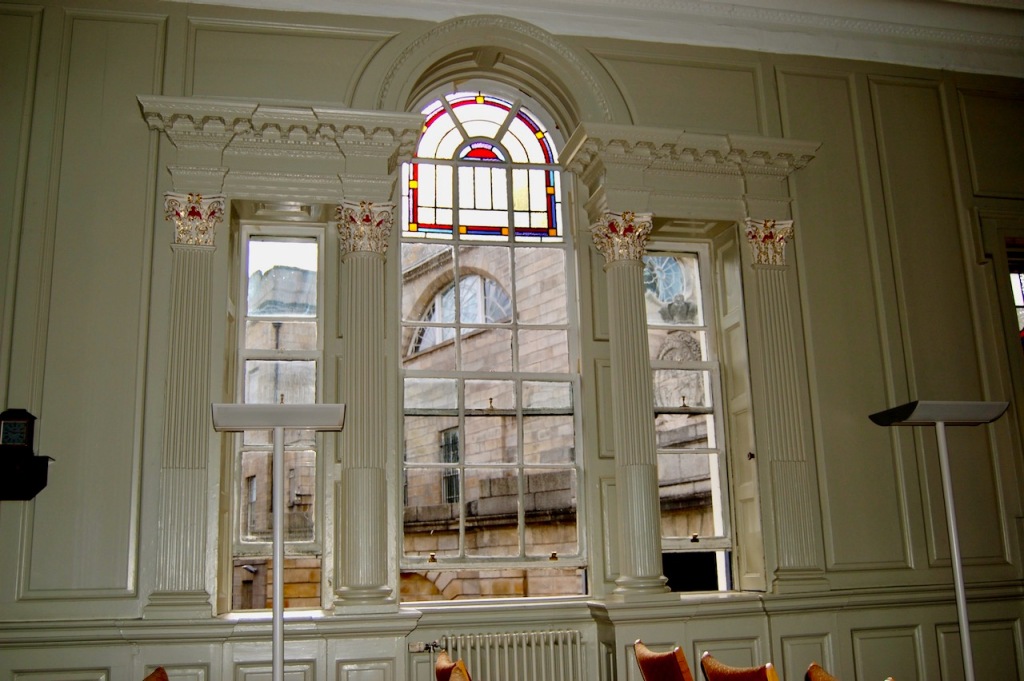
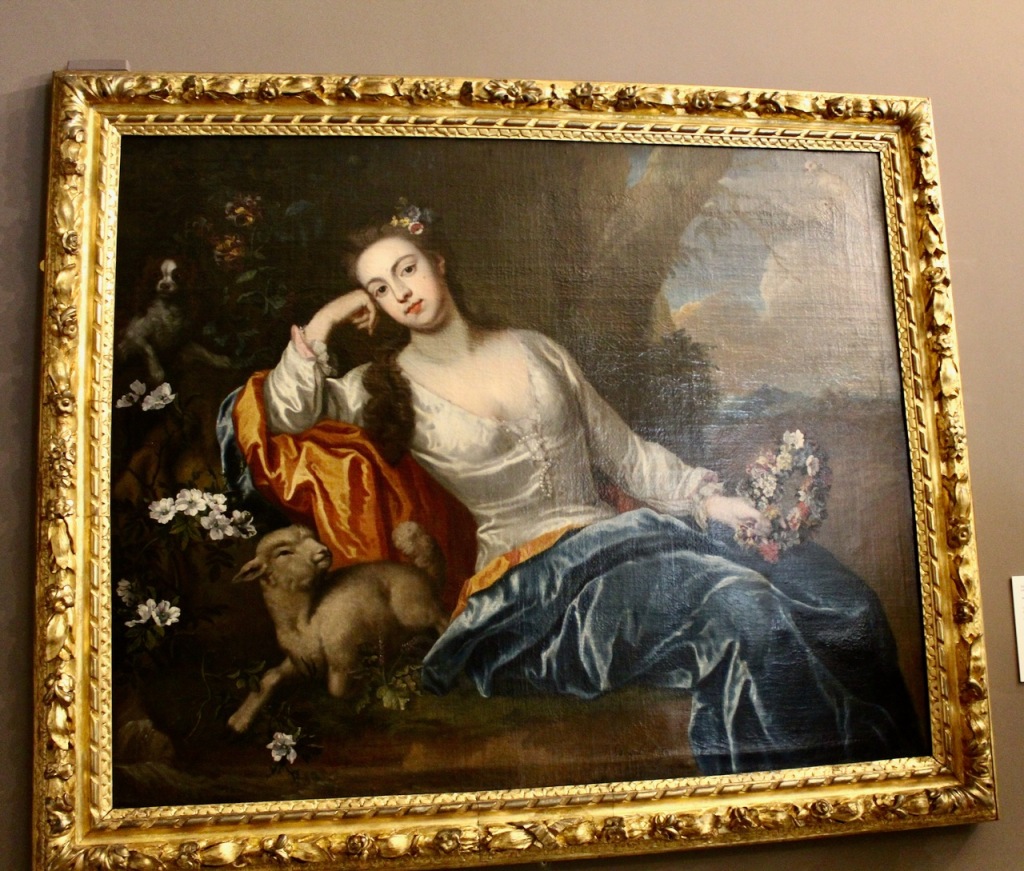
The Archiseek website quotes The Irish Builder, July 15 1893:
“This magnificent mansion was erected about the year 1725, by the Rt. Hon. Luke Gardiner, grandfather of the 1st Viscount Mountjoy, ancestor of the Earl of Blesinton, and may be described as the Manor House of Henrietta-street. The reception-rooms are seven in number, and the cornices and ceilings are finished in a rich and antique style.
The ball-room is a noble apartment; the architraves of the doors and windows are adorned with fluted Corinthian columns sur mounted by pediments. The drawing-room, to the left of the ante-room on the first floor, possesses a beautifully carved oak cornice, the effect of which is peculiarly striking. The front staircase is spacious and lofty; the walls are panelled, and the ceiling is handsomely ornamented. The principal dining room, looking into the garden, is square, with fine stuccoed ceiling, and walls in square panels stuccoed, the squares broken off at the angles by curves. The architraves of the parlour doors are as rich as carving could make them. There is a mock key-stone or block of wood that for elegant and elaborate carving in relief cannot be surpassed. The stuccoed ceilings are in panels with enriched fillets, quite palatial, and only in the ball room are seen arabesques in the centre. The window of the ball-room, which is over the porte-cochère, has three opes, the centre ope being arched, and this is the only architectural adornment externally. Mountjoy House had originally a fine porte-cochère, or covered carriage entry, arched with cut stone, on the park side, next to the present King’s Inns buildings.” [1]

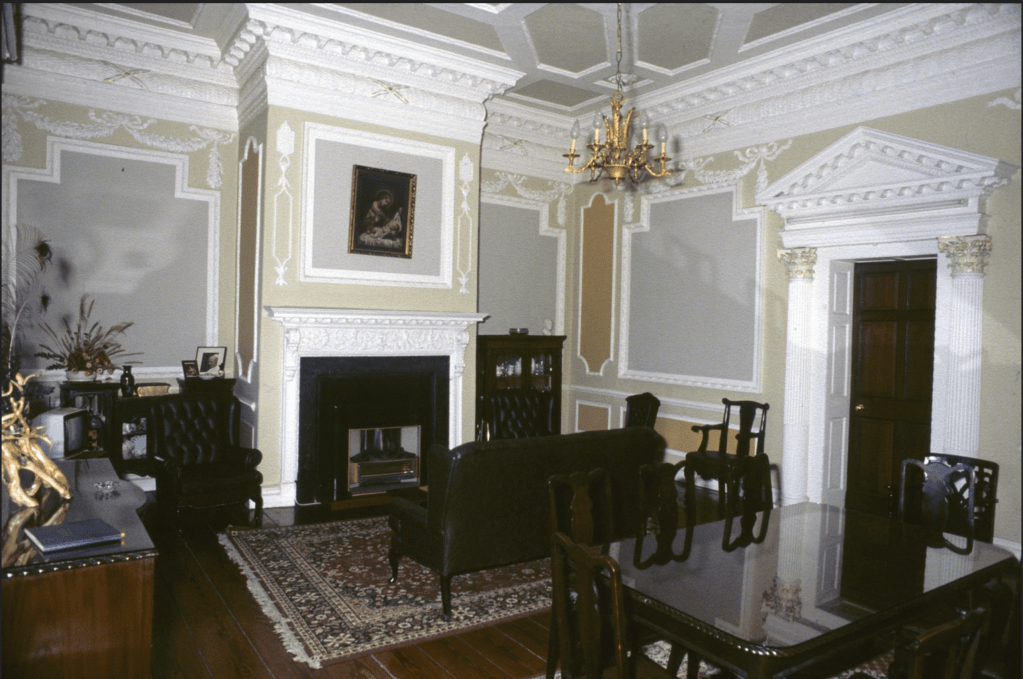
See also the wonderfully informative book, The Best Address in Town: Henrietta Street, Dublin and its First Residents 1720-80 by Melanie Hayes, published by Four Courts Press, Dublin 8, 2020.
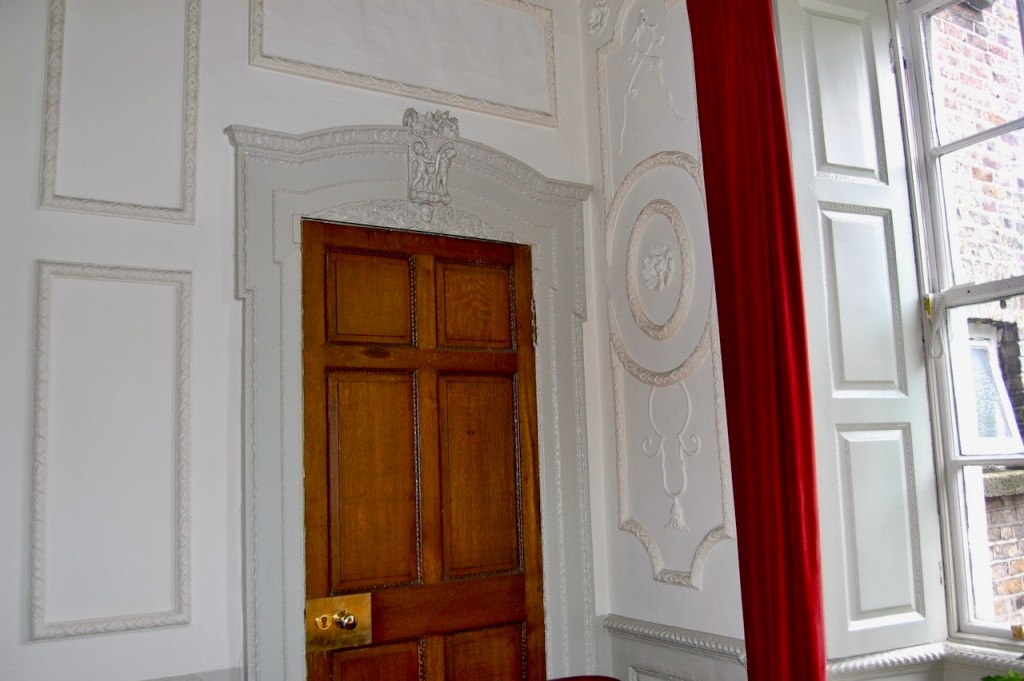
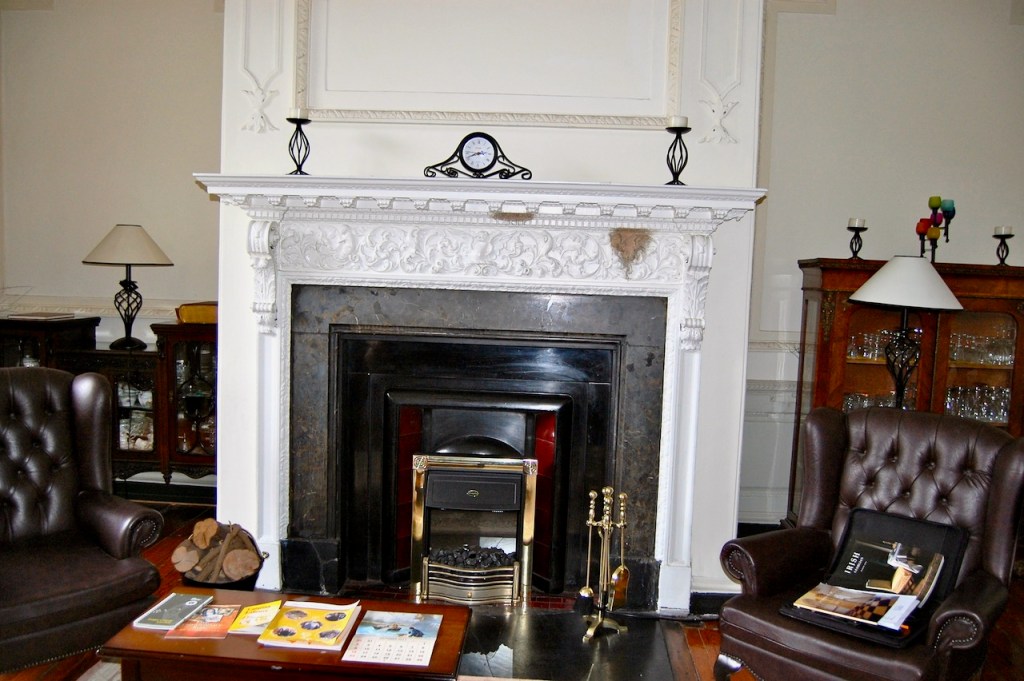
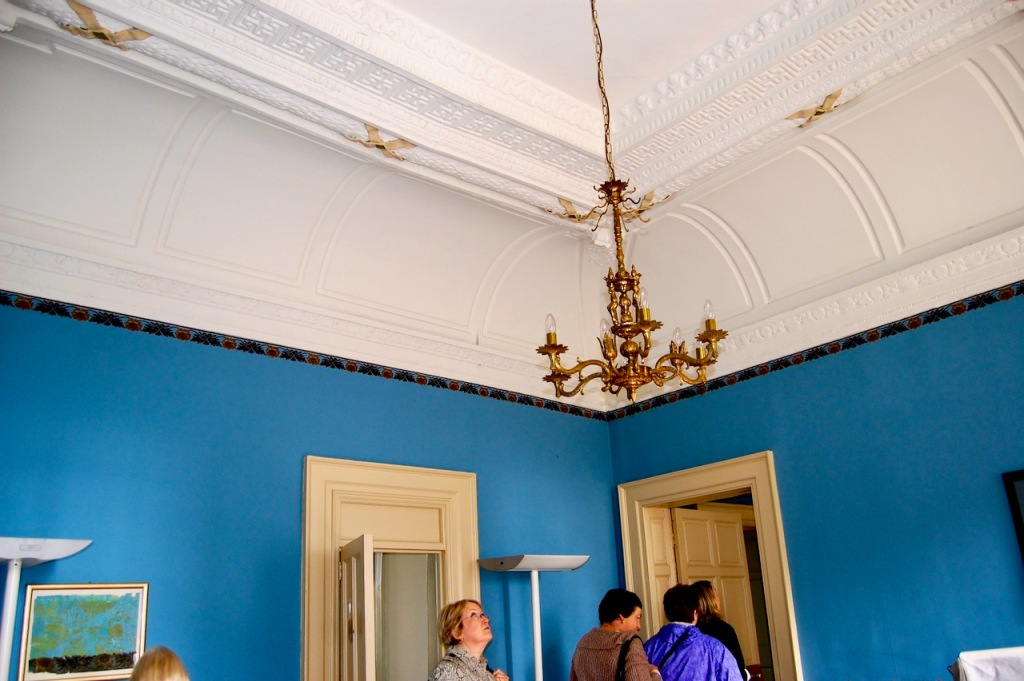
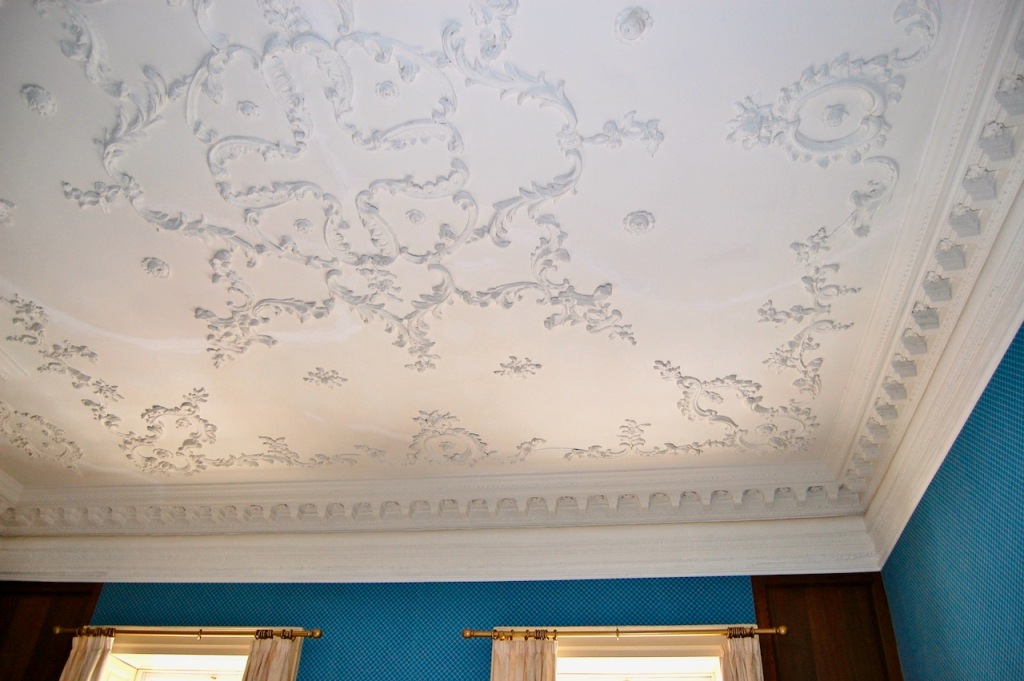
Robert O’Byrne tells us about the use of papier-mache instead of plaster for some decorative work. He tells us:
“When the house was first built, it featured a double-height entrance containing stairs leading to the first-floor. However, some years after the death of Luke Gardiner in 1755 his son Charles reordered this space to create a single-storey entrance hall, behind which a new staircase hall was instated. Probably around the same time a number of rooms were given new ceilings in the rococo manner. These decorations are important because in the majority of cases they are made not of plaster but papier-mâché. The use of this medium is unusual but not unique – a number of other examples survive elsewhere in the city and in Carton, County Kildare – but it seems strange to find it here. One of the attractions of papier-mâché was its relative cheapness (relative to stuccowork, that is) but the Gardiners were certainly affluent to afford anything they wished. On the other hand, its great merit is easier (and cleaner) installation than plaster, so perhaps this is why papier-mâché was preferred for the redecoration of existing rooms.
It was not used, on the other hand, for the saloon, or ballroom (now used as a chapel), which in its present form looks to have been either added or extended at the time when Charles Gardiner was re-fashioning other spaces in the house.” [2]

9. 12 Henrietta Street, Dublin – private, sometimes open during Open House Dublin
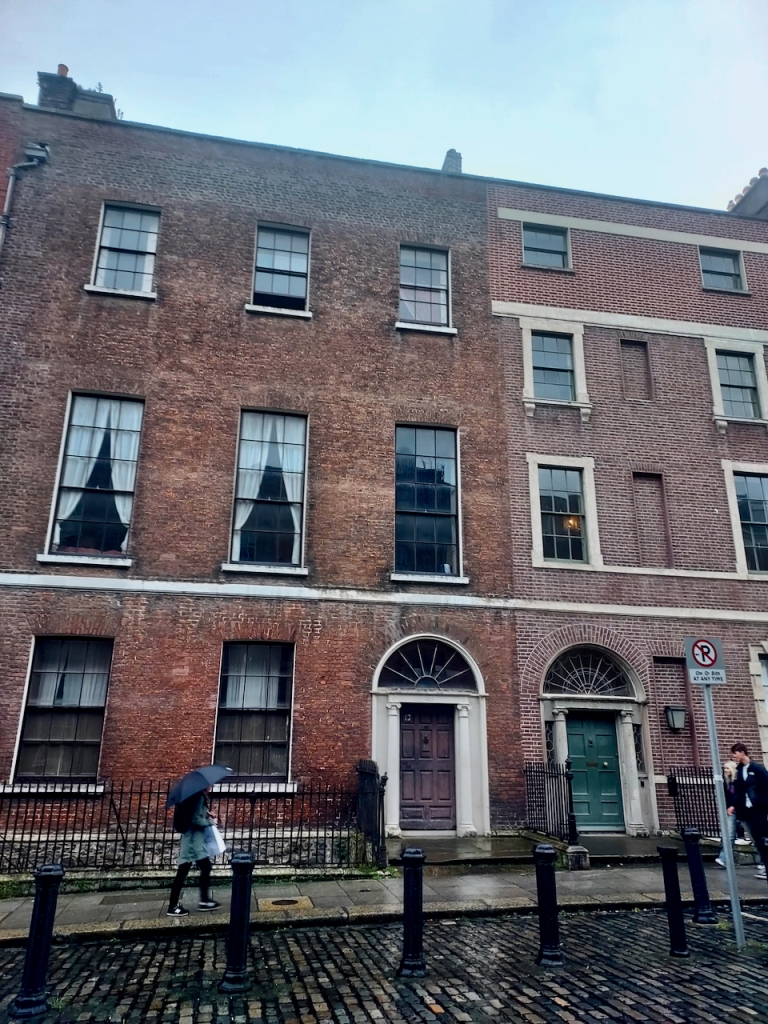
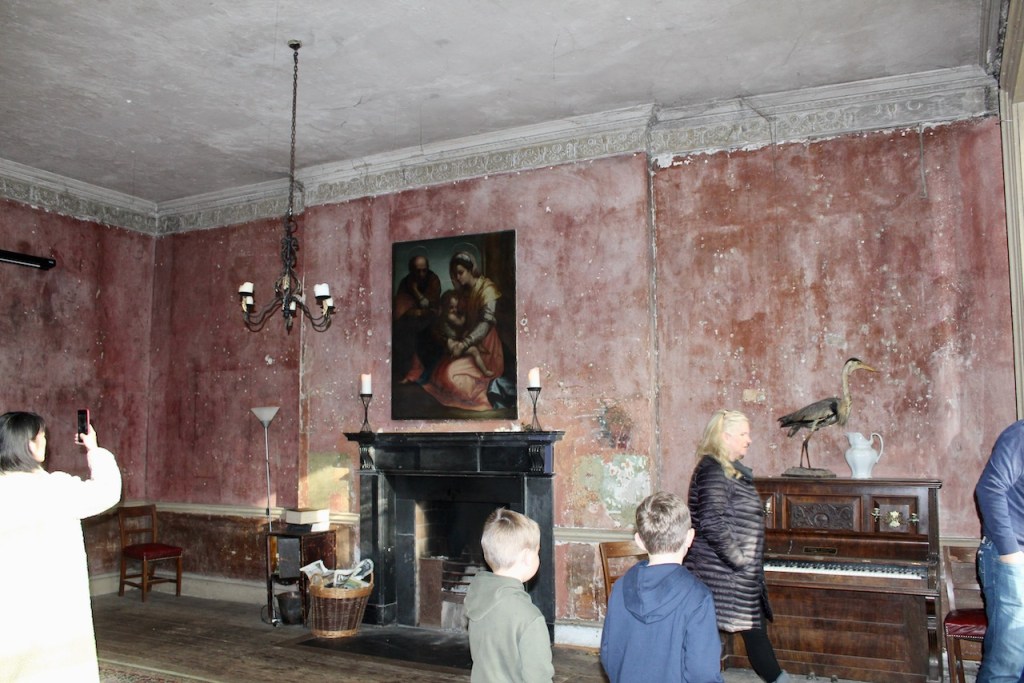
12 Henrietta Street was first occupied by Sir Gustavus Hume (1677-1731), MP, privy councillor and courtier to King George I. He was the third son of the prominent Ulster-Scot Sir John Hume of Castle Hume (2nd Baronet), County Fermanagh and of Sidney, daughter and co-heiress of James Hamilton of Manor Hamilton, County Leitrim and became 3rd Baronet of Castle Hume (now demolished) when his father died as his two elder brothers predeceased their father. Castle Hume was architect Richard Castle’s first known commission in Ireland. It was pulled down in the 1830s and the materials reused to build Ely Lodge nearby.
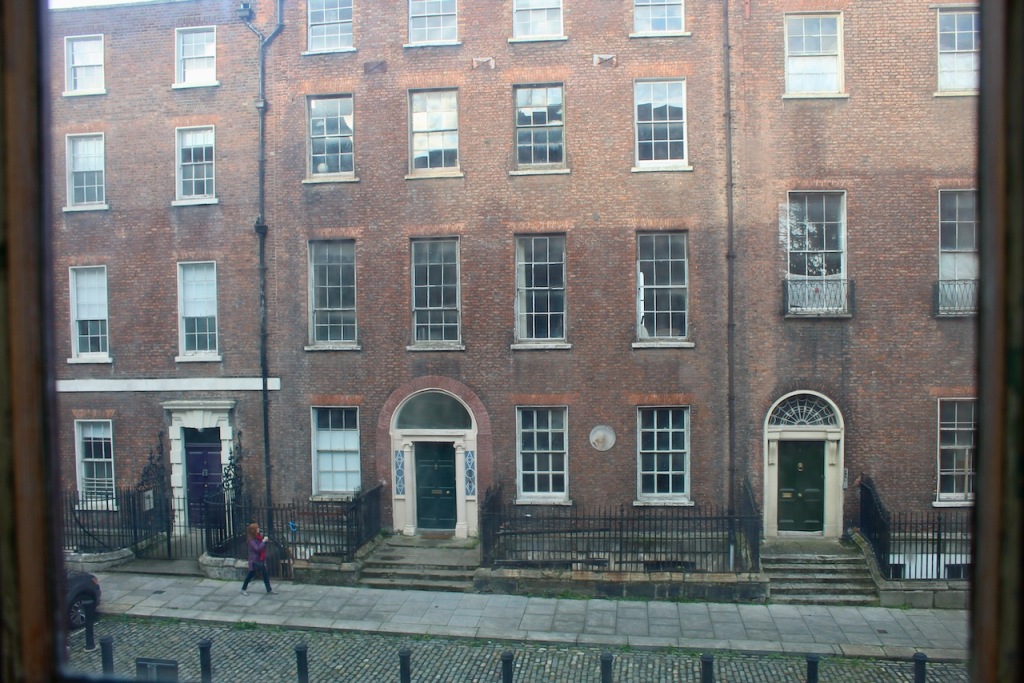

The National Inventory of Architectural Heritage tells us it is:
“Terraced three-bay three-storey house over exposed basement, built c.1730, by Luke Gardiner as pair with No. 11, heavily remodelled c.1780…This house was built as a pair with No. 11, possibly to the designs of Edward Lovett Pearce. It was initially leased to Henry Boyle, Speaker of the House of Commons. Later, the house was leased to the 2nd Earl of Shannon in 1780, and subsequently gutted with the removal of a floor to provide a truly grand piano nobile. The building retains most of the interior detailing from that remodelling including stucco decoration by Charles Thorp, with remnants from the earlier scheme. The house has been undergoing a painstaking programme of conservation works and forms an important part of what has been described as ‘Dublin’s Street of Palaces’ while the ongoing conservation work will contribute to the improving fortunes of this remarkable streetscape. Laid out by Luke Gardiner in the 1720s, Henrietta Street is a short cul-de-sac containing the finest early Georgian houses in the city. It was named after Henrietta Crofts, the third wife of Charles Paulet, 2nd Duke of Bolton and Lord Lieutenant in 1717-21, the street developed in a piecemeal fashion and set the trends of scale and design in domestic architecture.”
See also the wonderfully informative book, The Best Address in Town: Henrietta Street, Dublin and its First Residents 1720-80 by Melanie Hayes, published by Four Courts Press, Dublin 8, 2020.
In 1733 William Stewart (1709-1769), 3rd Viscount Mountjoy and later 1st Earl of Blessington, moved to 12 Henrietta Street.
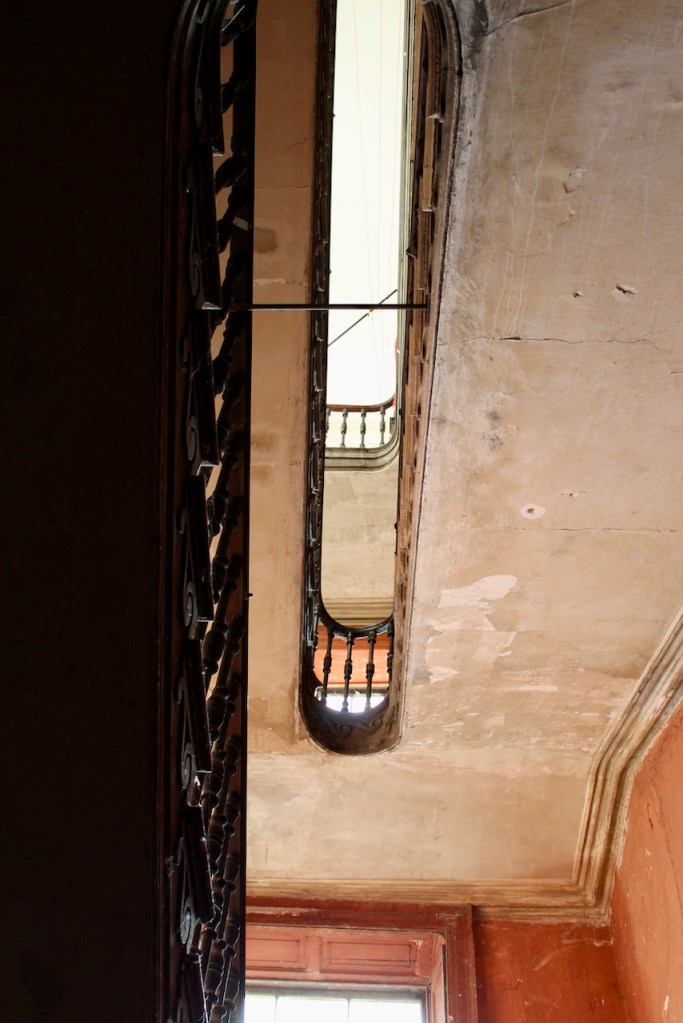

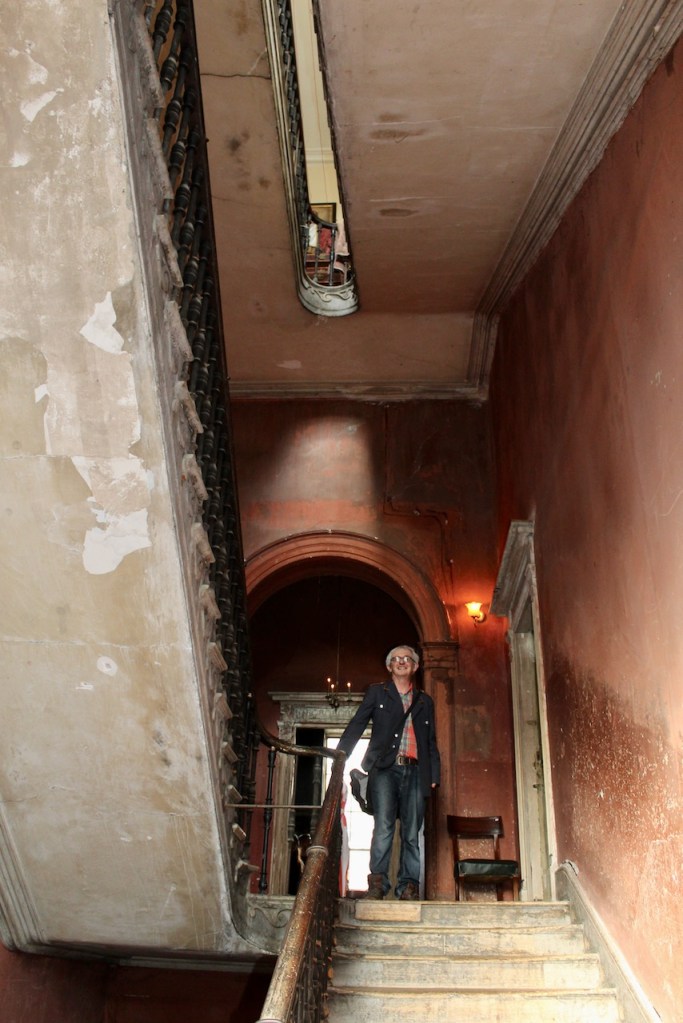


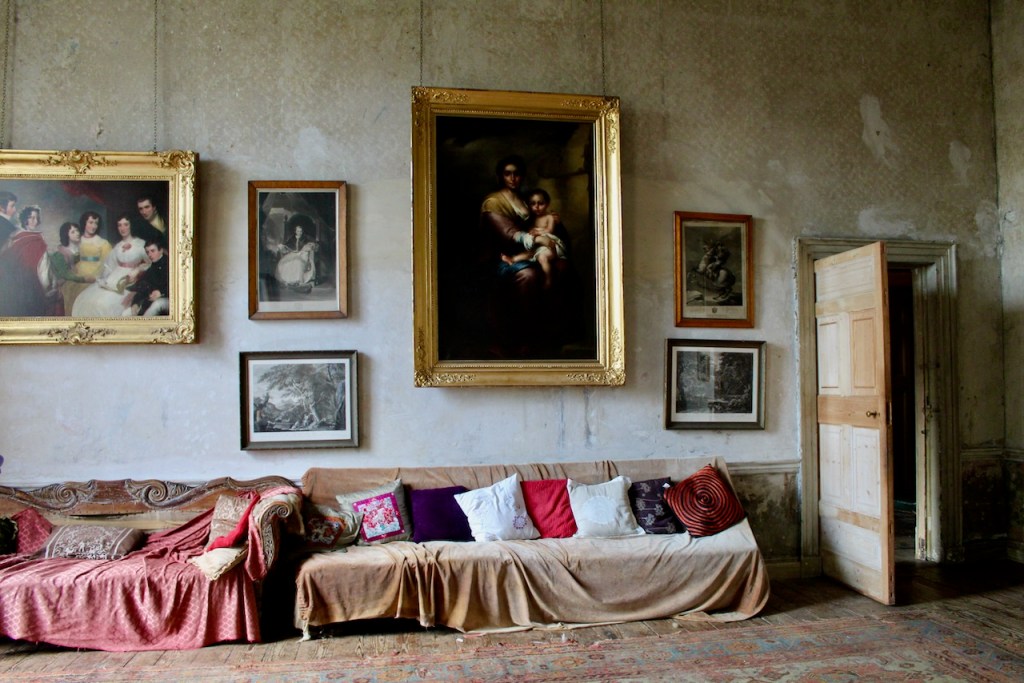


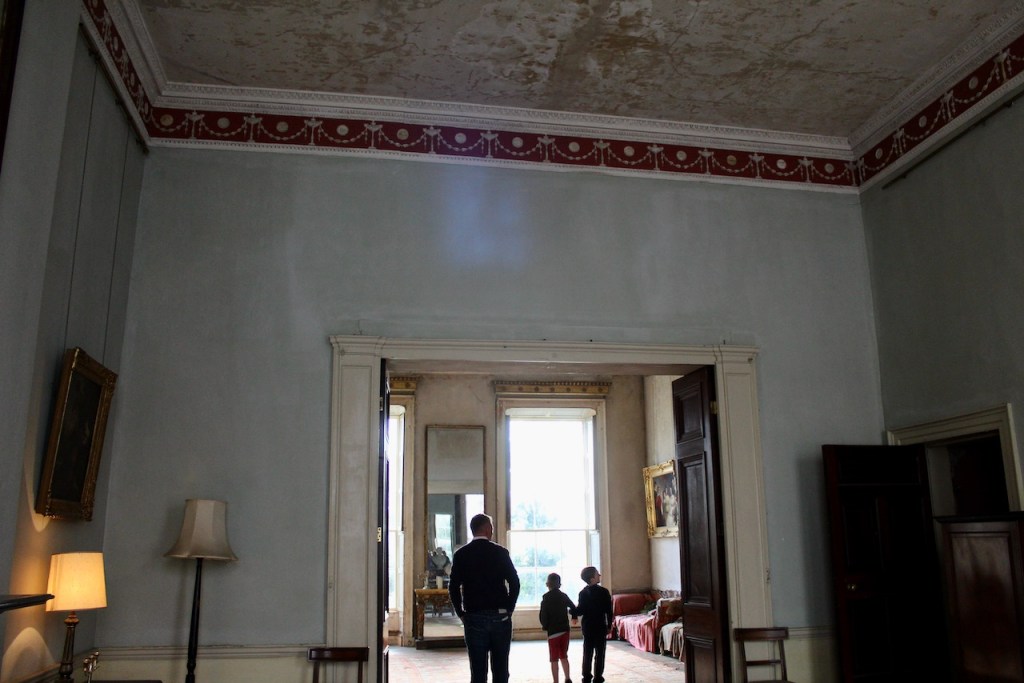


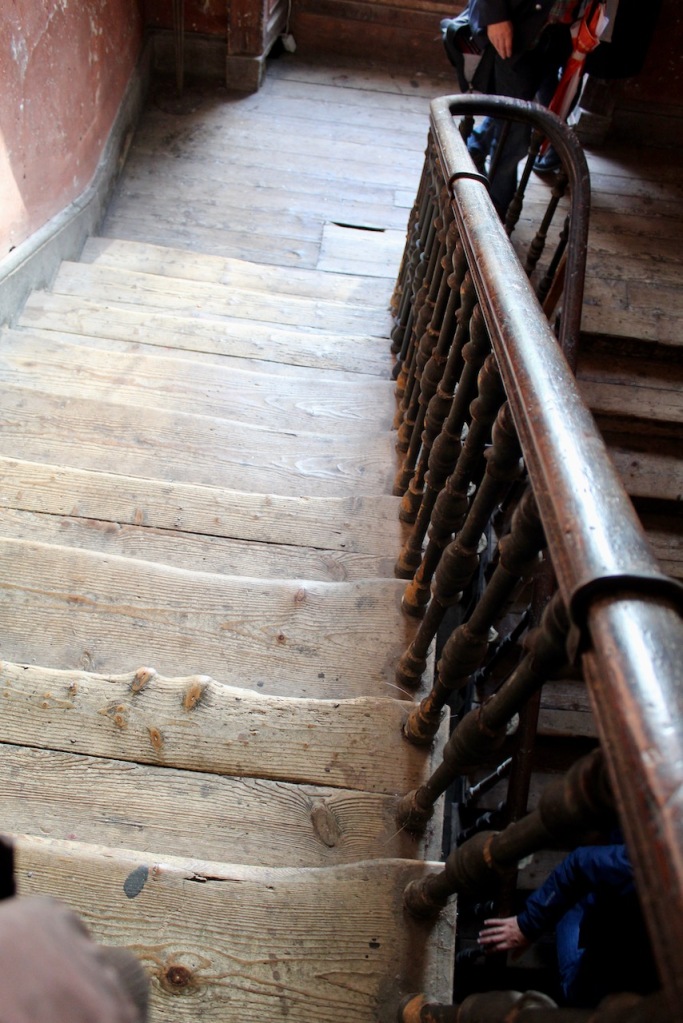
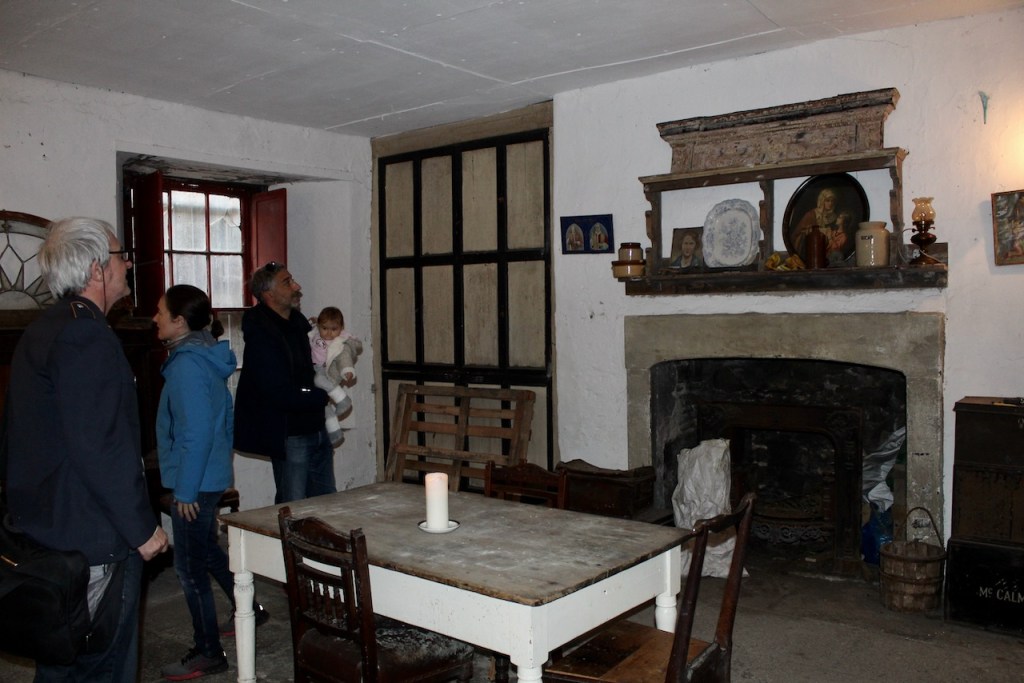
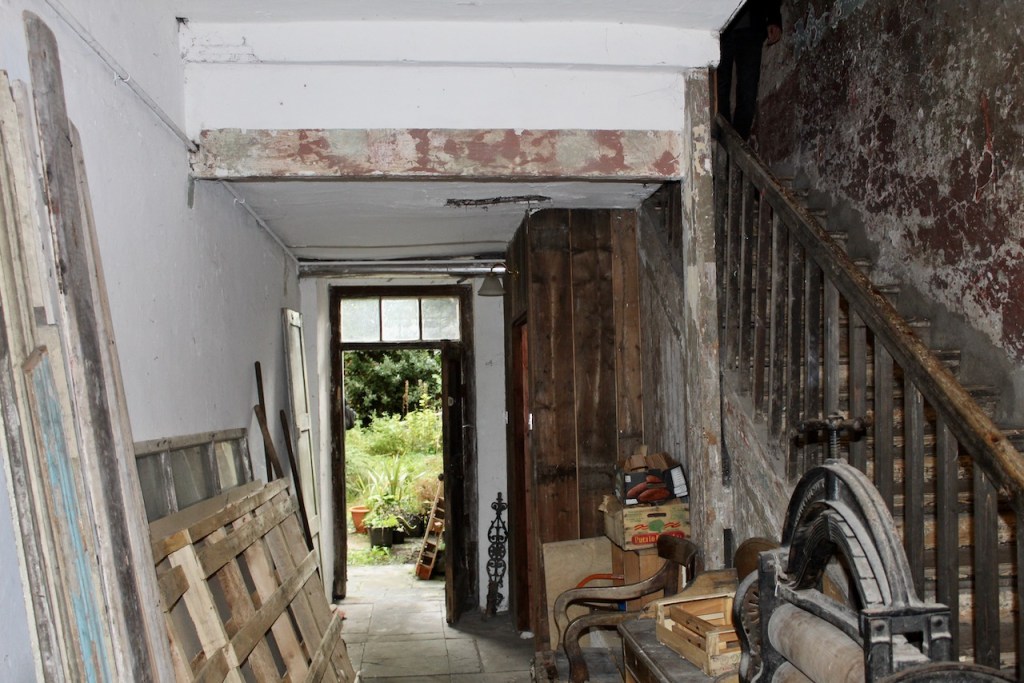

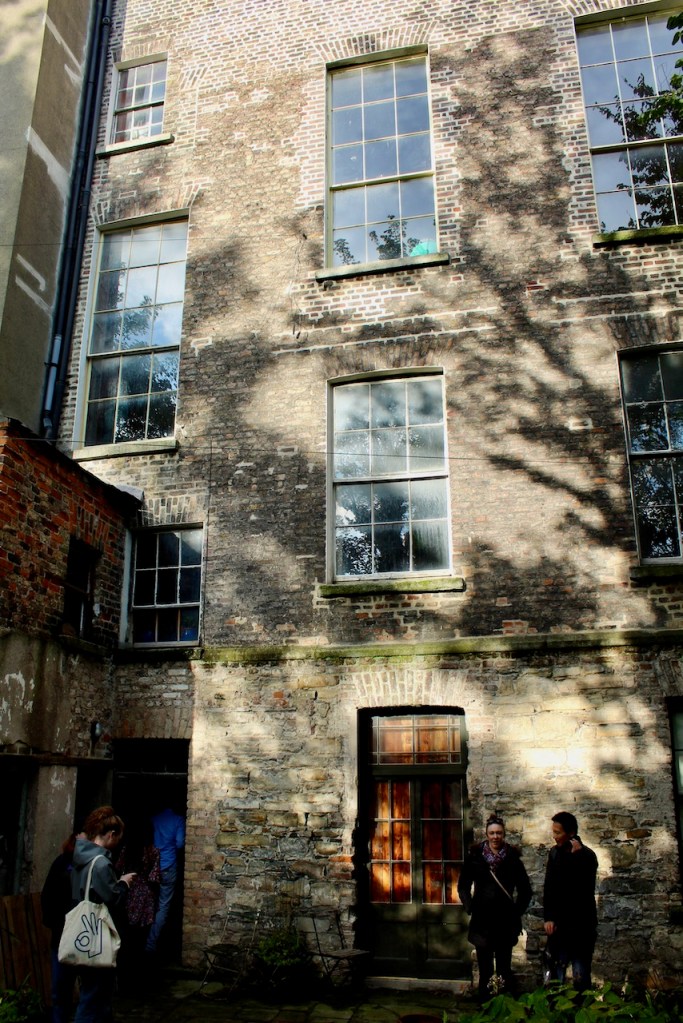

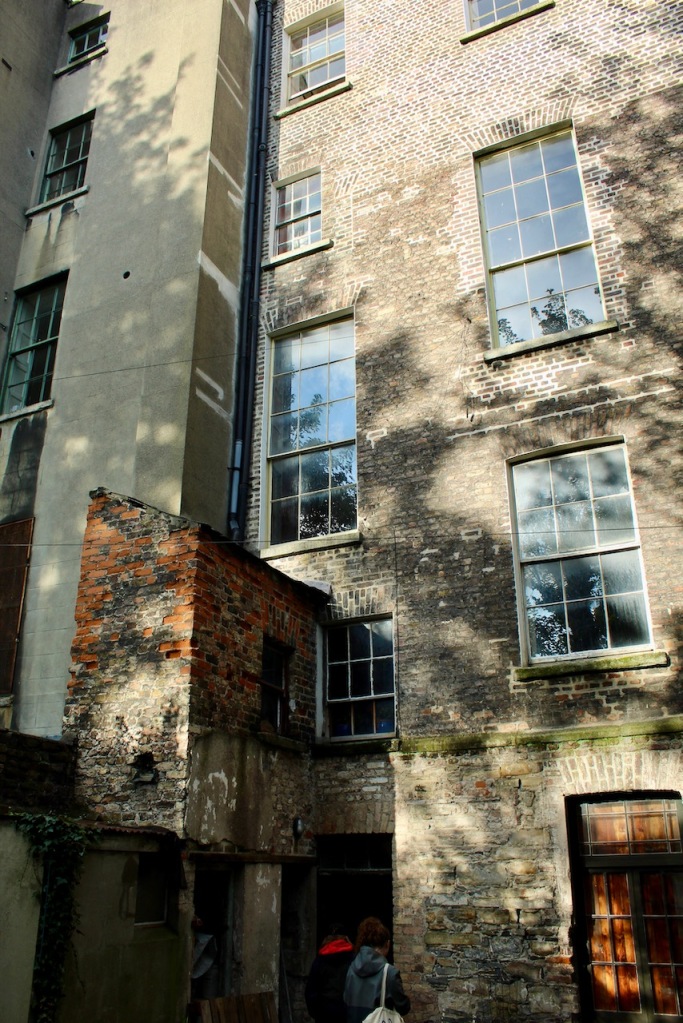
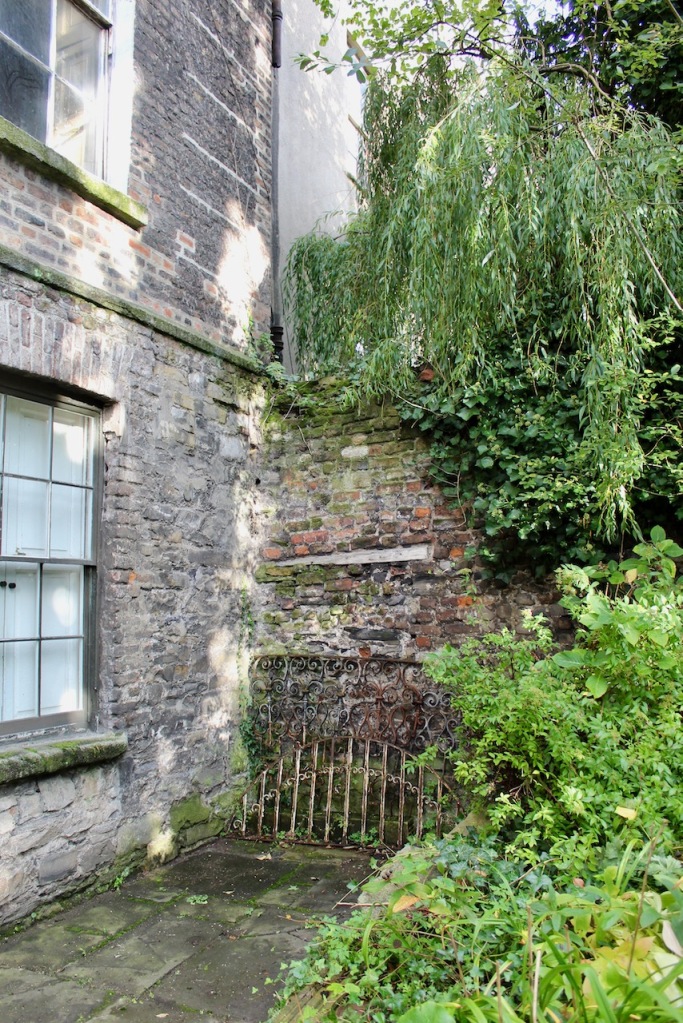
10. 14 Henrietta Street, Dublin (July 2013 Heritage Week)
This house is now a museum. See my entry https://irishhistorichouses.com/2020/06/06/covid-19-lockdown-20km-limits-and-places-to-visit-in-dublin/
See also the wonderfully informative book, The Best Address in Town: Henrietta Street, Dublin and its First Residents 1720-80 by Melanie Hayes, published by Four Courts Press, Dublin 8, 2020.

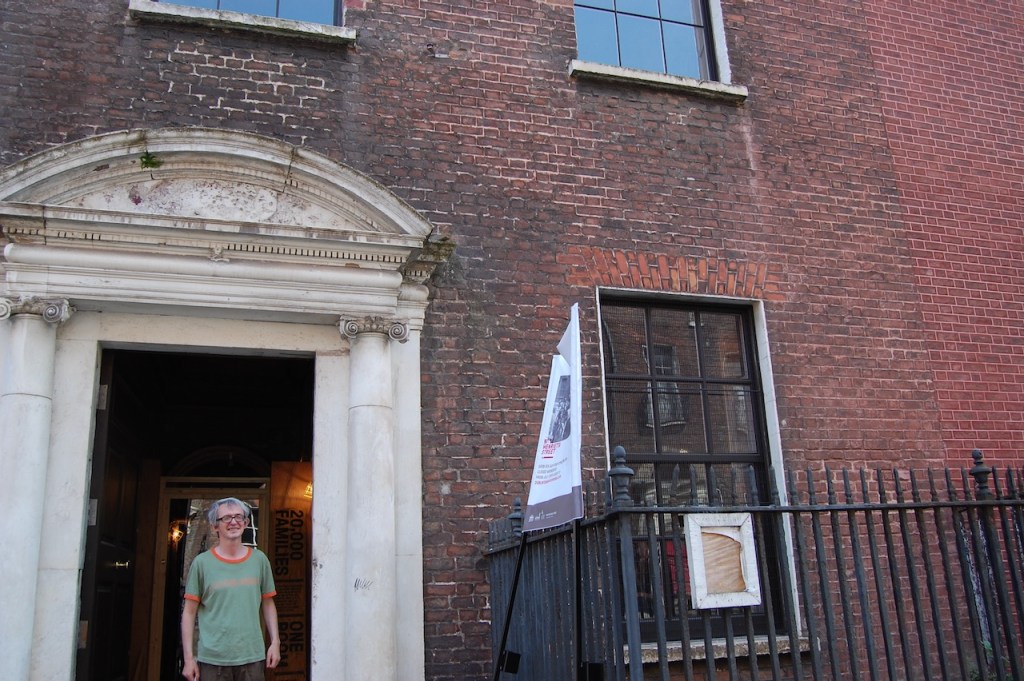



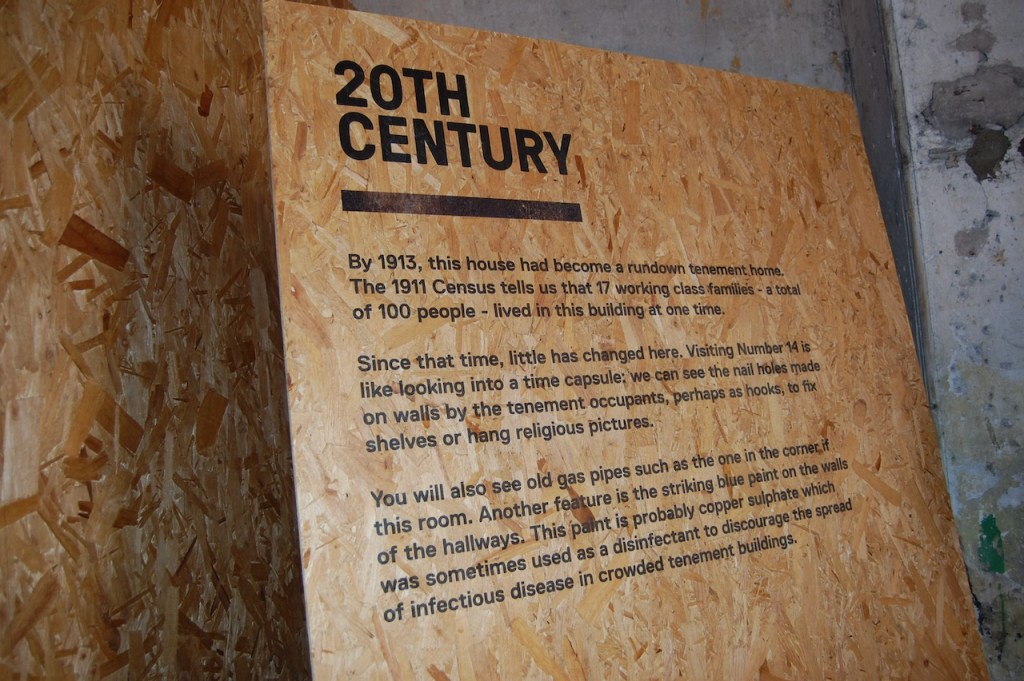



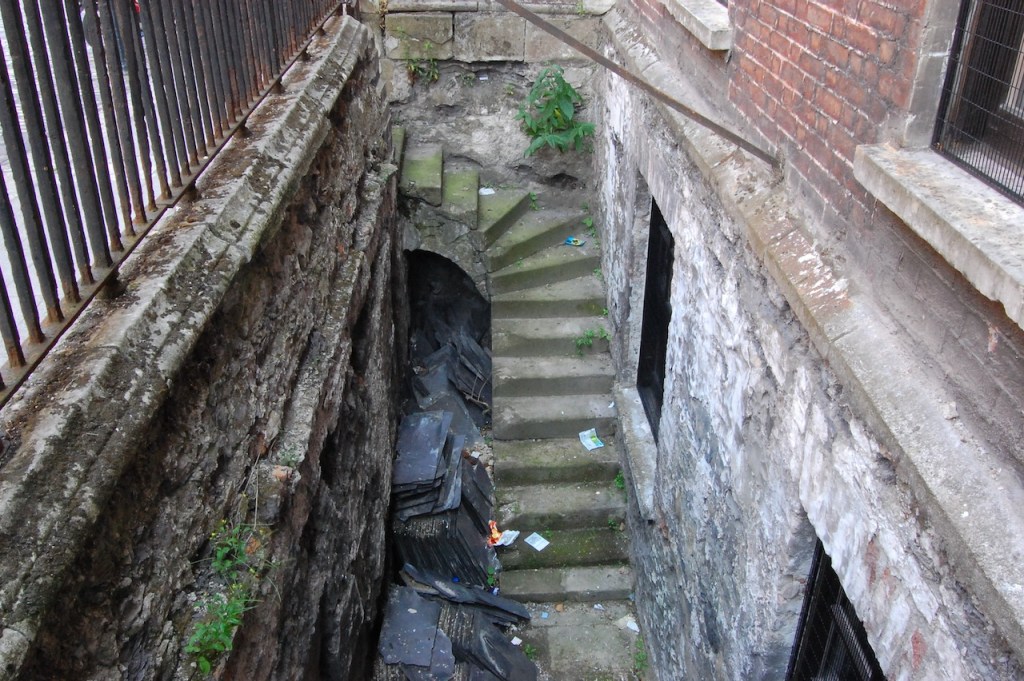
11. Iveagh House (80 and 81 St. Stephen’s Green) – Department of Foreign Affairs (Open House 2014)
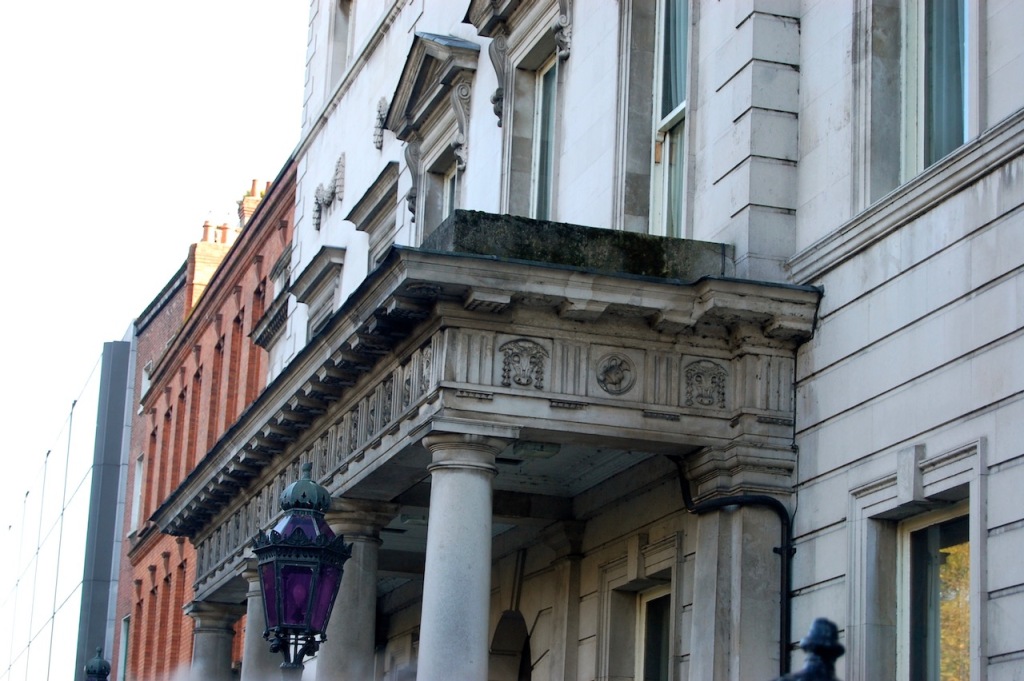
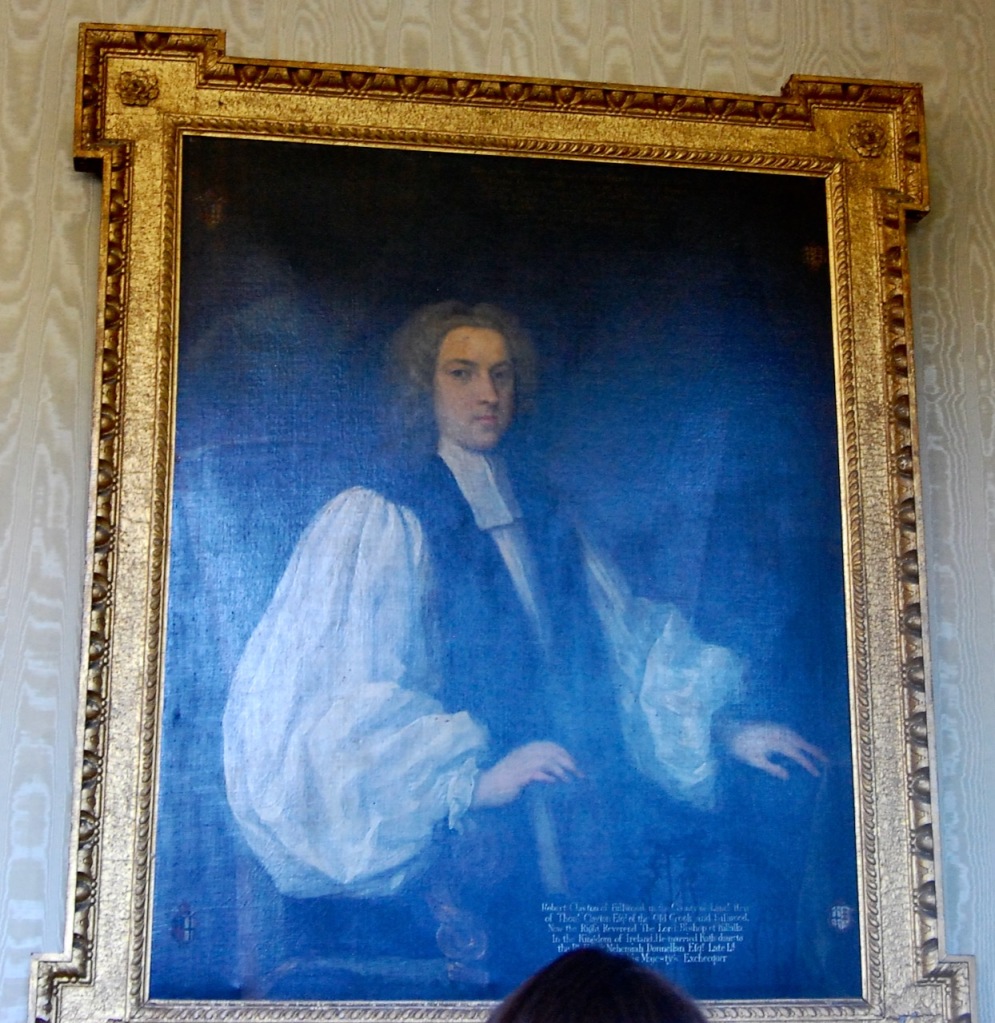
The Archiseek website tells us:
“Iveagh House is now the Department of Foreign Affairs as it was donated to the Irish State by the Guinness family in 1939. Originally two houses, nos 80/81 St Stephen’s Green, no 80 was originally designed by Richard Cassels [also spelled “Castle”] in 1736. After both houses were bought by Benjamin Guinness in 1862, he acted as his own architect and produced the current house.
“The Dublin Builder, February 1 1866: ‘In this number we give a sketch of the town mansion of Mr. Benjamin Lee Guinness, M.P , now in course of erection in Stephen’s Green, South, the grounds of which run down to those of the Winter Garden. As an illustration so very quiet and unpretending a front is less remarkable as a work of architectural importance than from the interest which the name of that well-known and respected owner gives it, and from whose own designs it is said to have been built. The interior of the mansion promises to be of a very important and costly character, and to this we hope to have the pleasure of returning on a future occasion when it is more fully advanced. The works, we believe, have been carried out by the Messrs. Murphy of St. Patrick’s Cathedral notoriety, under Mr. Guinness’s own immediate directions, without the intervention of any professional architect.’ “
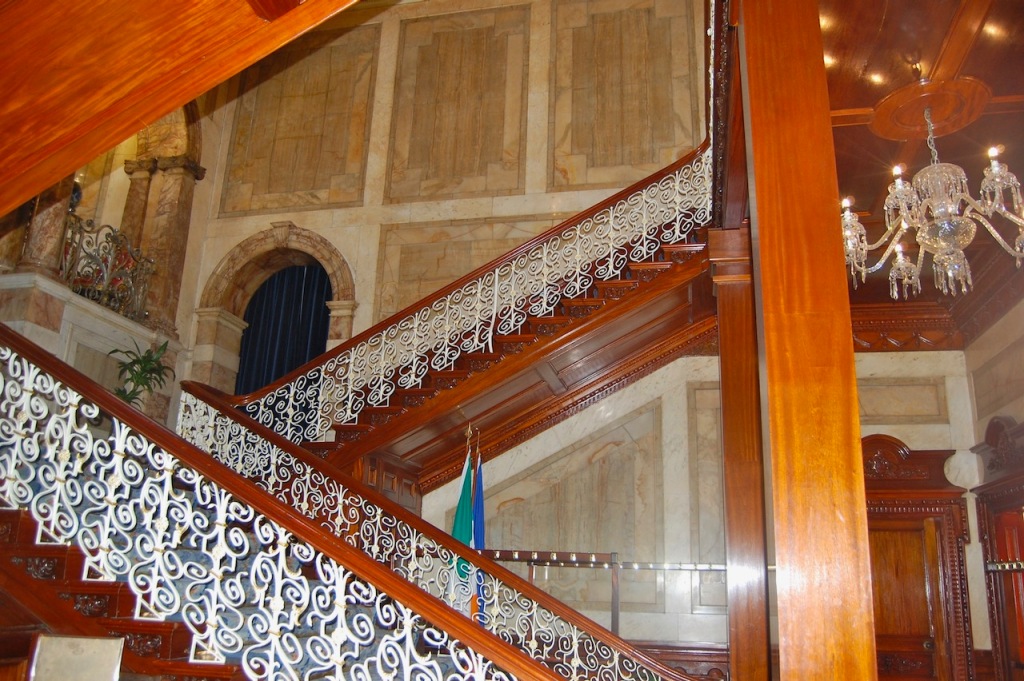
The building was donated to the Irish government by Benjamin Guinness’s grandson Rupert, the 2nd Earl of Iveagh, in 1939 and was renamed Iveagh House.

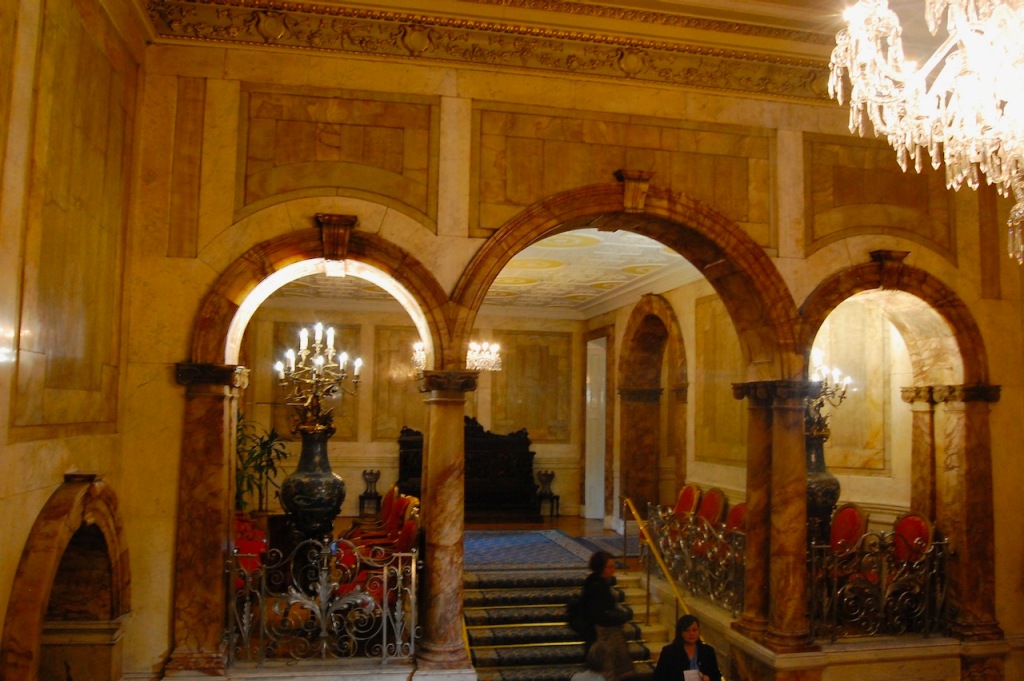
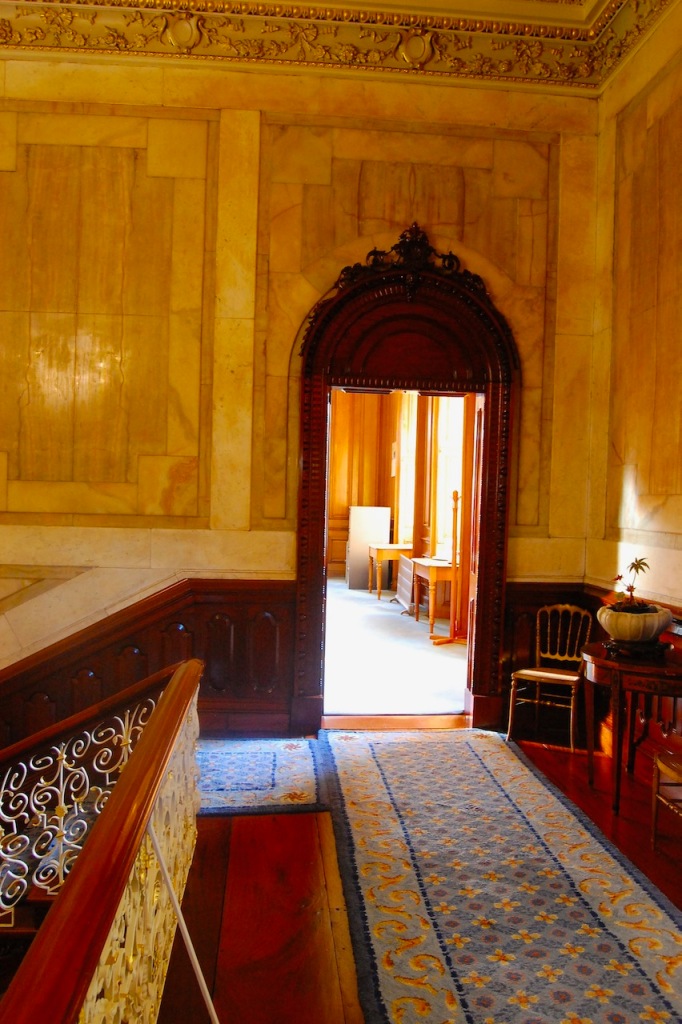


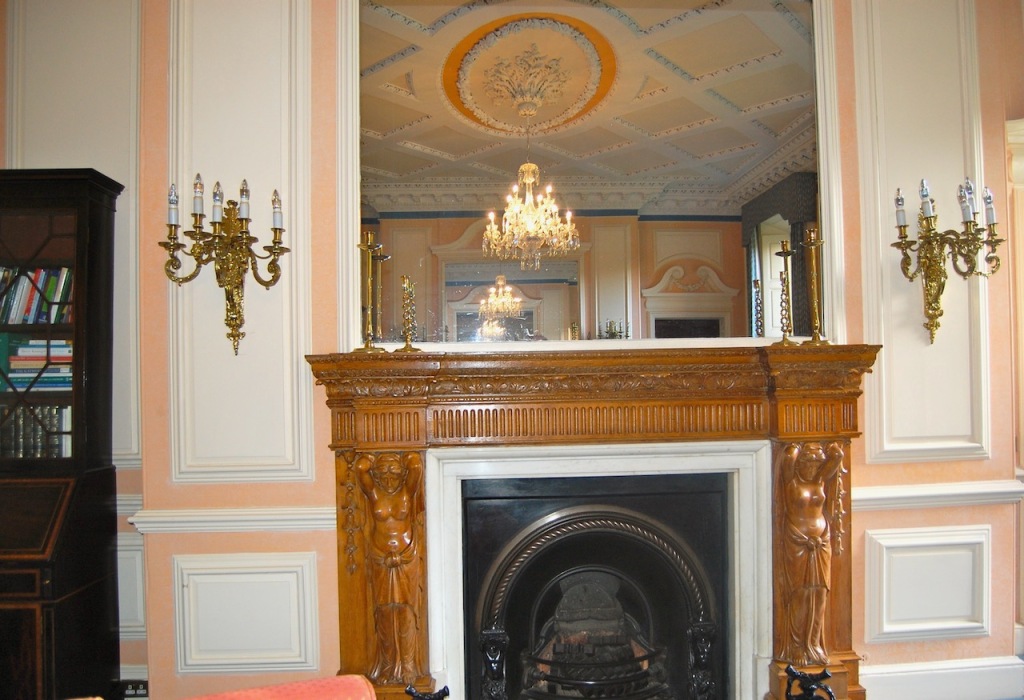


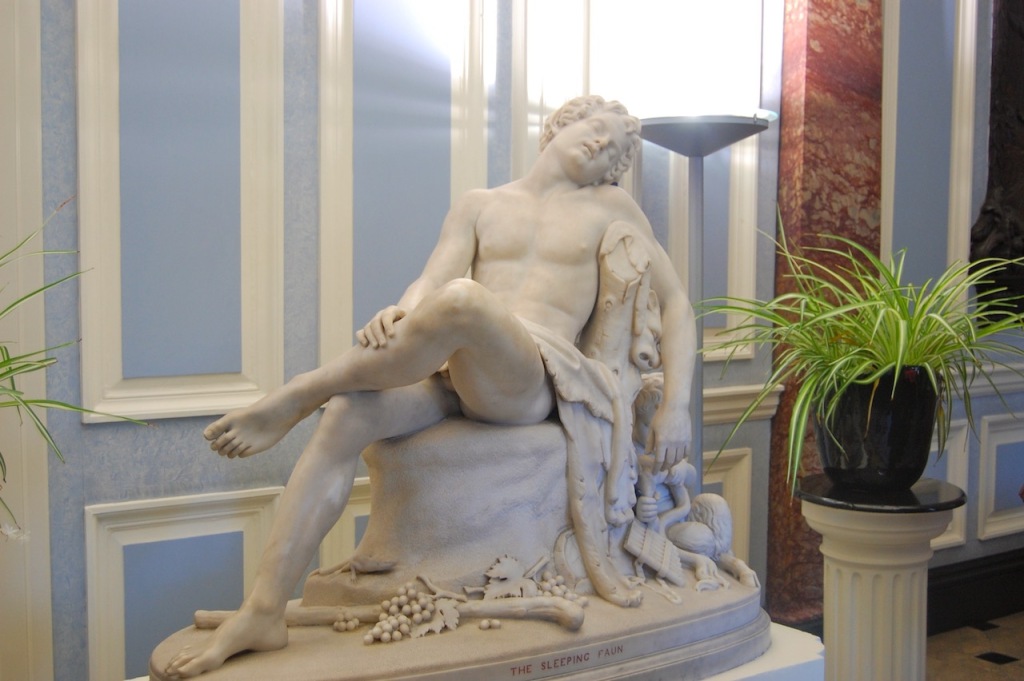
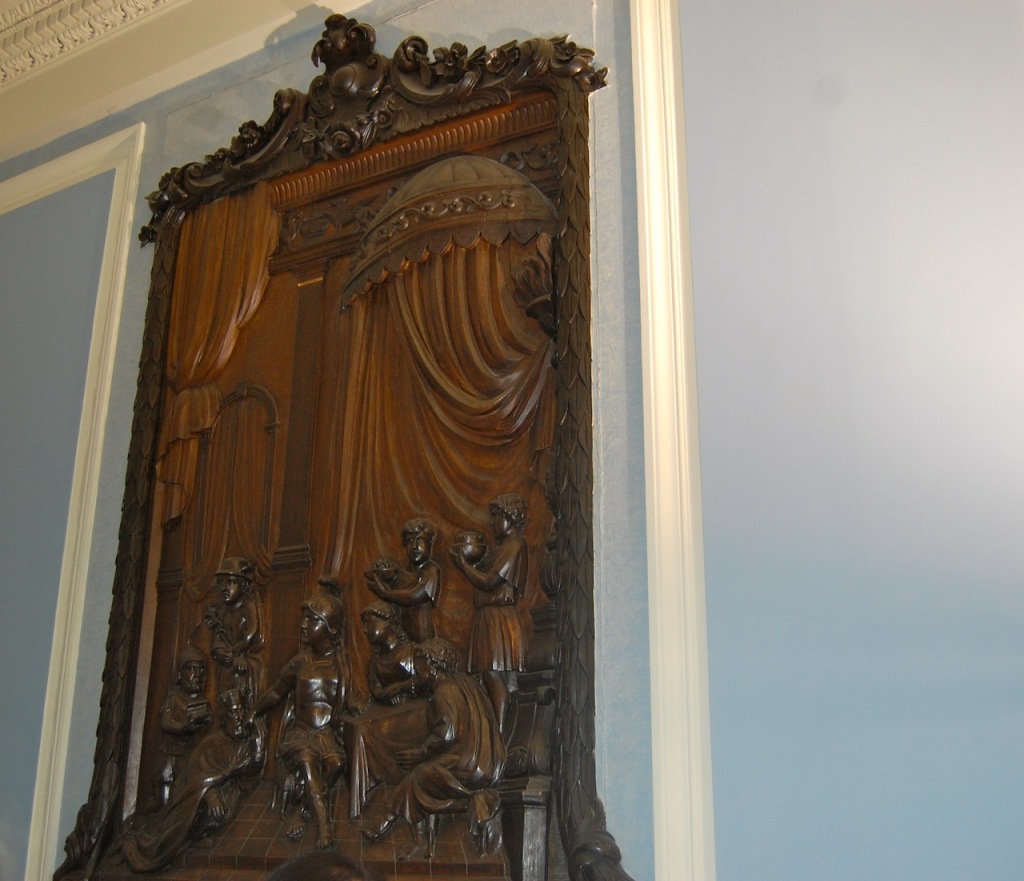
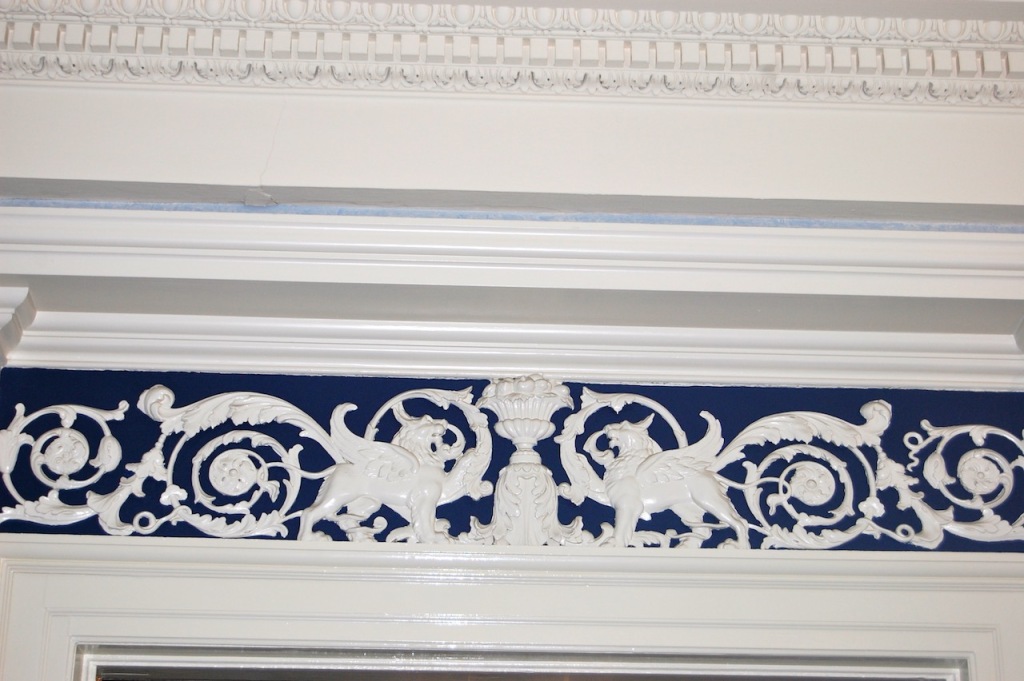

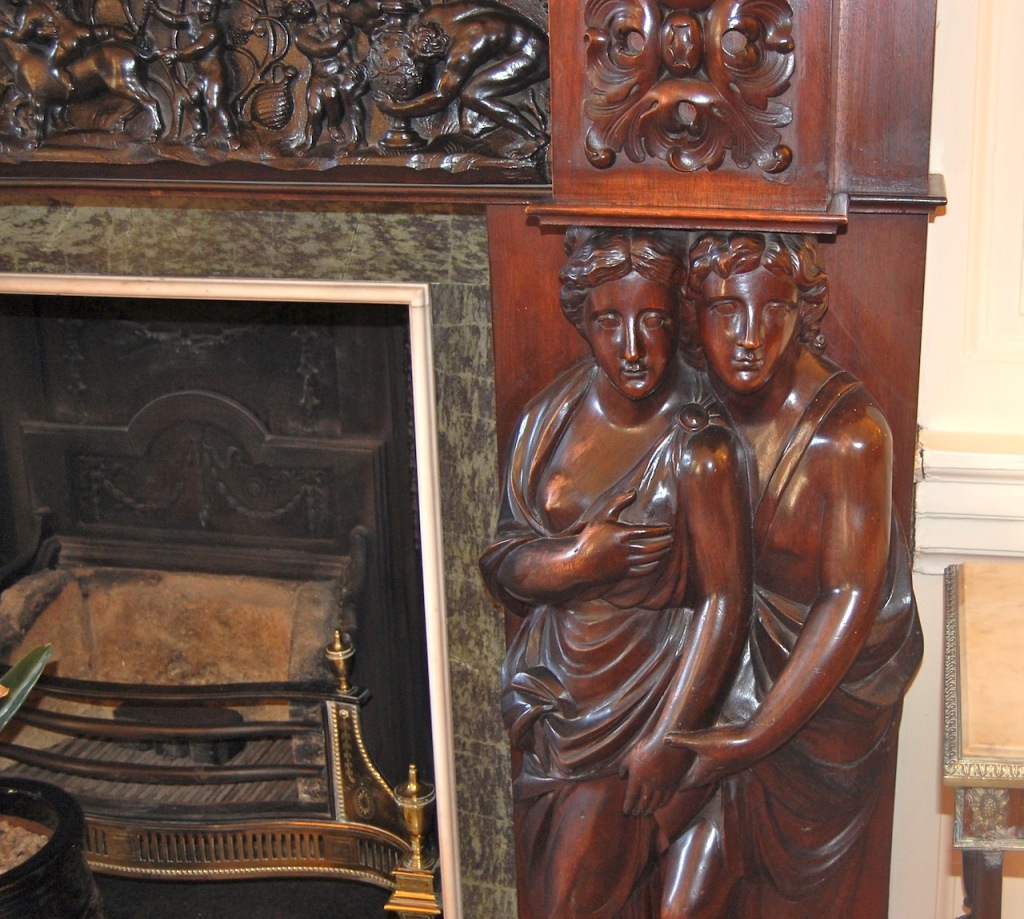

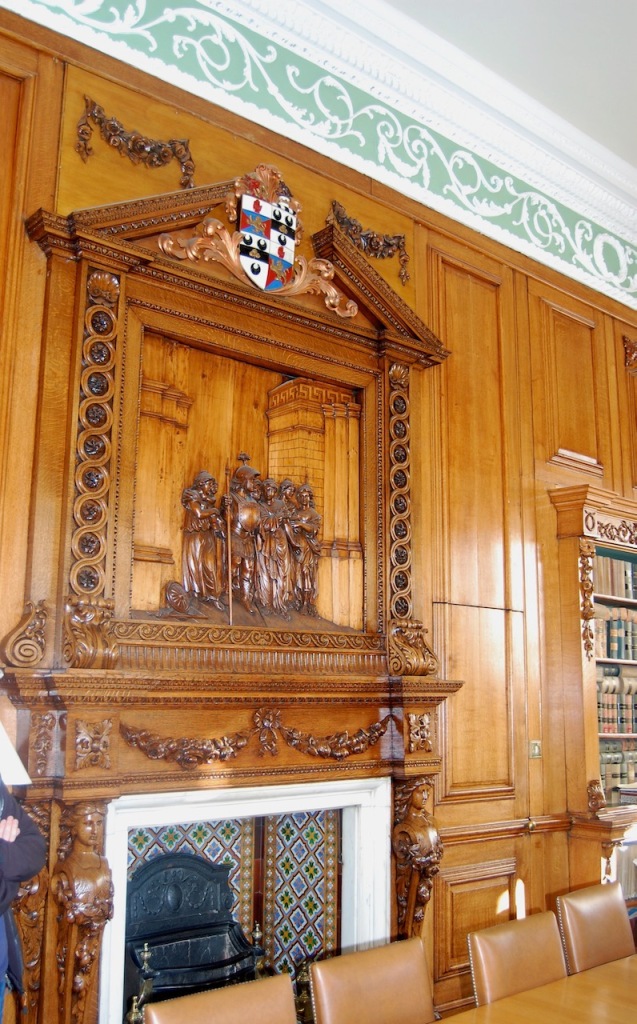
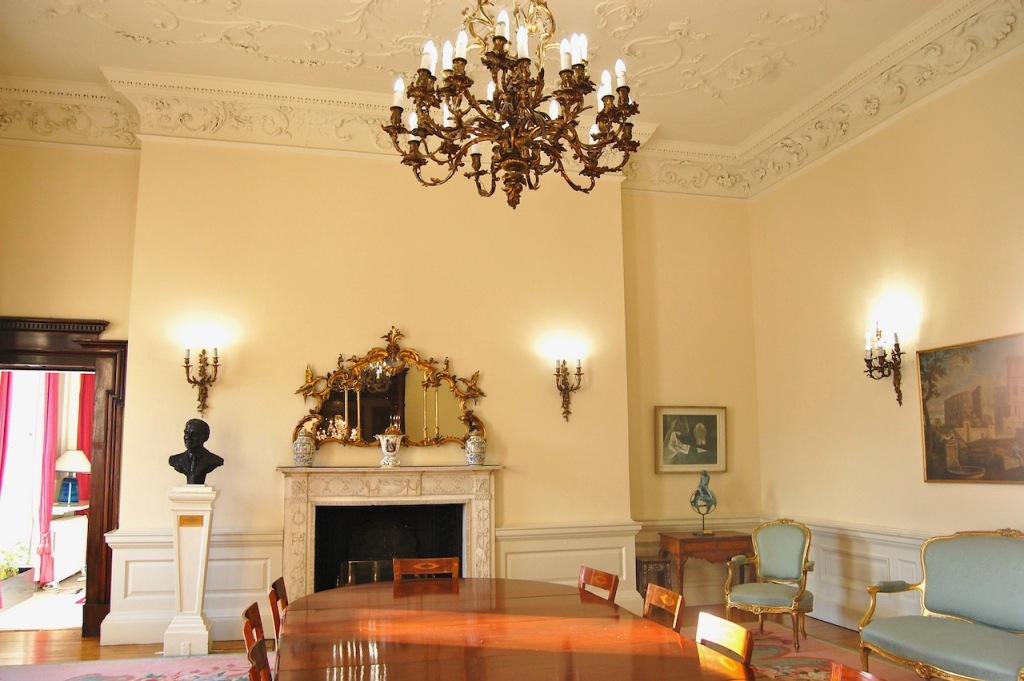
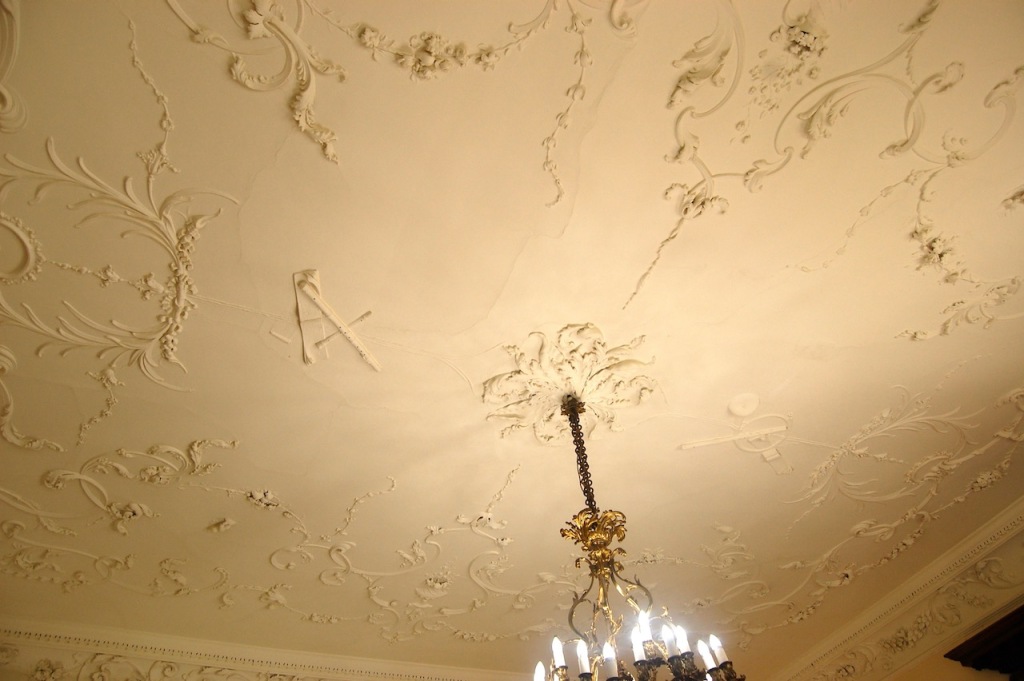
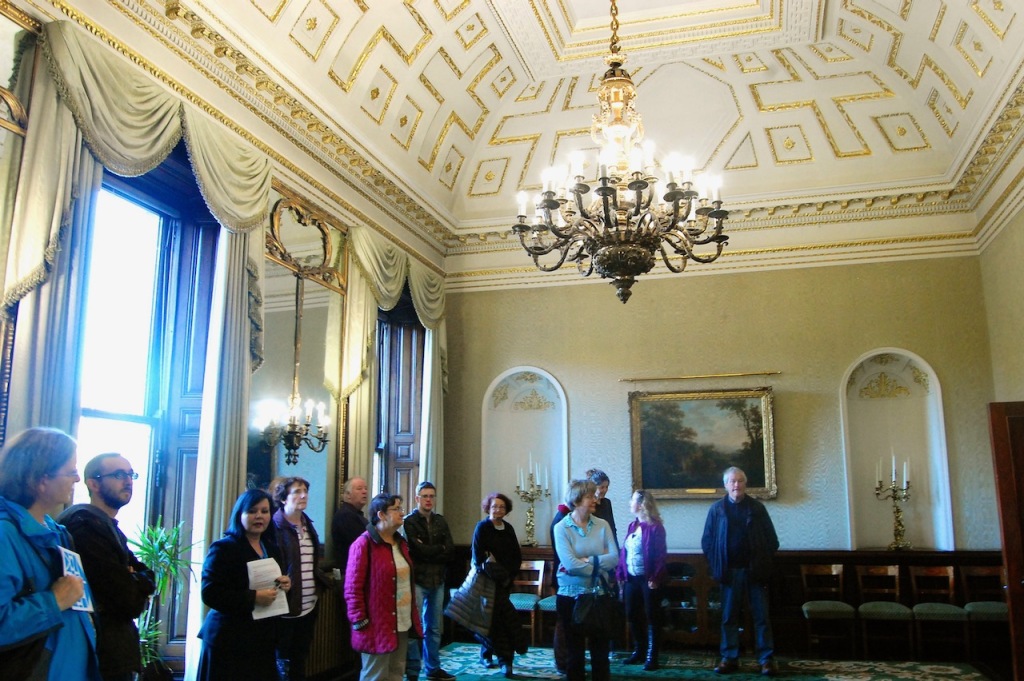
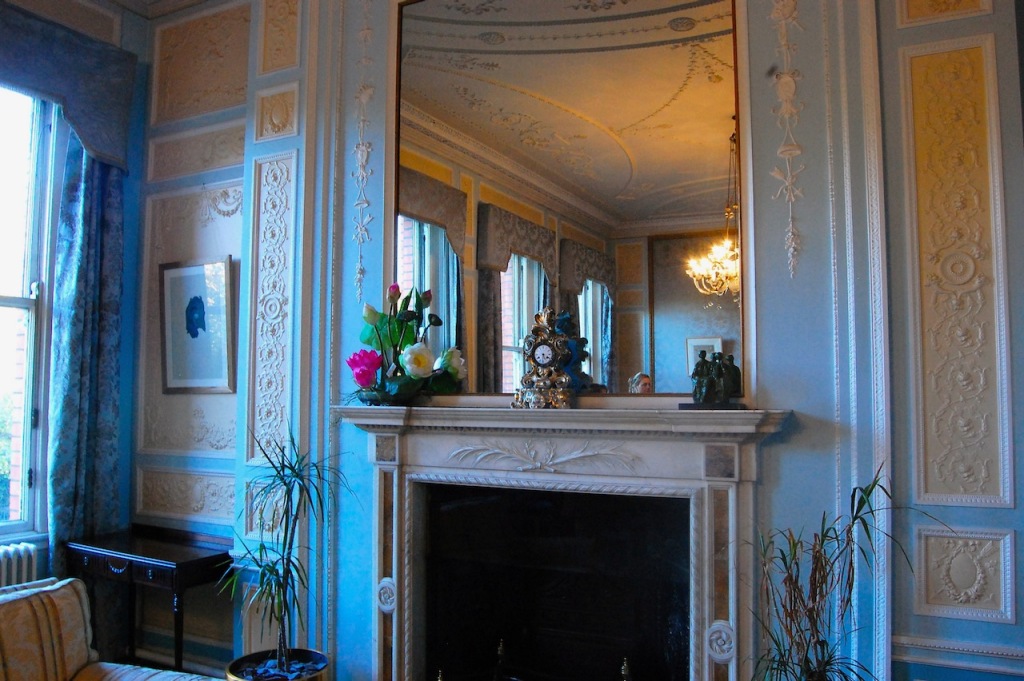
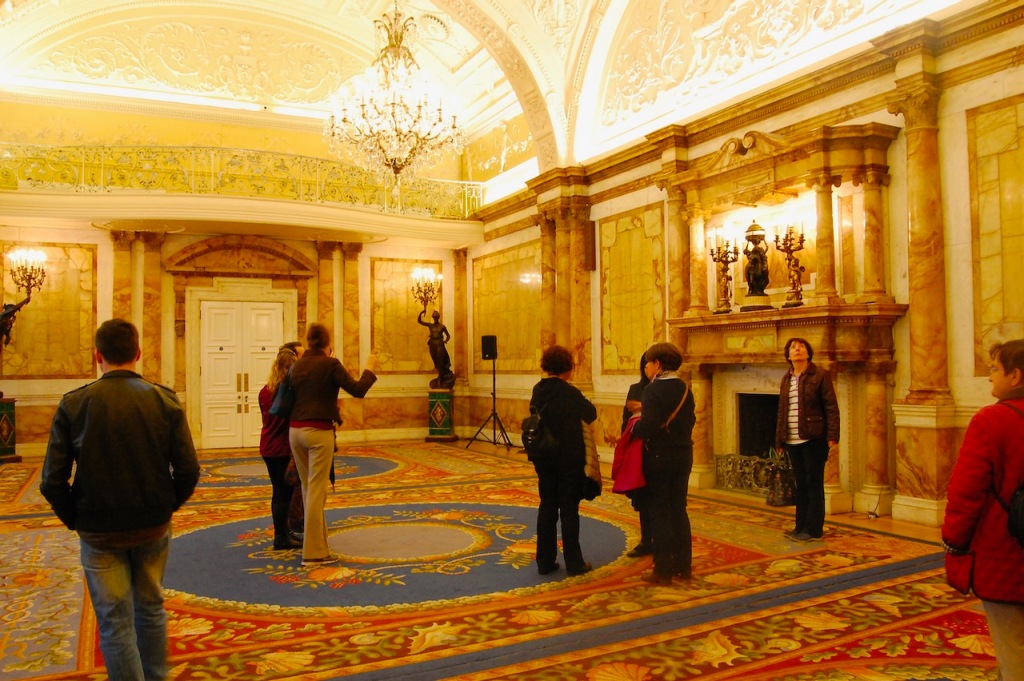



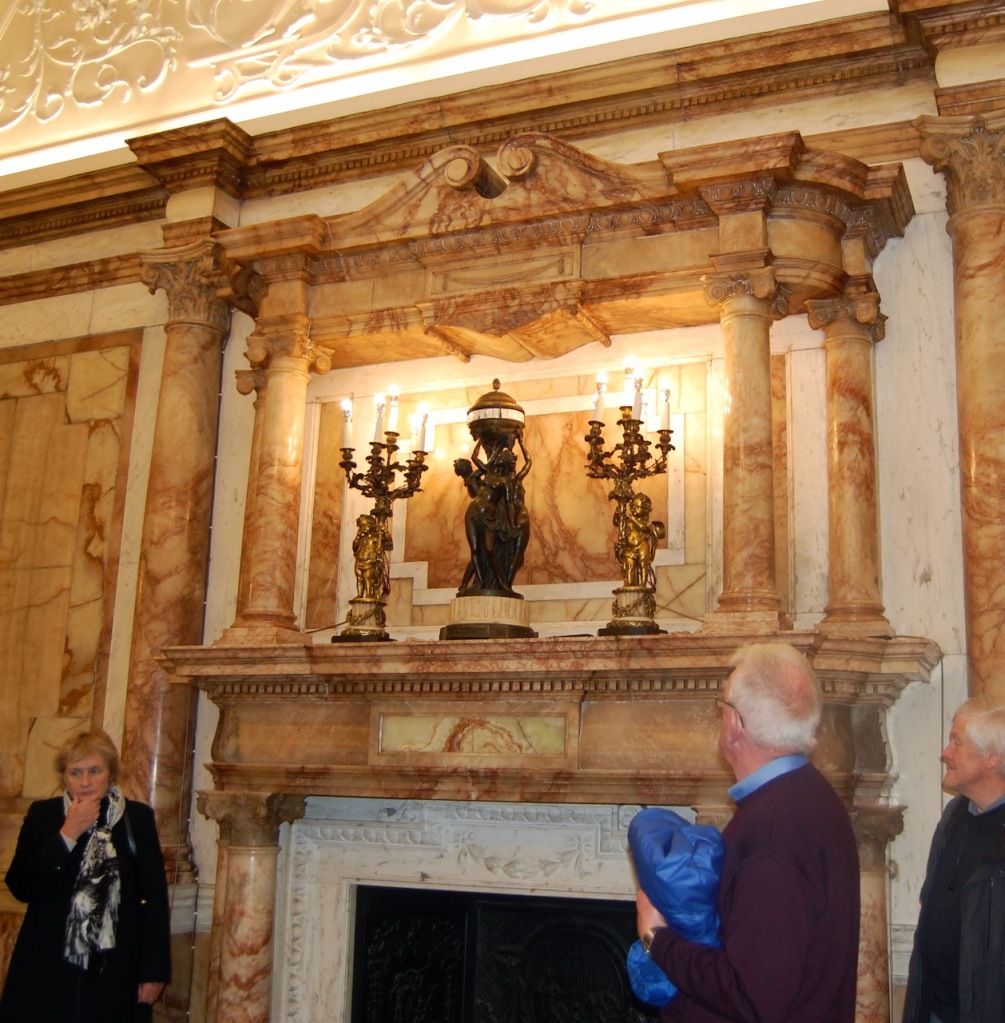
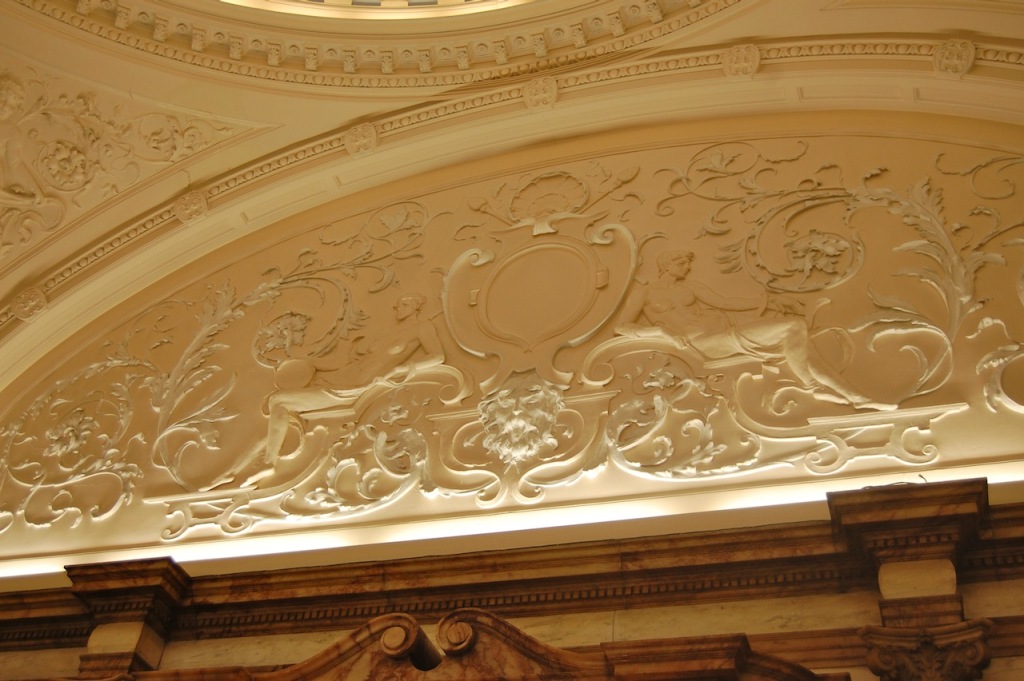
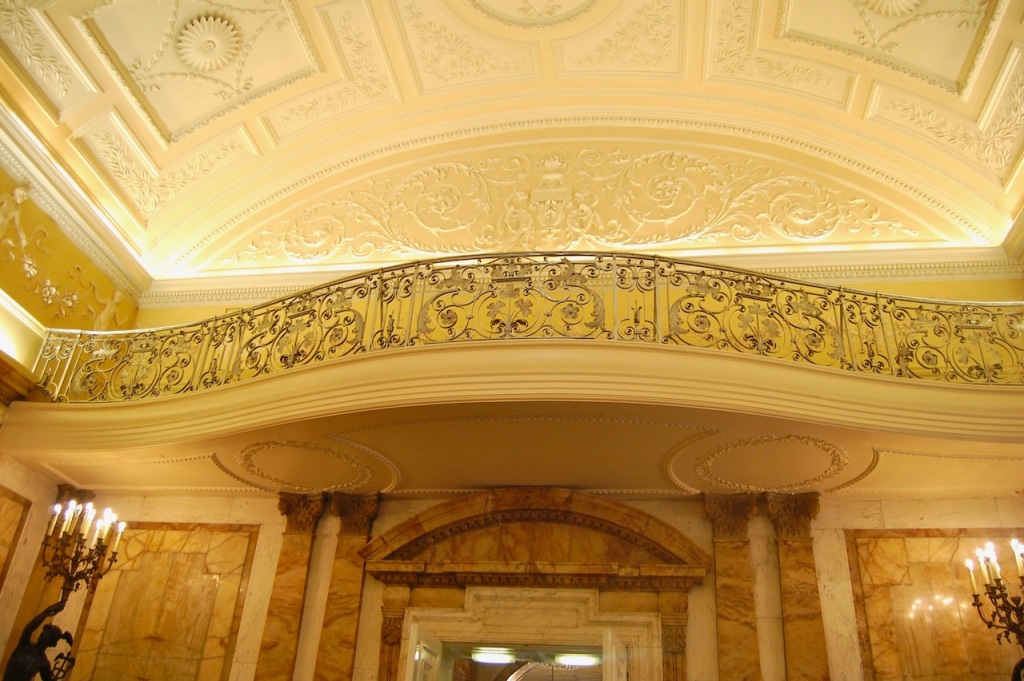
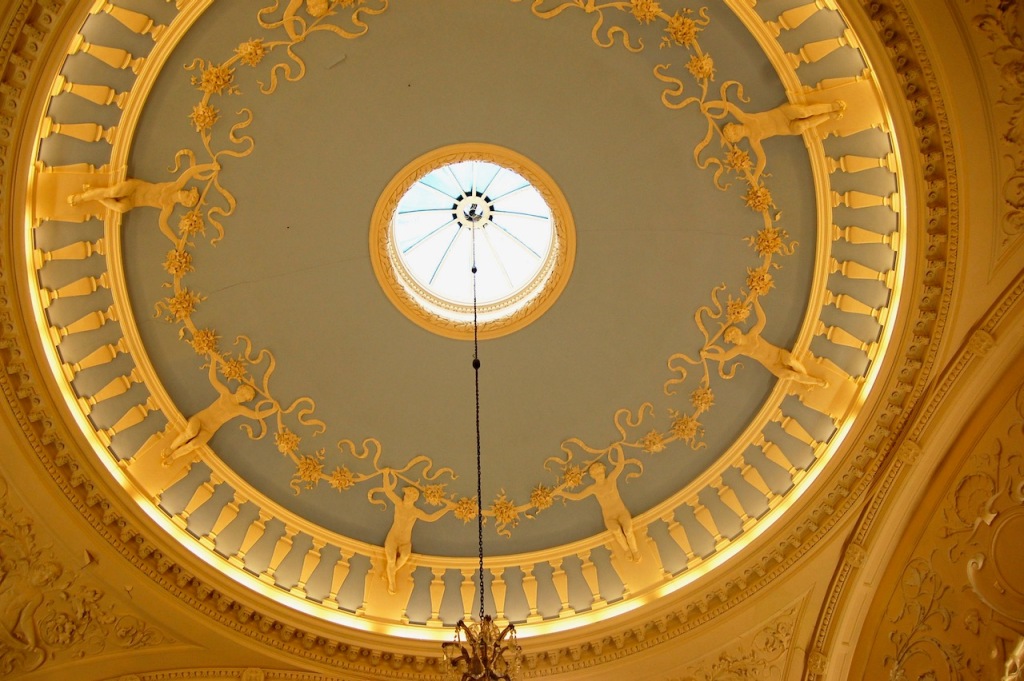
12. Iveagh Trust Apartment, Iveagh Buildings (Open House 2014)
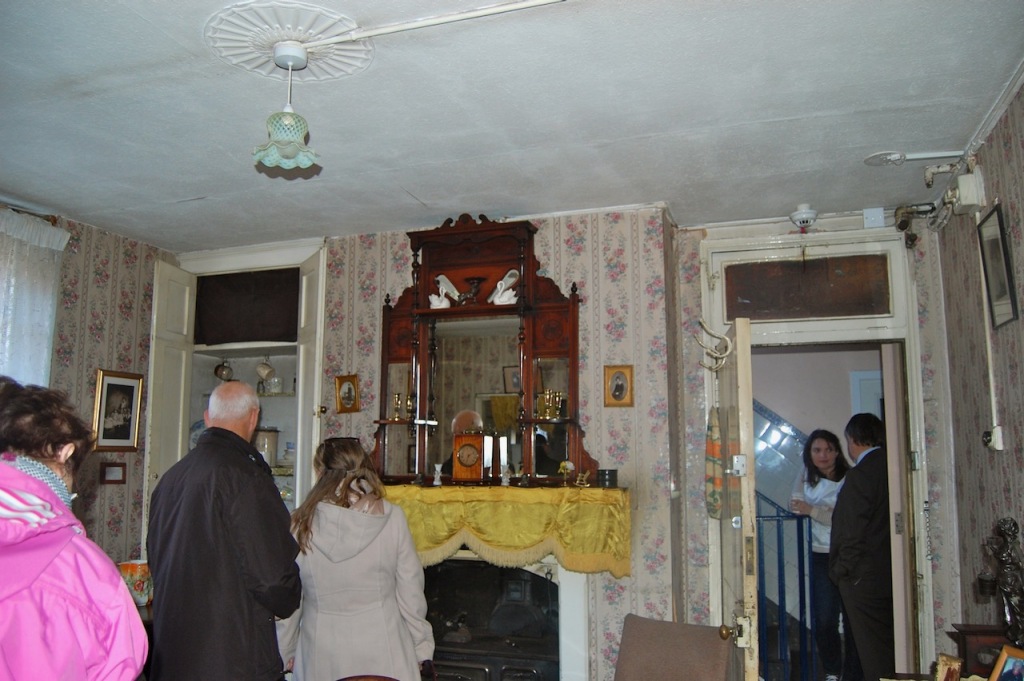
The Iveagh Trust buildings were commissioned by the Earl of Iveagh in 1901. The architects were Joseph and Smithem, London architects. The centrepiece of the buildings, built to house people who lived in the slums about St. Patrick’s cathdral, was the Iveagh Baths.
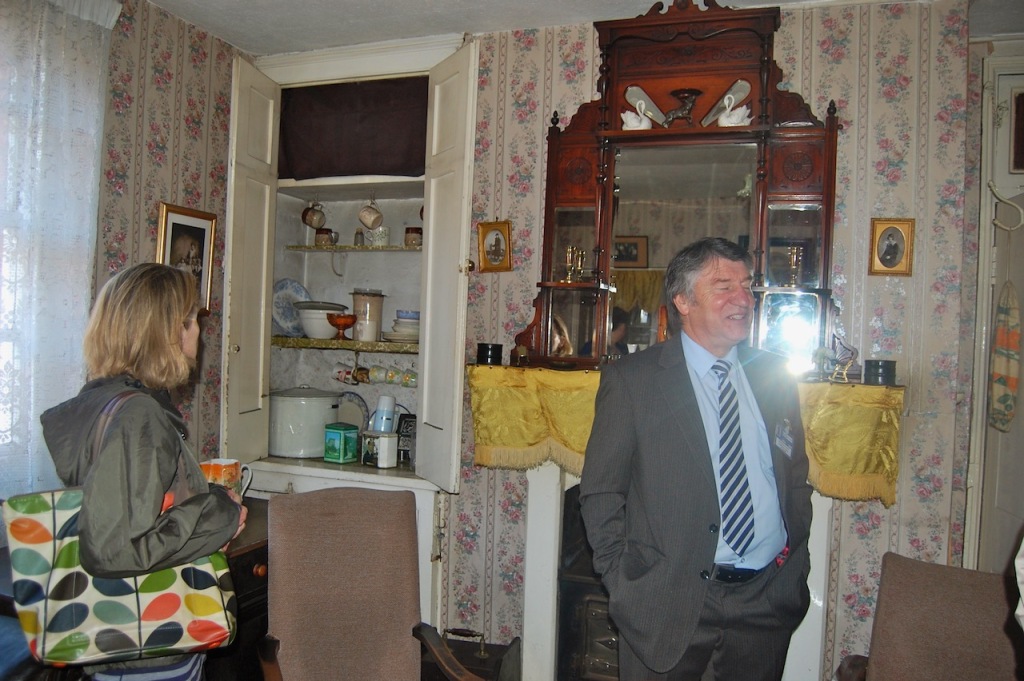
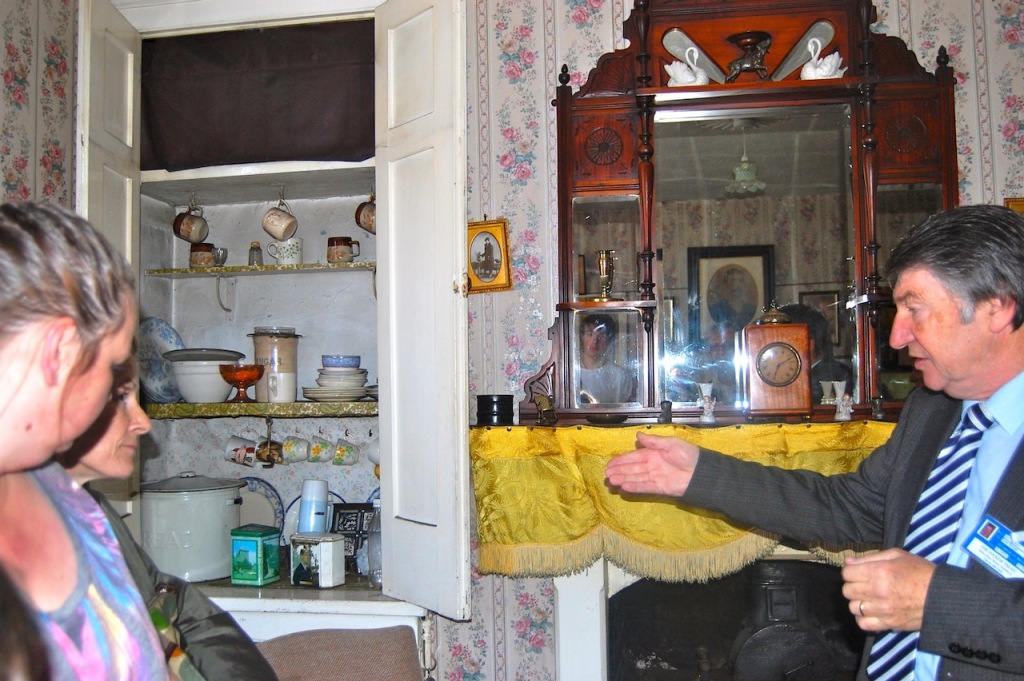
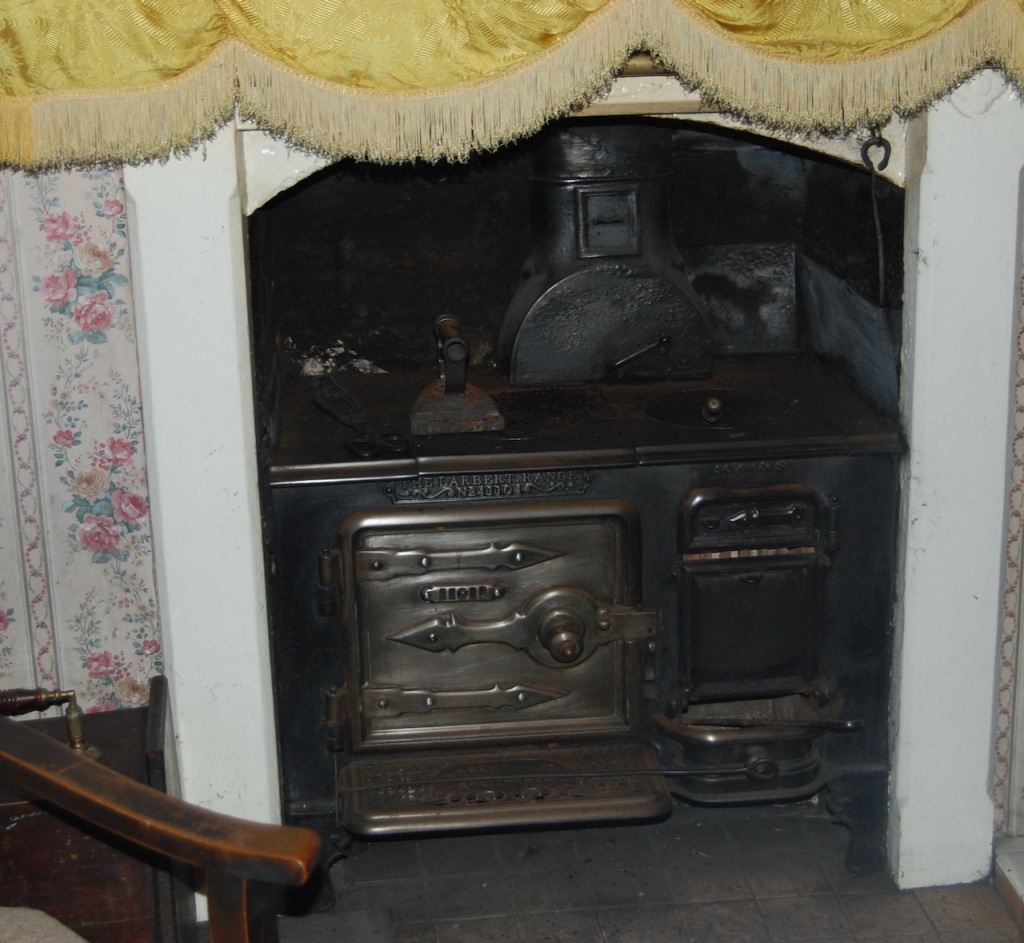

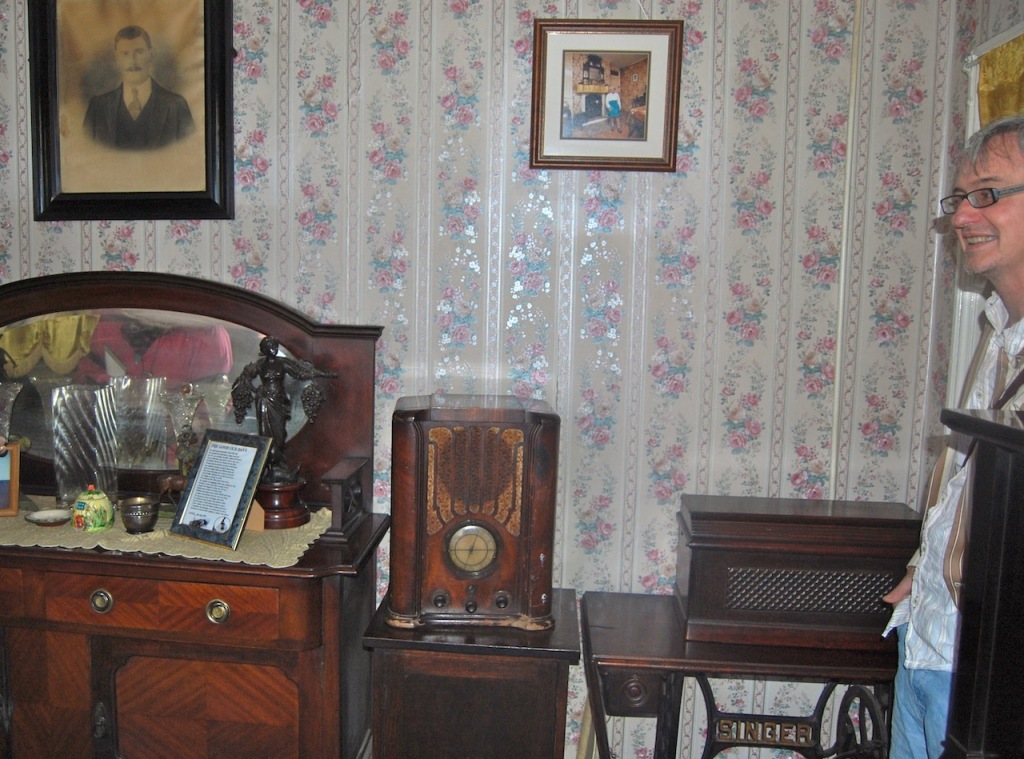
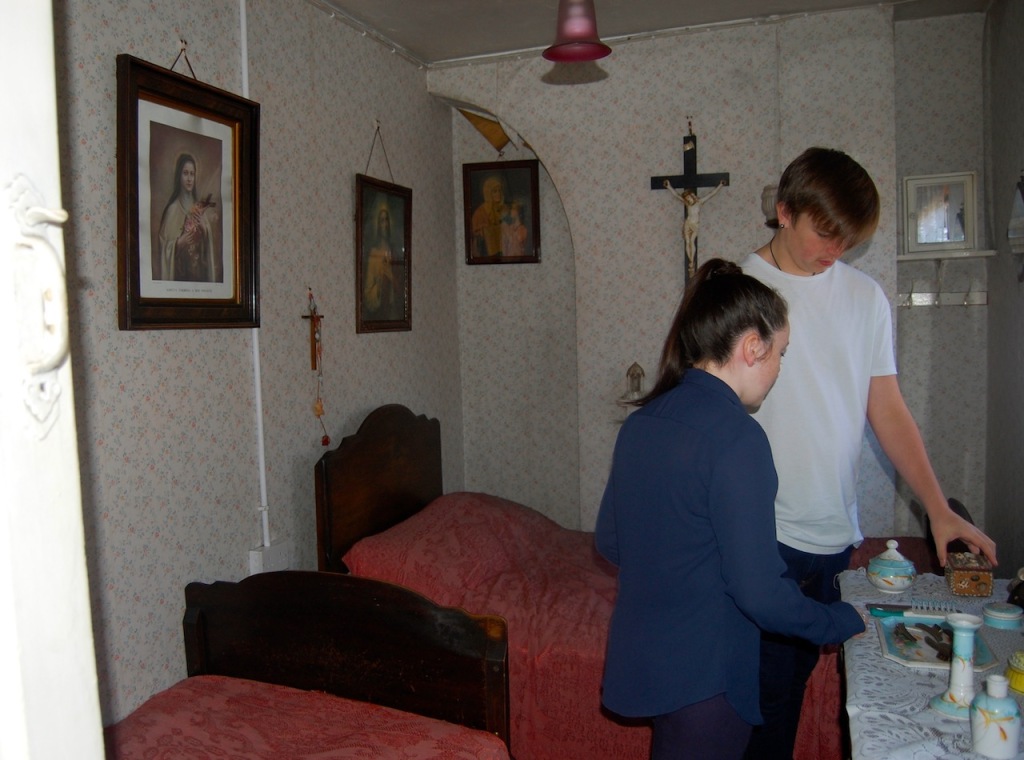
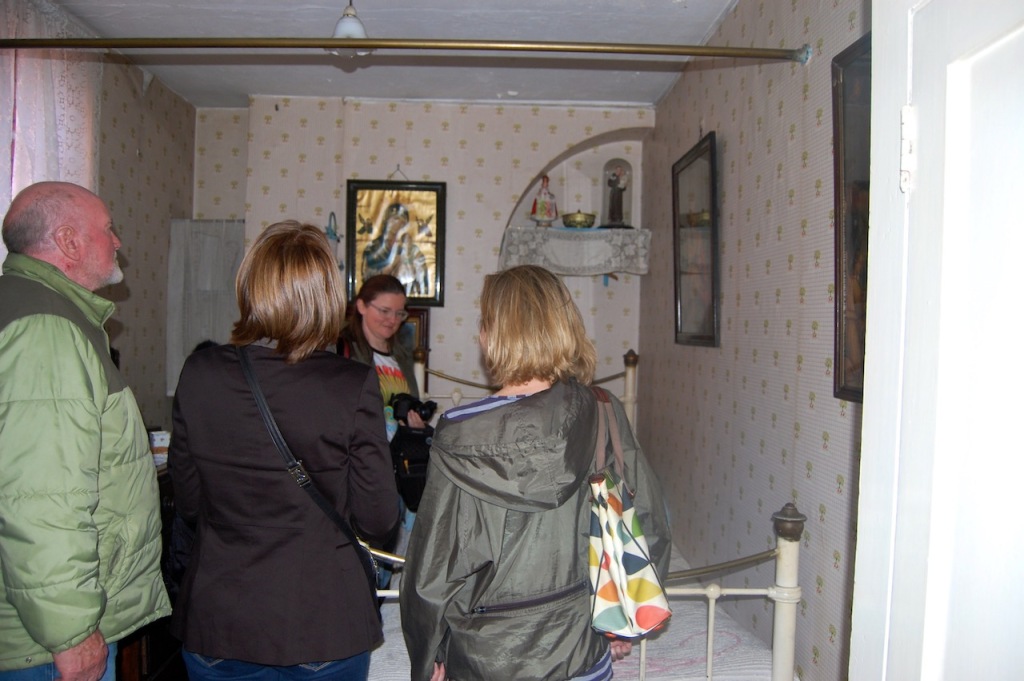
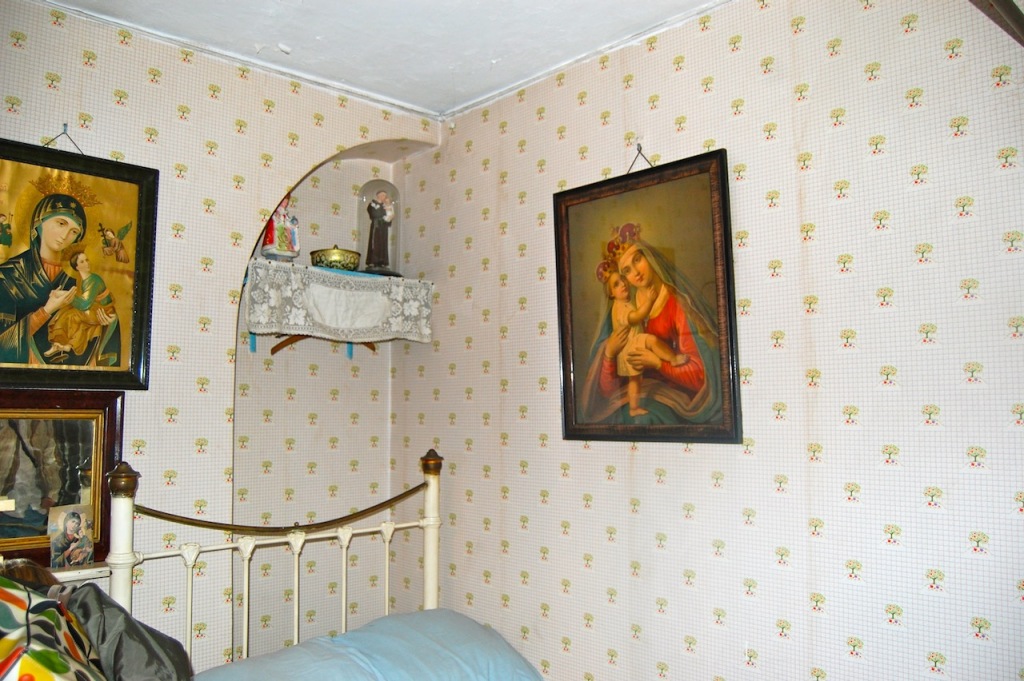

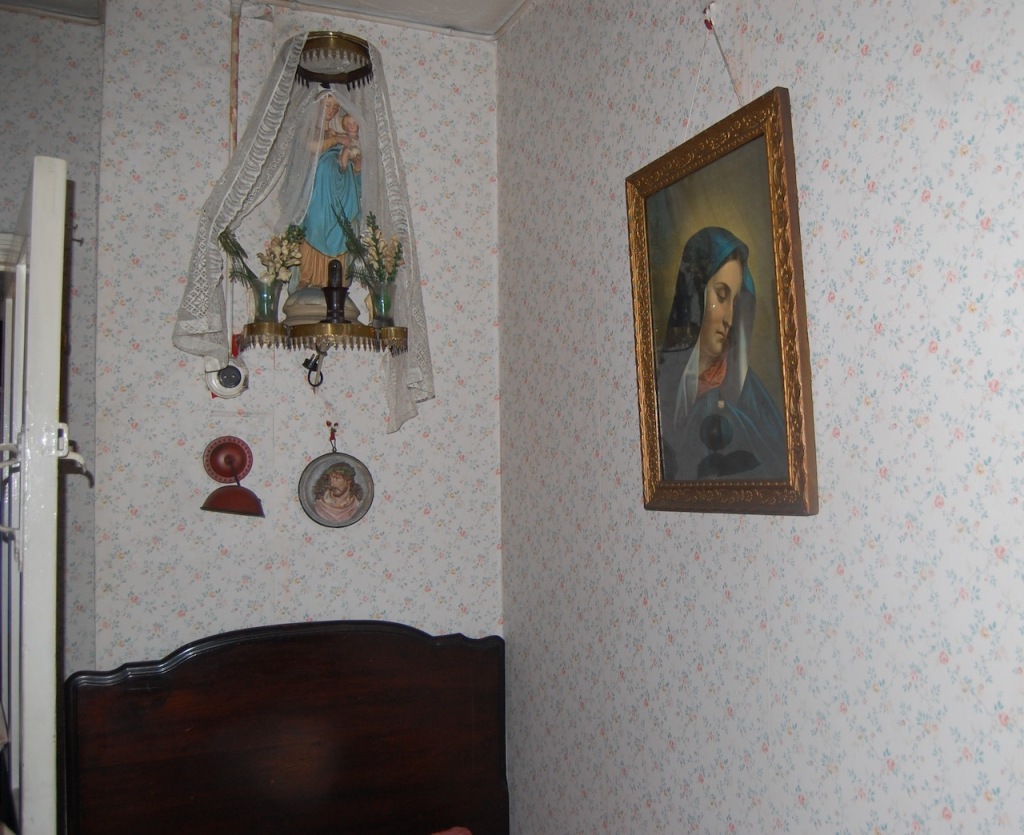
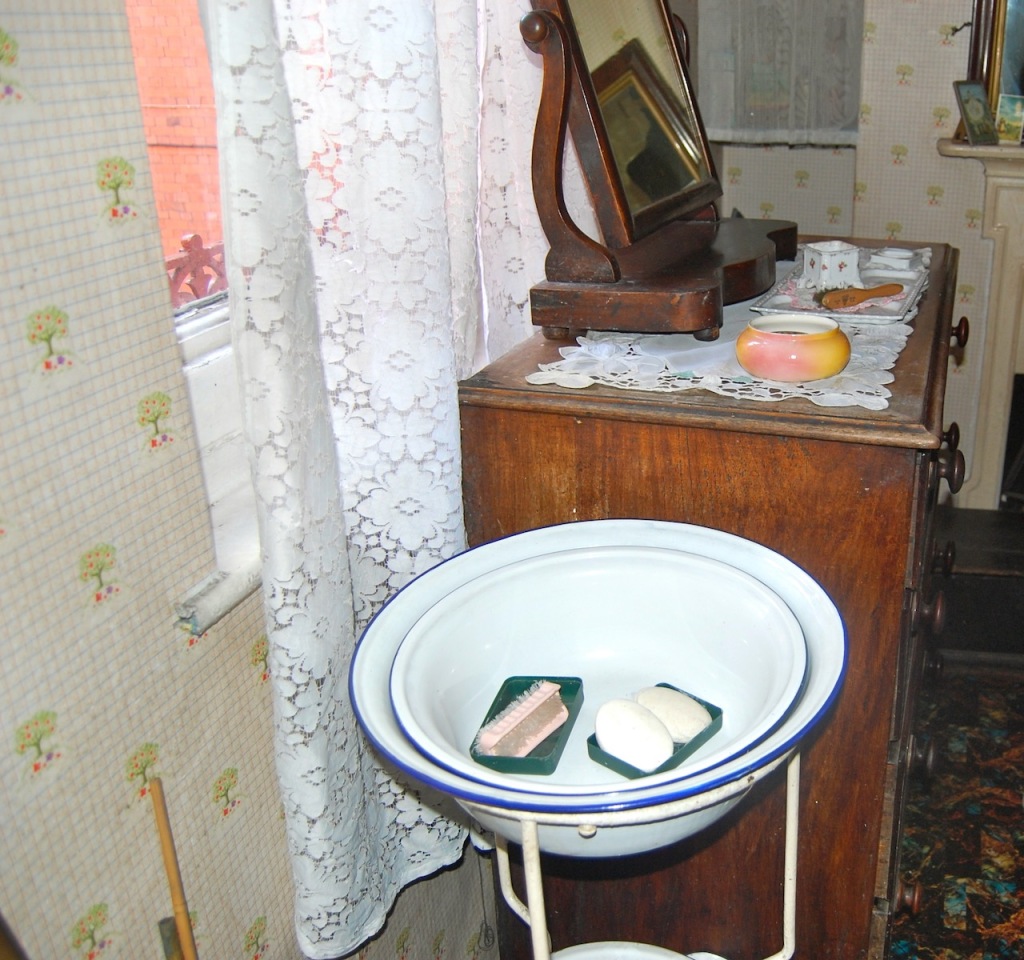
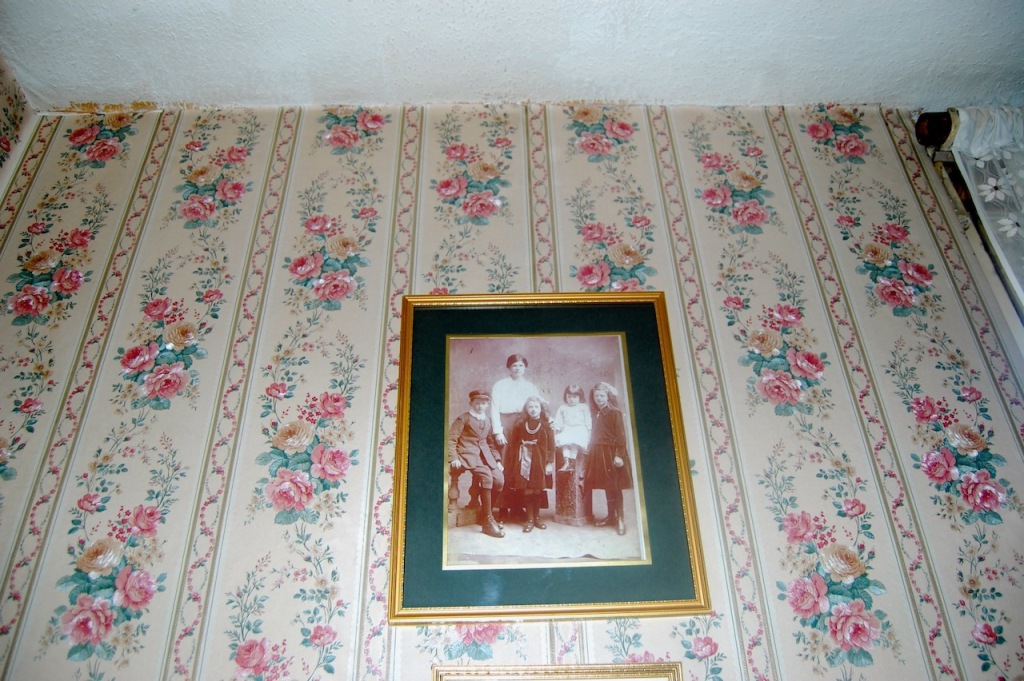

13. Mansion House, Dawson Street, Dublin – private, home of the Mayor of Dublin (Open House 2015)
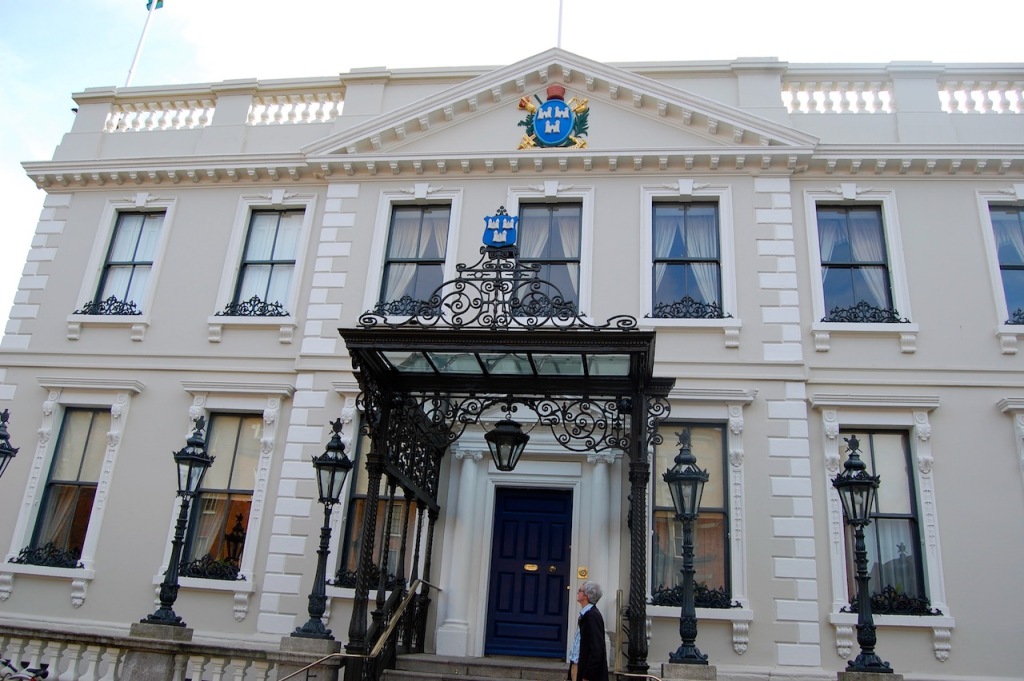
The Buildings of Ireland website featured the Mansion House as one of its Buildings of the Month, and tells us that The Mansion House, Dawson Street, is the oldest freestanding house in the city and the only surviving mayoral residence in Ireland.
The Mansion House owes its origins to Joshua Dawson (1660-1725), a member of the Guild of Merchants and at the time the second-wealthiest man in Ireland, who in 1705 purchased a tract of poor marshy ground east of the medieval core of Dublin and within two years had laid out a new street which he named Dawson Street. Work on a suitable townhouse began in 1710 and it is clear that the house was intended as the centrepiece of the new street.
The house, a rare example of a Queen Anne-style house, was substantially refronted in 1851 when the original brick finish was plastered, the windows were given robust classical frames, and the parapet was remodelled about a central pediment carrying the Coat of Arms of the City. The elaborate cast-iron canopy (1886) was designed by Daniel J. Freeman (1856/7-1902), City Architect (fl. 1879-93).
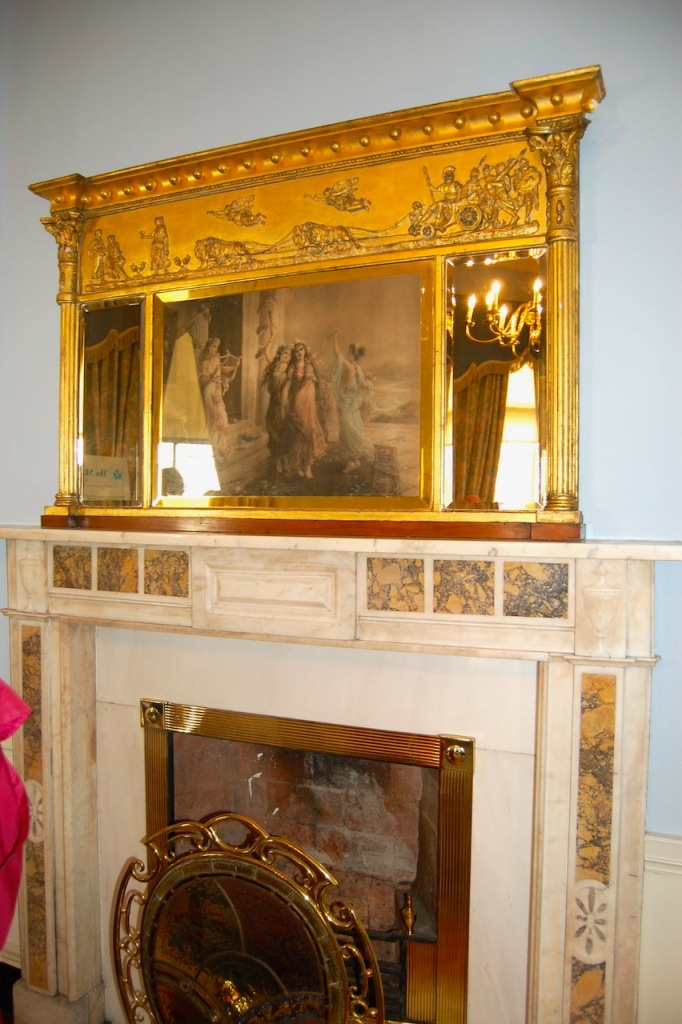

The death of Queen Anne in 1714 abruptly disrupted Dawson’s ambitious plans. Fearing that her successor would not be so favoured towards him, Dawson agreed on the 18th of May, 1715, to sell the house to Dublin Corporation at a cost of £3,500 in addition to a yearly ground rent of forty shillings and a loaf of double-refined sugar weighing six pounds due each Christmas. As a condition of the sale, Dawson agreed to build an additional room which could be used for civic receptions: the now-famous Oak Room.
The Oak Room was the venue of the annual City Ball throughout the eighteenth century. On such occasions the Lord Mayor dispensed generous hospitality, aided in no small part by a yearly grant of twenty thousand oysters from the civic oyster beds. The Oak Room continues to play a central role in the life of the Mansion House today. [4] It contains portraits of Charles II, George II, Duke of Cumberland and the Duke of Richmond.
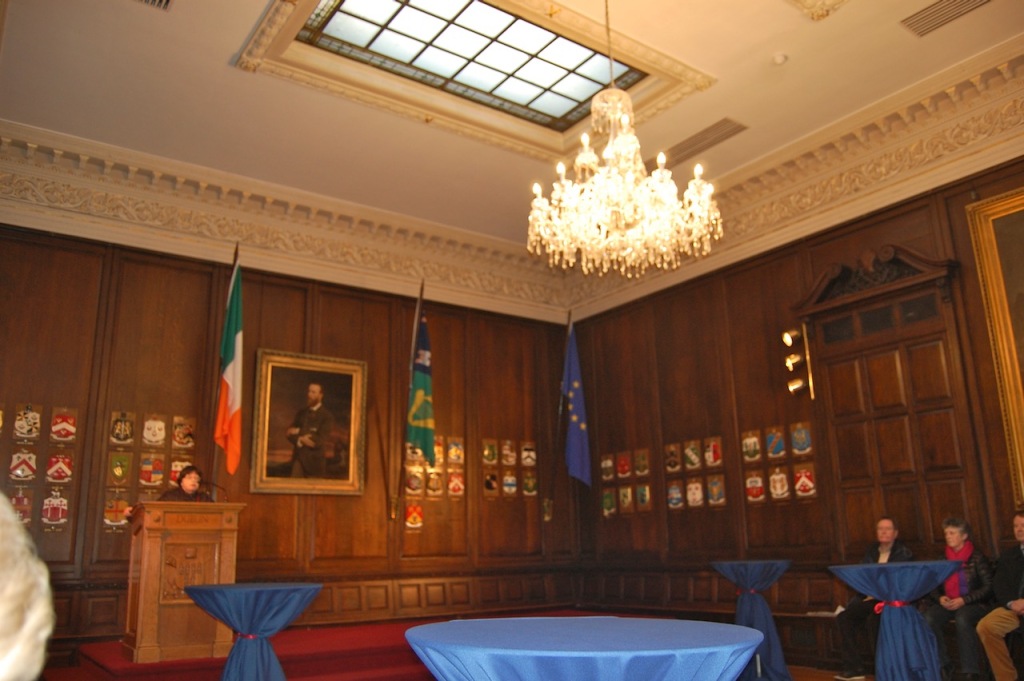

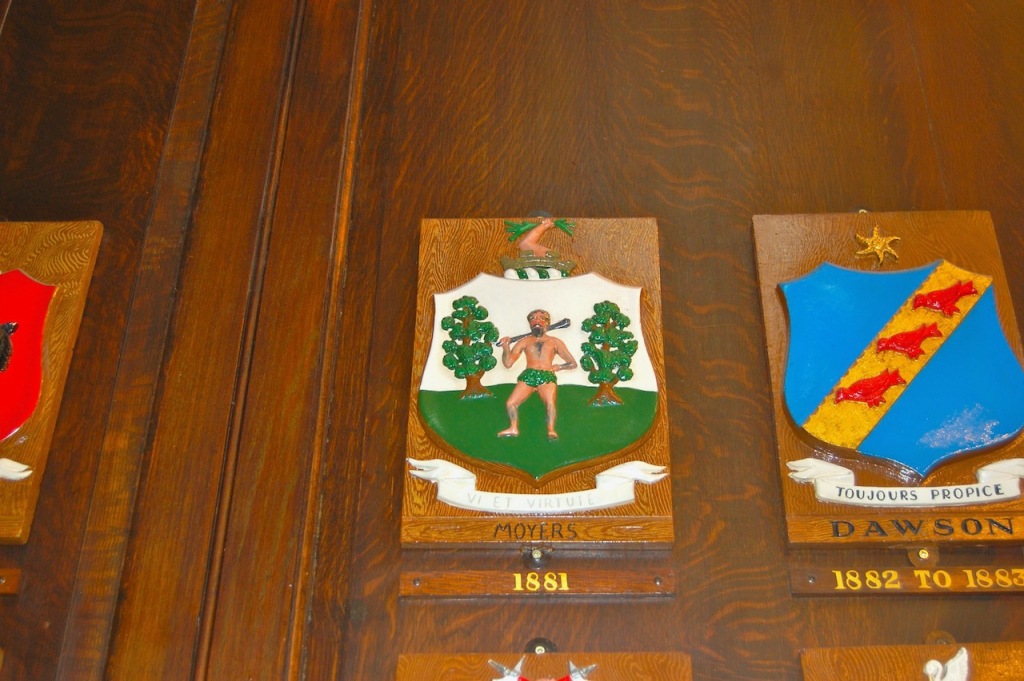

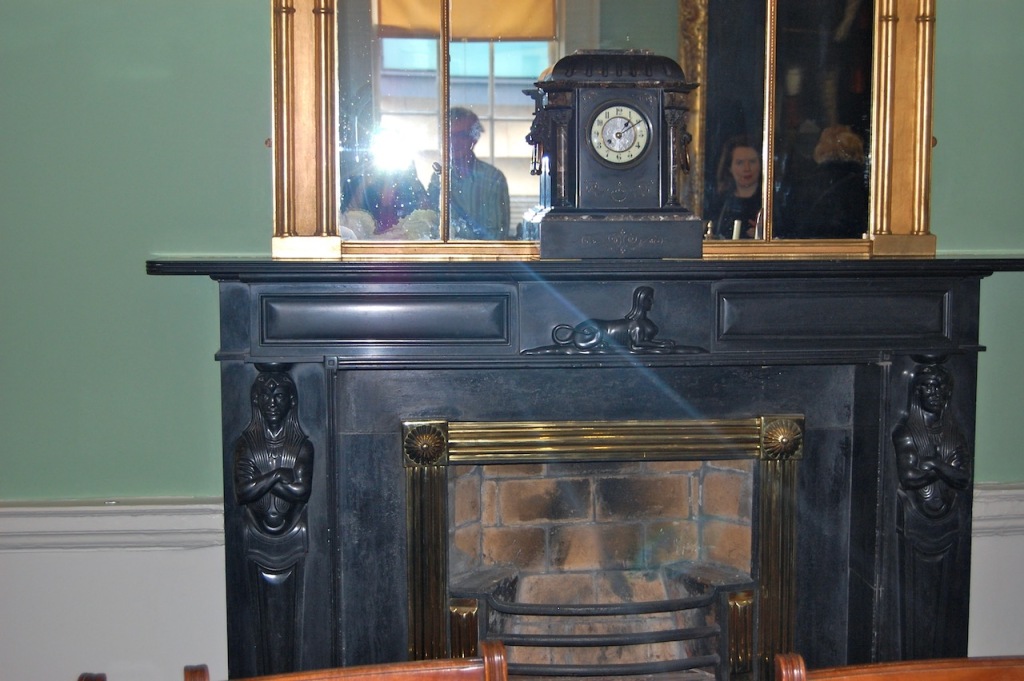
The extension of the property continued well into the nineteenth century and included the Round Room completed in just six weeks in 1821 for the reception of King George IV. Designed by John Semple (d.1840) in the “exotic” style, an apparent nod to the monarch’s Hindu-Gothic Brighton Pavilion, it was remodelled 1892 by J. G. Ashlin, and was the venue for the first sitting of Dáil Éireann in January 1919.
The improvement of the Mansion House continued into the early twentieth century when, in anticipation of a royal visit by Queen Victoria, new ceilings were installed in the entrance hall and drawing room to designs by Charles James McCarthy (c.1857-1947), City Architect (fl. 1893-1921). The stained glass window over the principal staircase dates from the same period and carries the signature of Joshua Clarke and Sons of North Frederick Street. The Dublin City coat-of-arms again features as the centrepiece in a frame including the shields of the four provinces of Ireland and the names of prominent supporters of Home Rule. Topped and tailed by a Garland of Peace and a Cornucopia of Prosperity, the window is today known as “The Peace Window”.
14. Marsh’s Library, Dublin (2013)
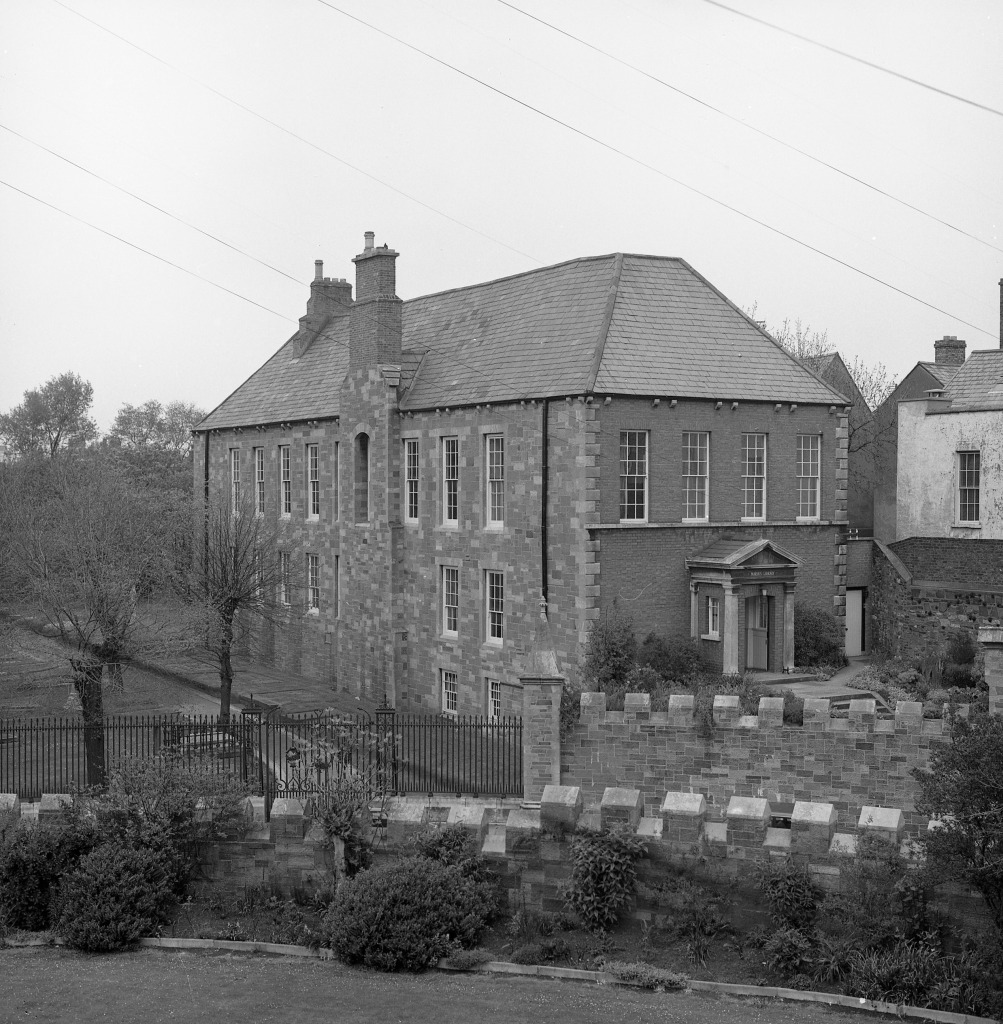
Marsh’s Library was built in 1701, designed by William Robinson who was surveyor general from 1670-1700, and who also designed the Royal Hospital Kilmainham. The Library was set up as the first public library in Ireland, by Archbishop Narcissus Marsh (1638-1713).

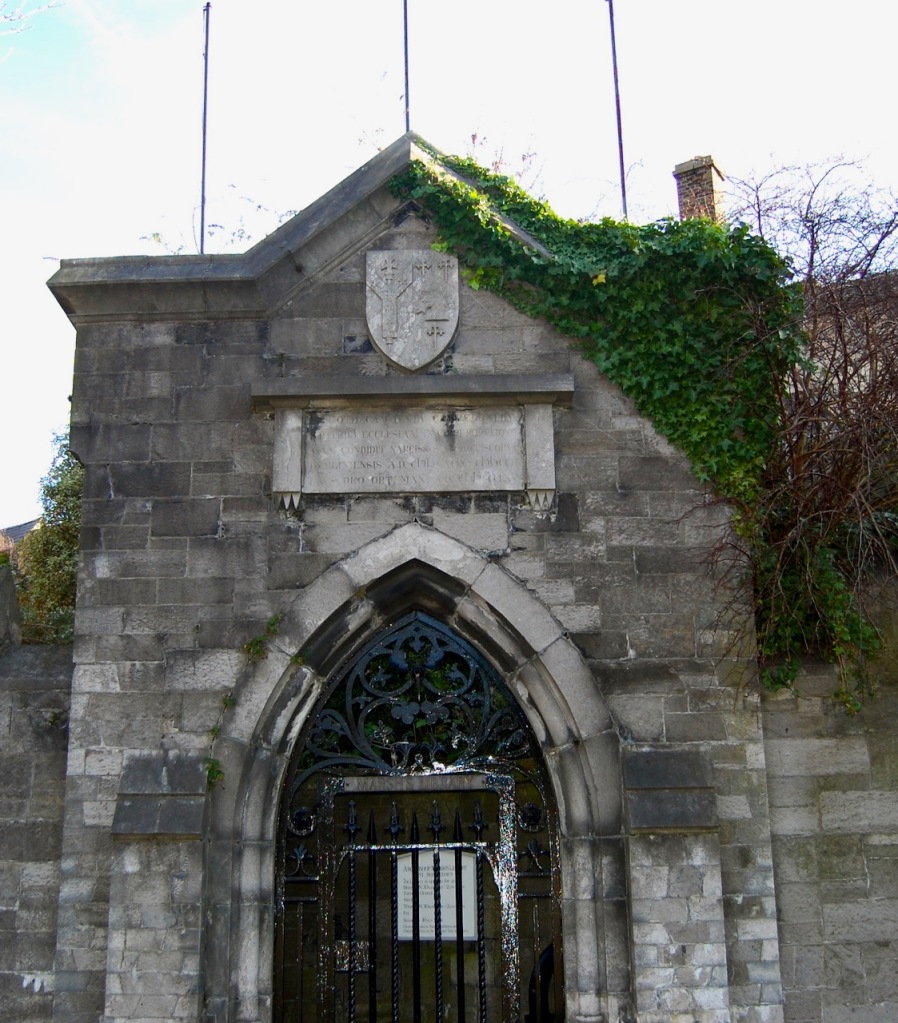
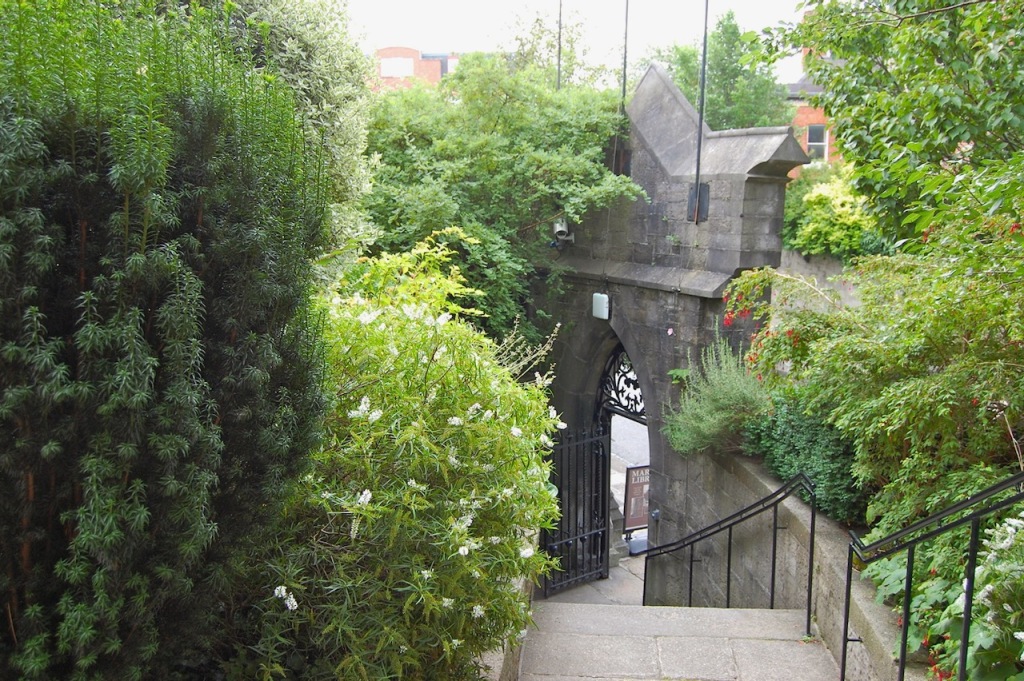
The interior of the library remains unchanged from when it was set up. It is no longer a public library, unfortunately, as the books are too delicate for general handling, but one can request to look up books in the catalogue, and it operates as a sort of museum open to the public for a fee. It contains dark oak bookcases topped with lettered gables and a mitre. The library contains the original reading cages – a reader would be locked in so that he or she could not steal the books.

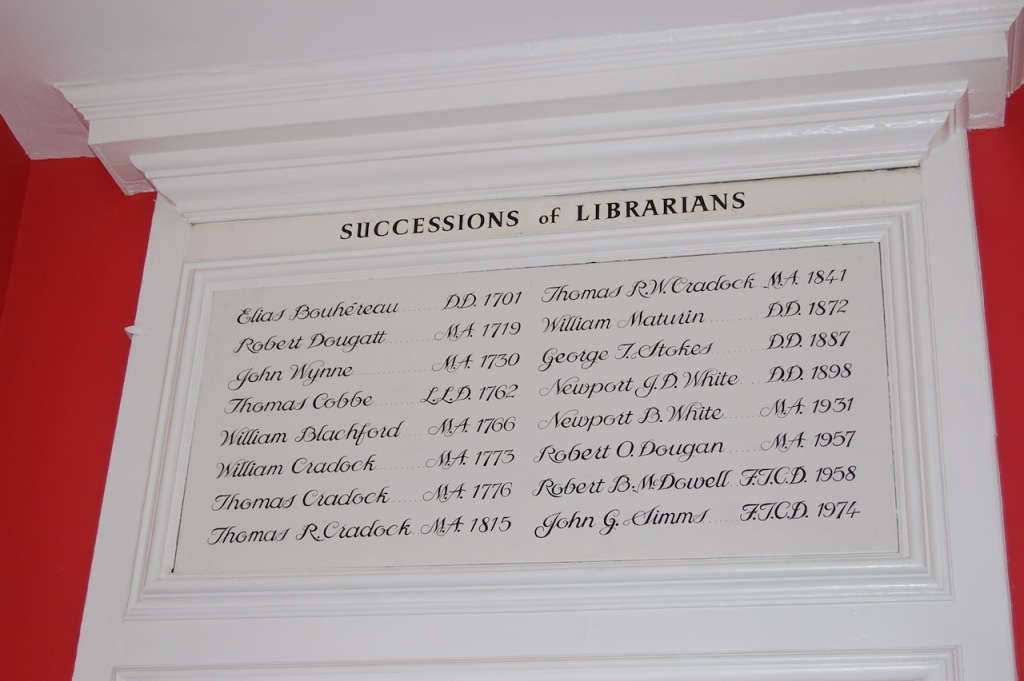
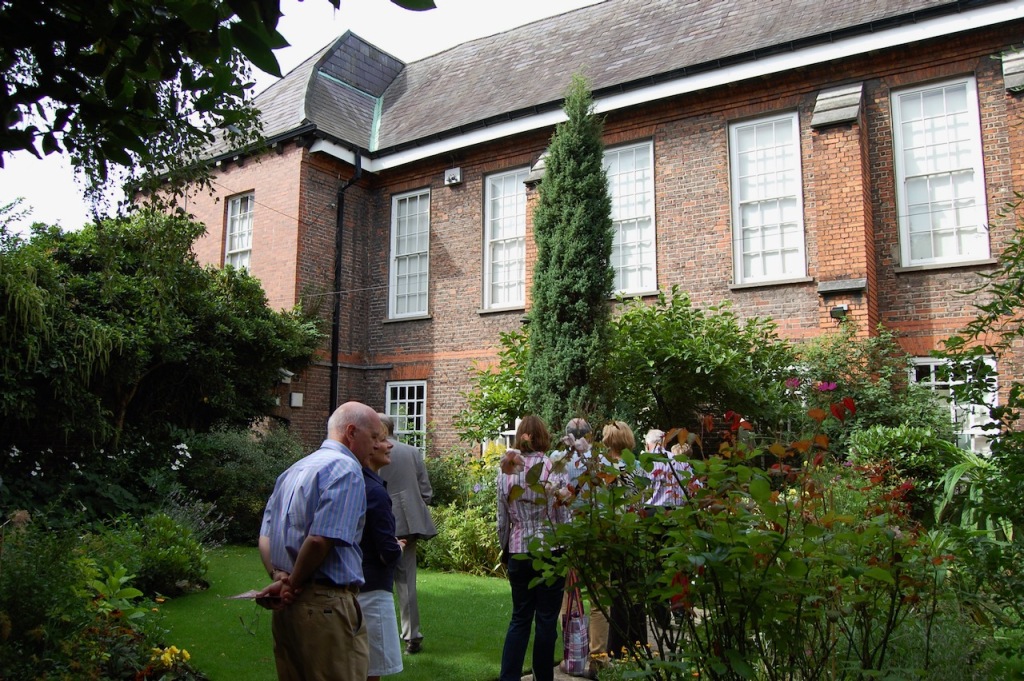
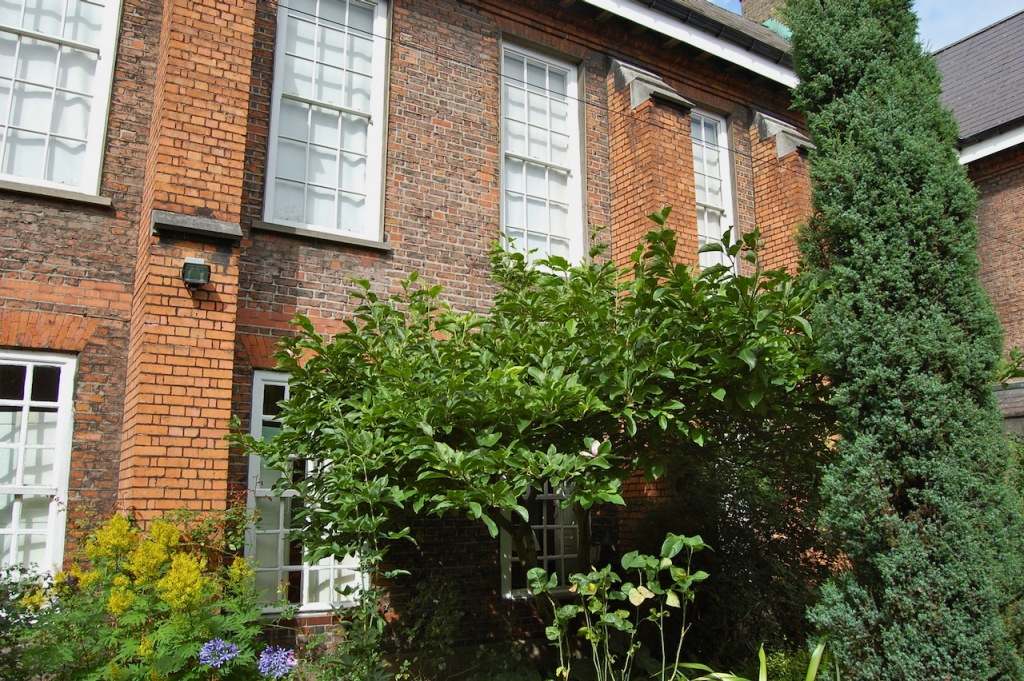

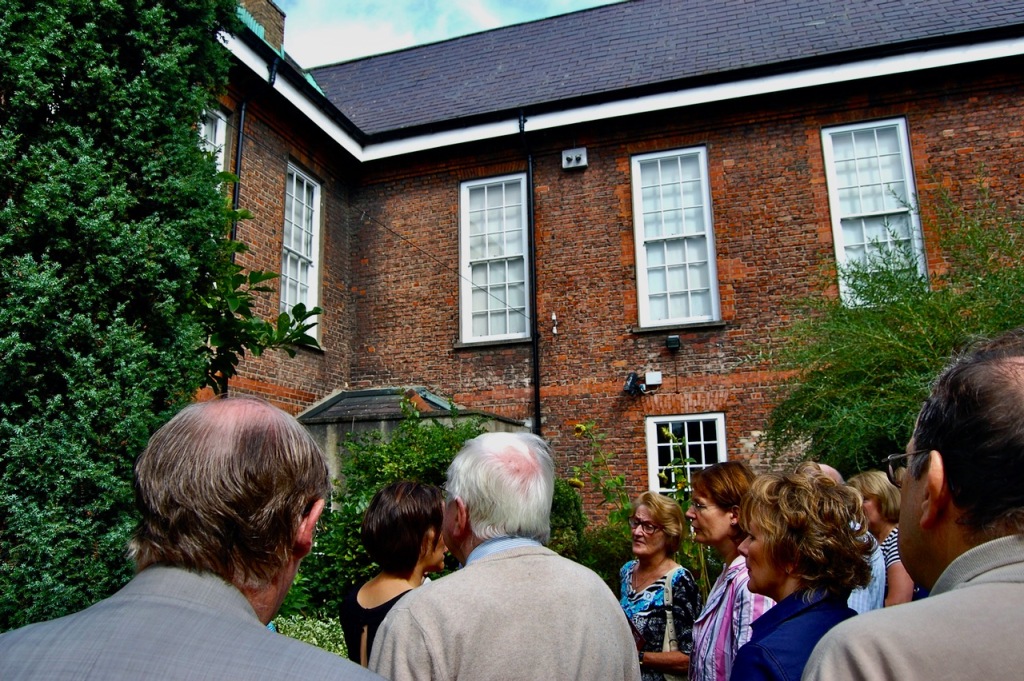
15. 10 Mill Street, Dublin (Open House 2017)

10 Mill Street was built in the 1720s by the Brabazon family, Earls of Meath. In the early 19th century it was converted into a school by the Christian Brothers and later used by several charitable groups. It was remodelled in 1894 by architect George P. Beater as a Methodist mission house and school. [Archiseek]

After renovations:
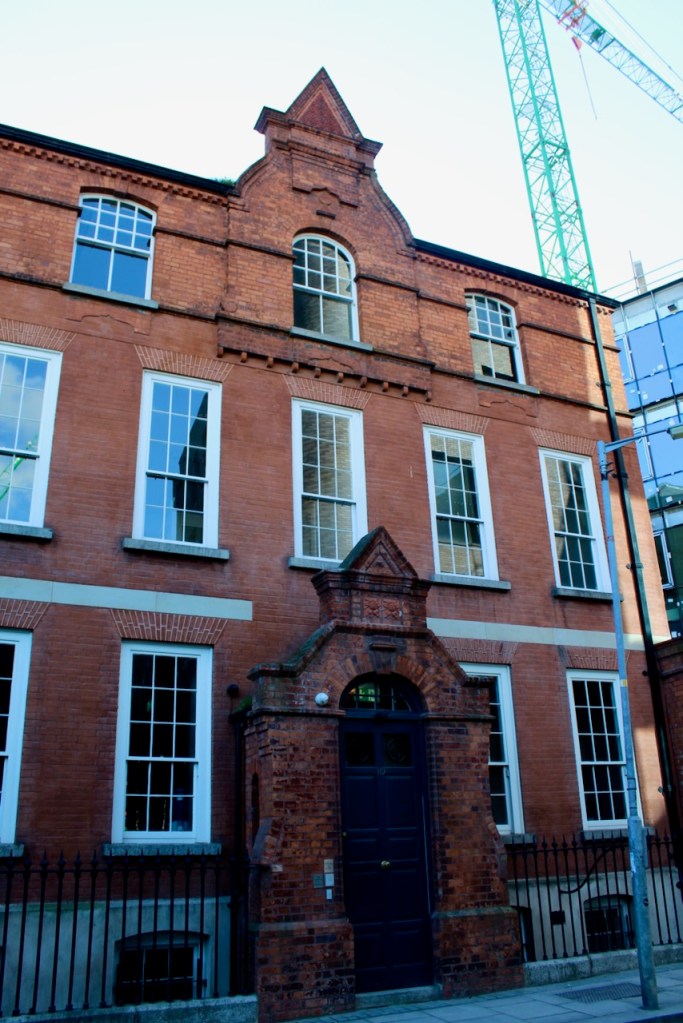


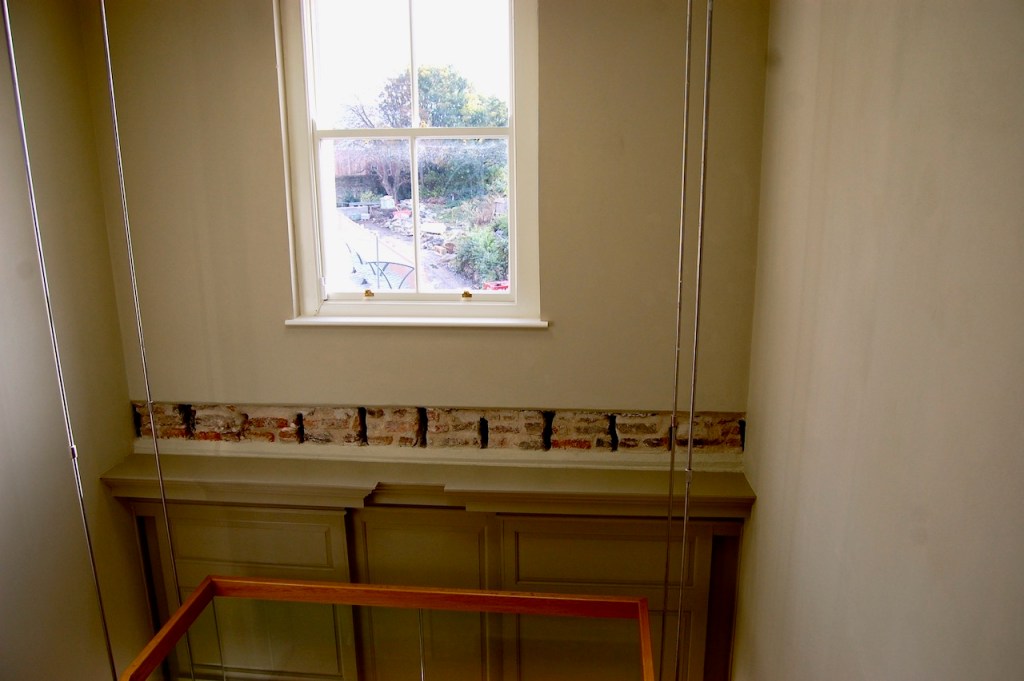

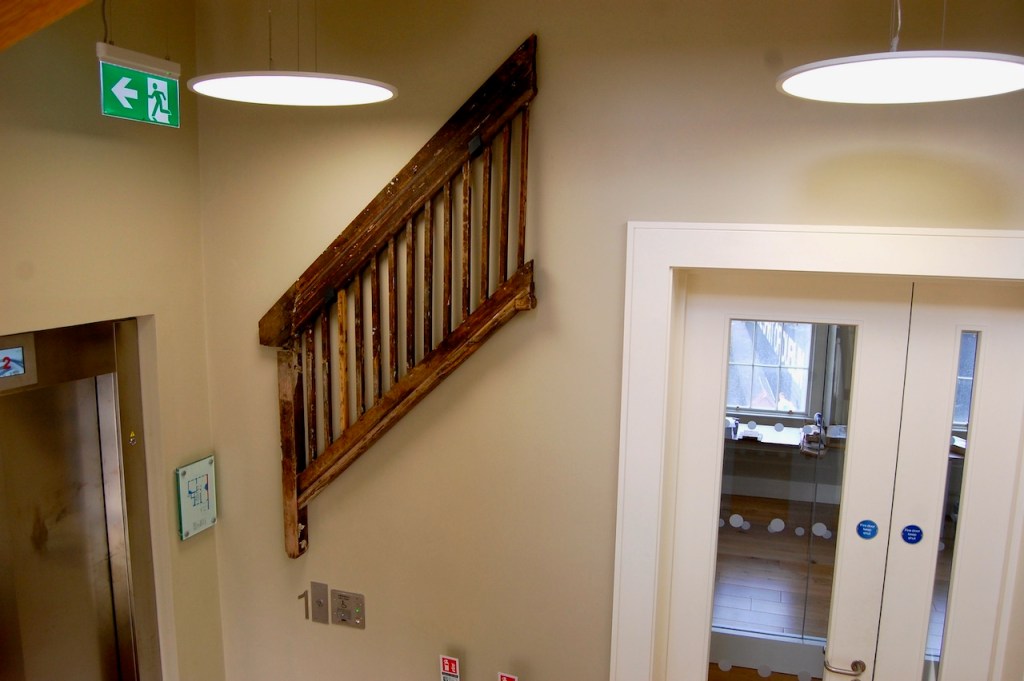

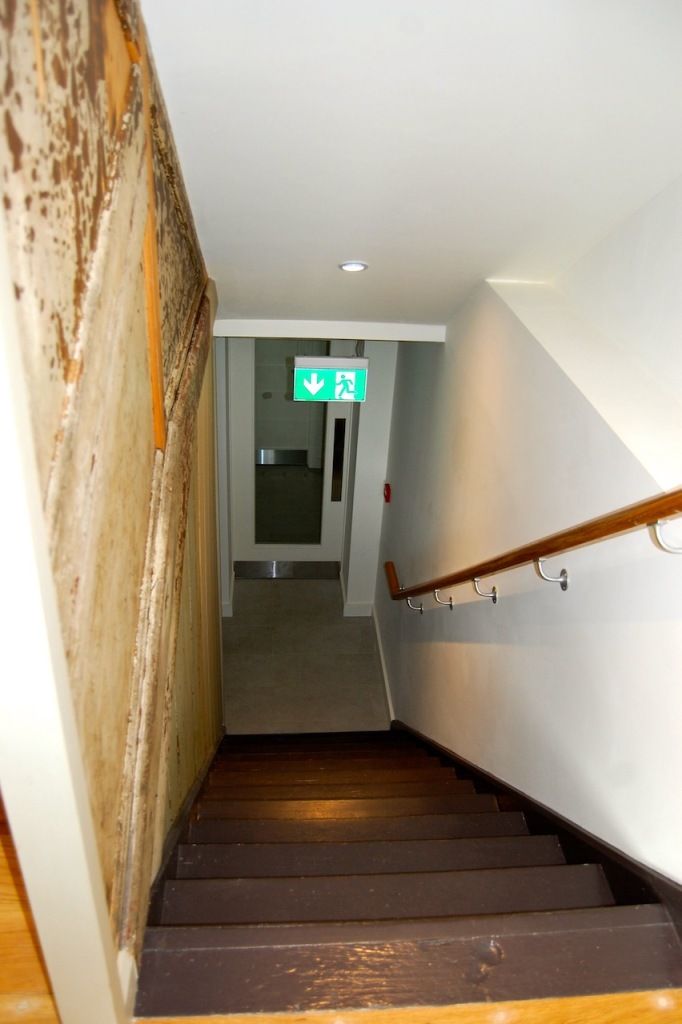
14. Pigeonhouse Power Station and hotel (2021)
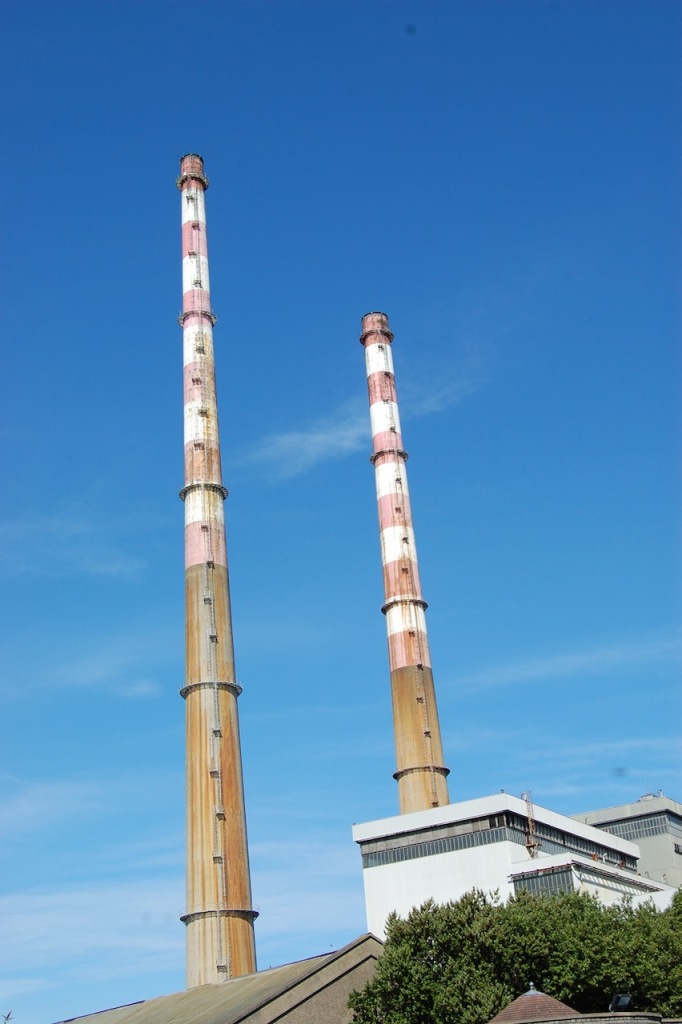
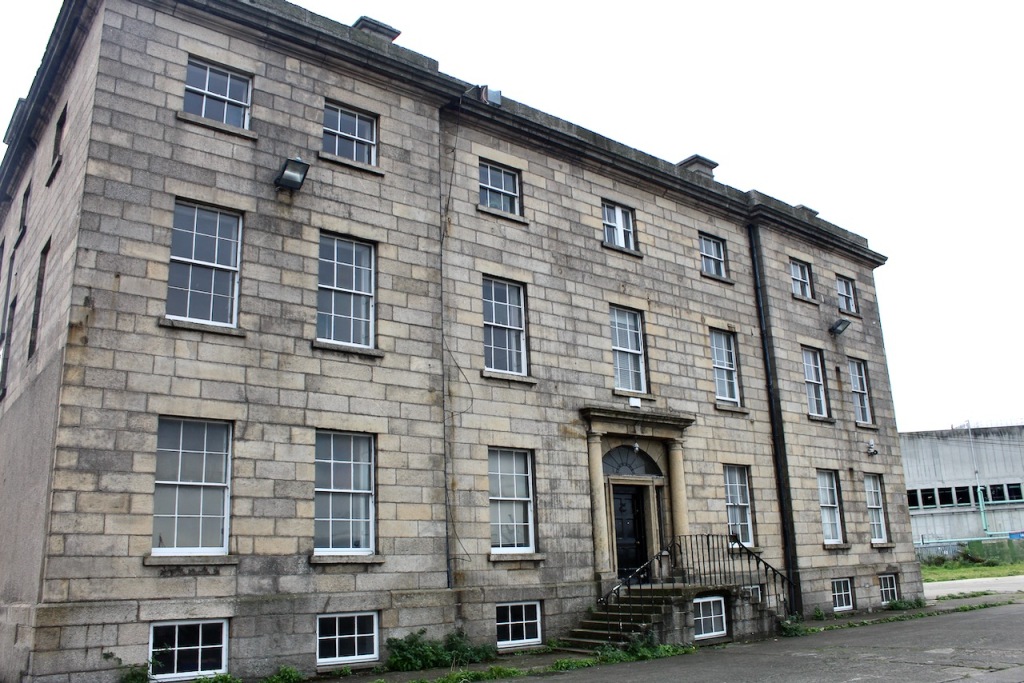
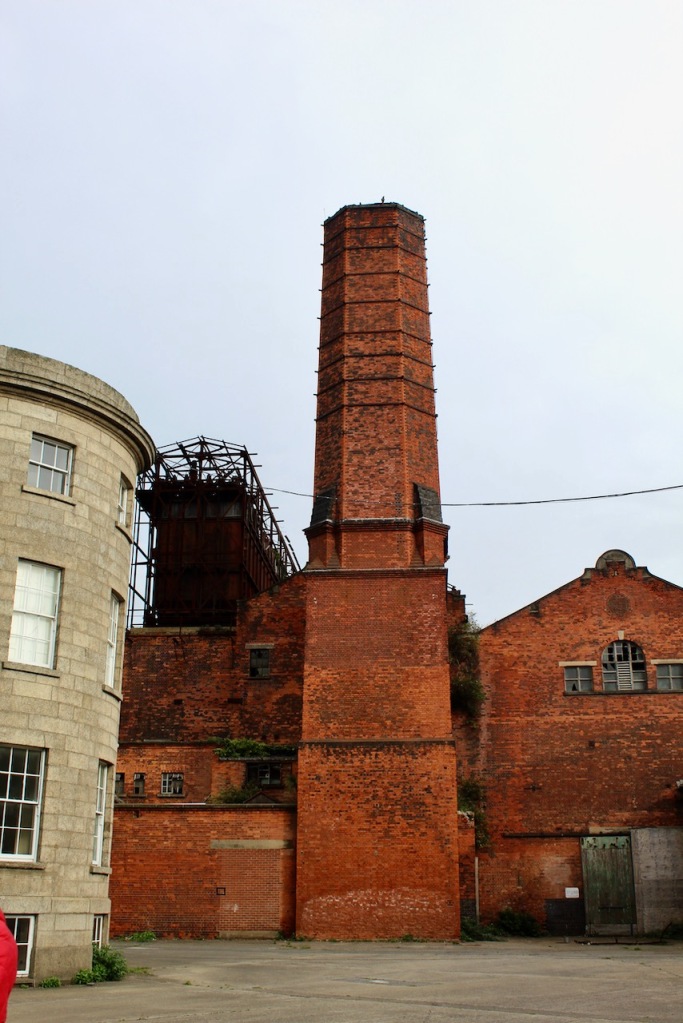

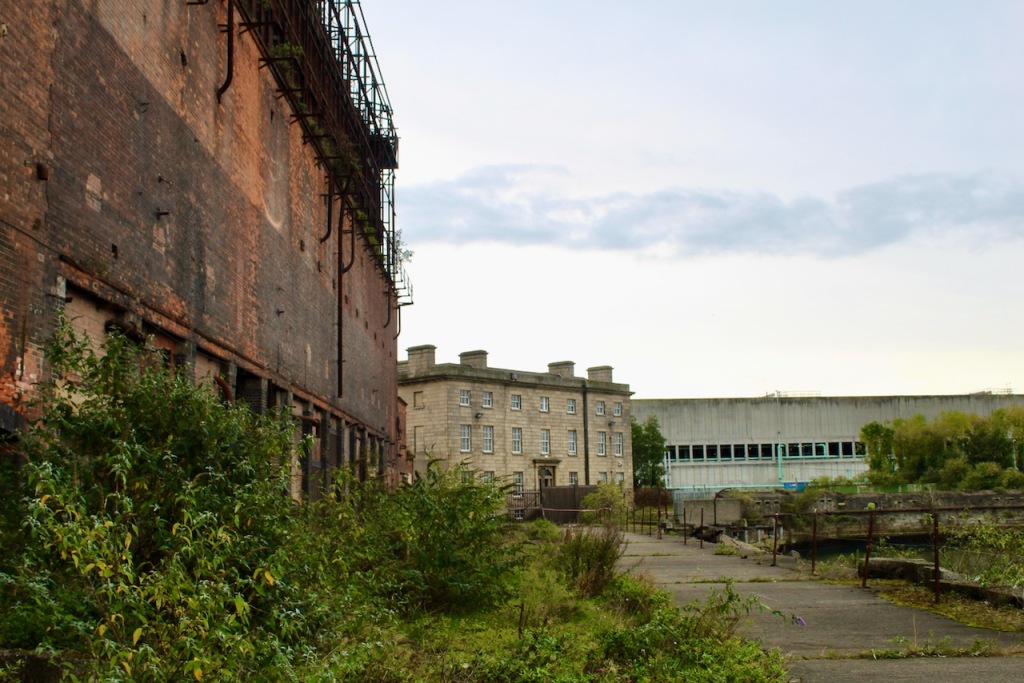
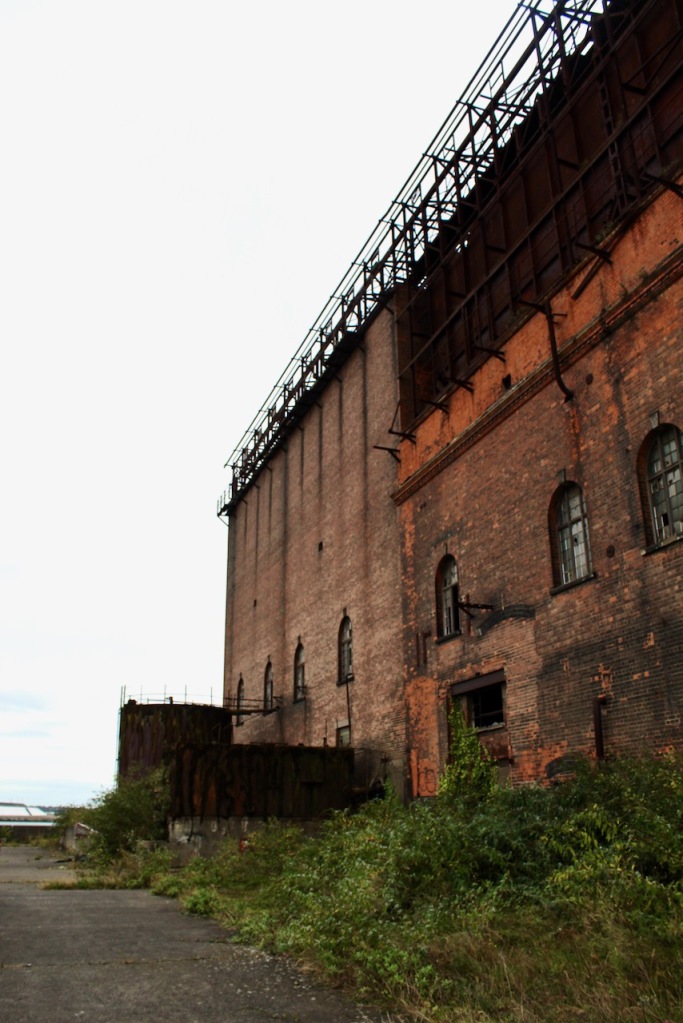
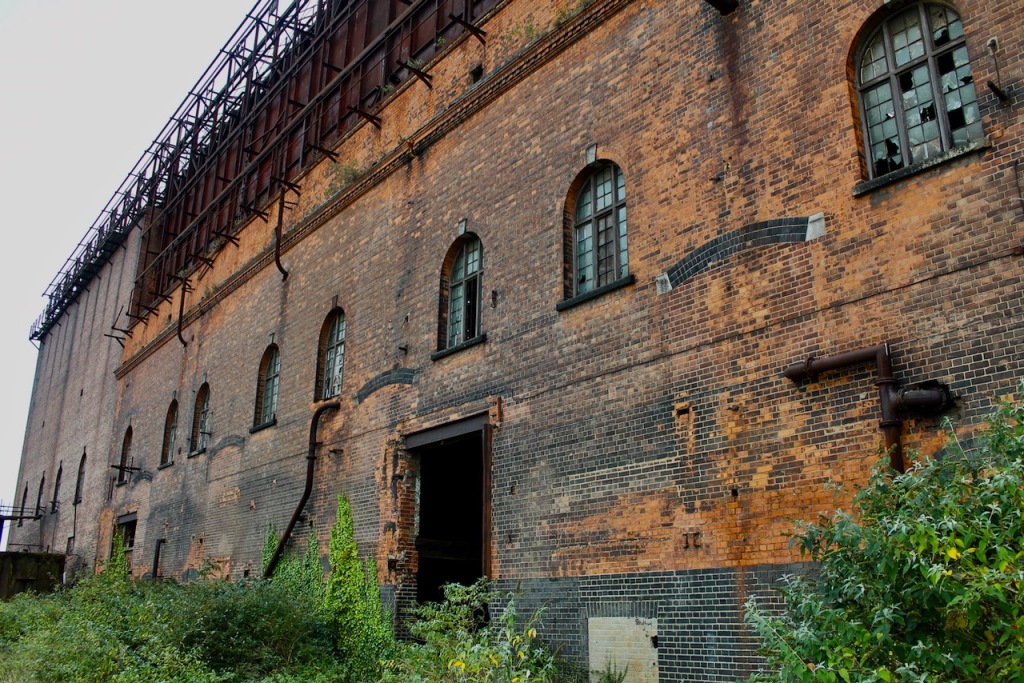



15. Rates Office, formerly Newcomen Bank, Dublin (2013)

Built in 1781 by Thomas Ivory. The original building was half the size, and Ivory’s half was built in mirror image with a portico built to link the two halves. [archiseek]
In 1722 Simon (or William?) Gleadowe (d. 21 August 1807) married into the Newcomen family of Carriglass House in County Longford and took their name. He started the Newcomen Bank. He was knighted to become 1st Baronet Newcomen in 1781 and elected to the Irish Parliament. He voted for the Act of Union and his wife Charlotte was rewarded with a Peerage to become Viscountess Newcomen. Their son inherited her title and became Thomas Gleadowe-Newcomen, 2nd Viscount Newcomen (1776-1825), and he also inherited the Newcomen Bank. The bank had a series of failures and closed in 1825, and Thomas shot himself and died in his office. After his death the title became extinct.

The Open House description tells us:
“An elegant block in Portland stone, the building stands at the corner of Cork Hill and Castle Street, doubled in length on Cork Hill by an 1862 addition. Ivory’s original plan comprised three rooms with a large stair hall, with the site’s irregular boundaries concealed by the use of oval rooms. The interior has been recently renovated and retains fine decoration, with highlights including the larger first-floor oval room and the highly decorated ceiling over the stair hall.”
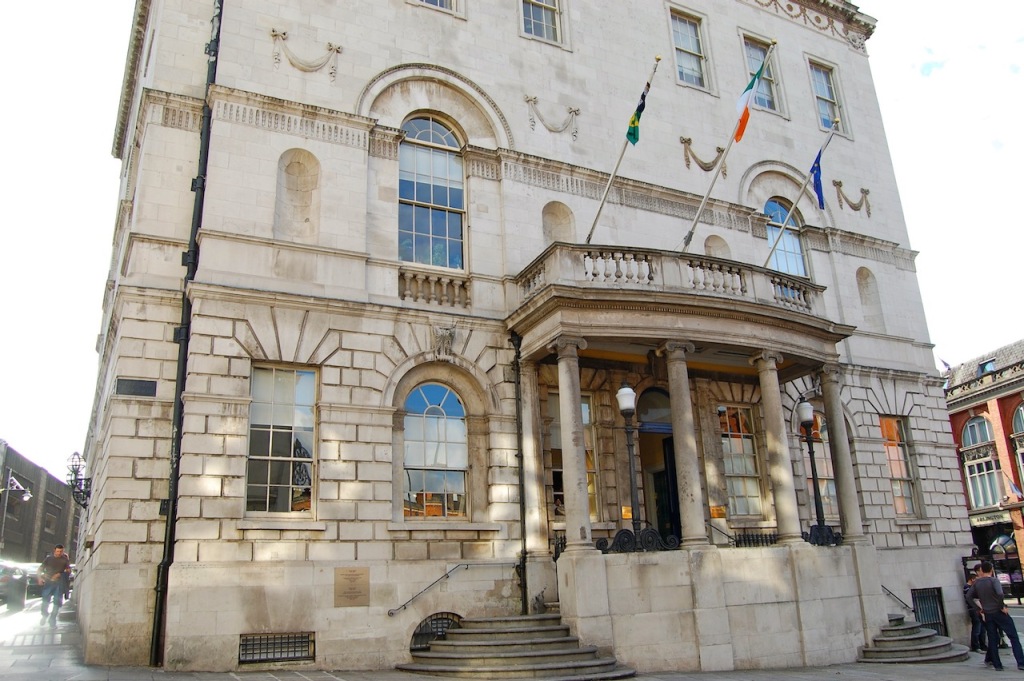

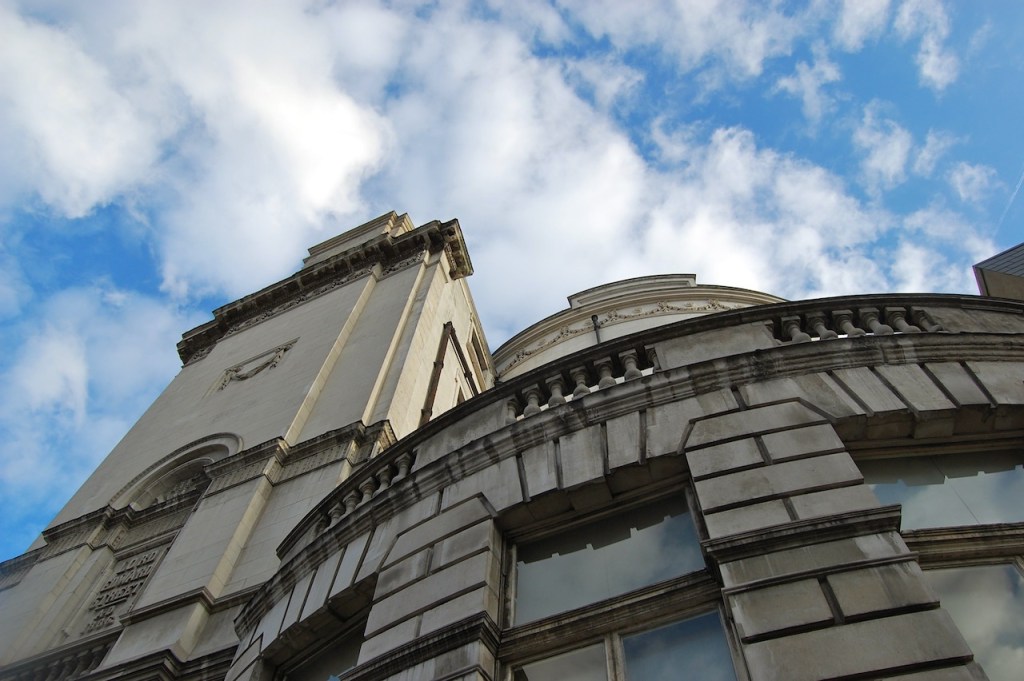
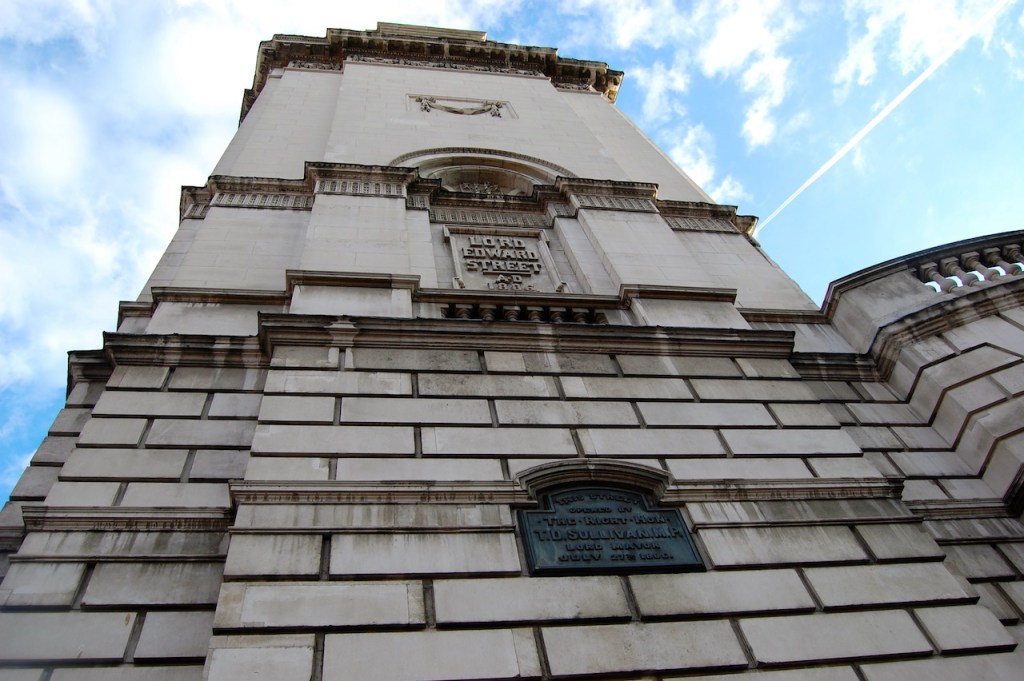

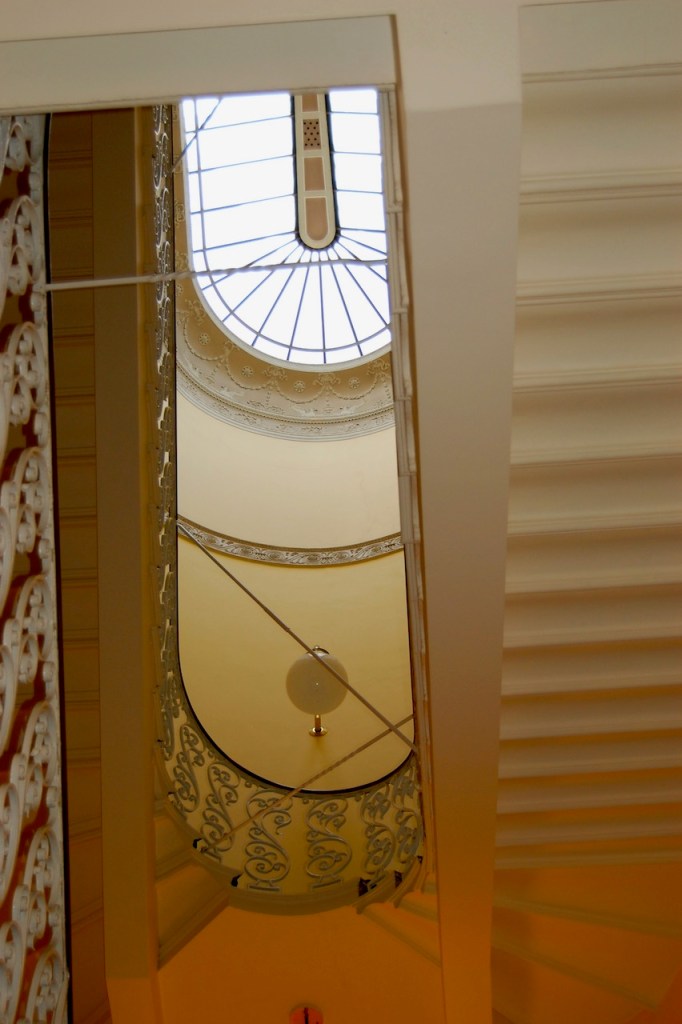


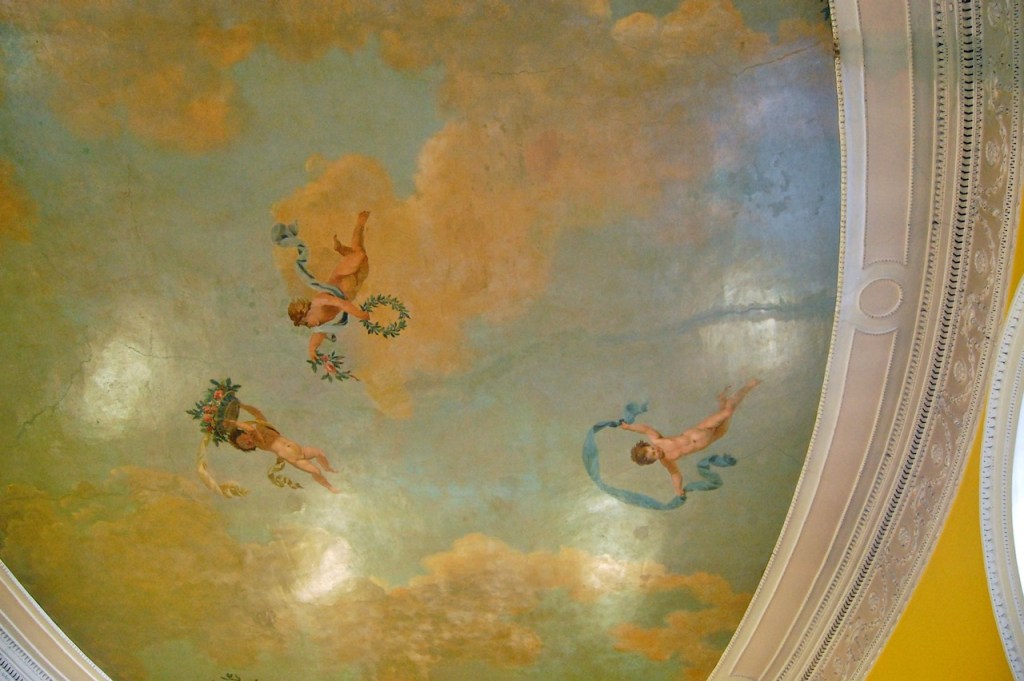

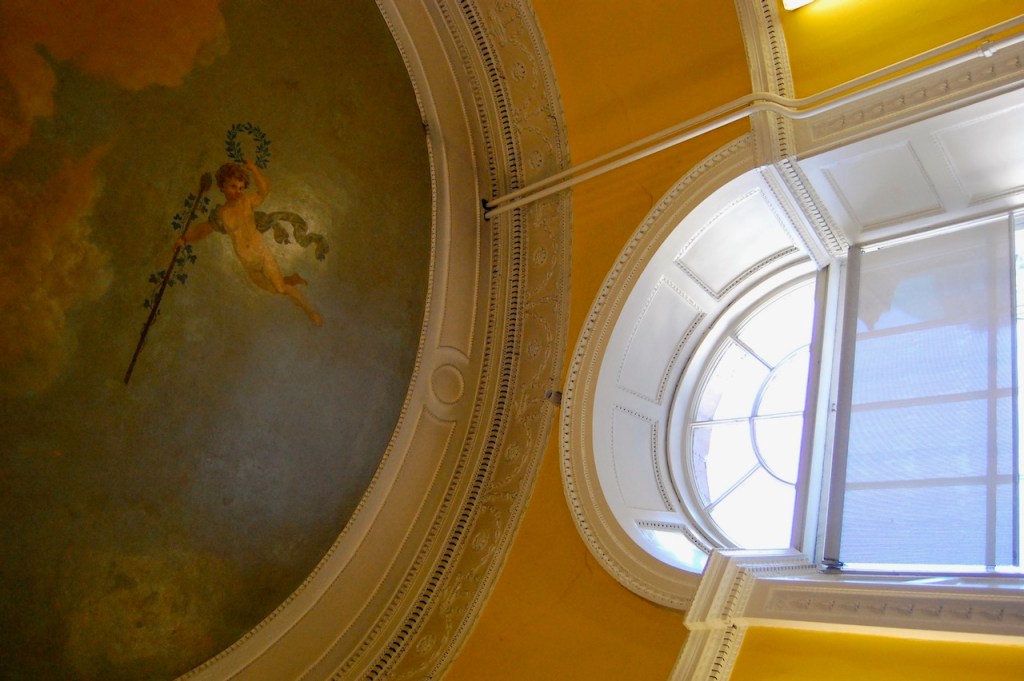


16. Royal Irish Academy Dublin (2013)


17. Royal College of Physicians, Dublin (2013)

Designed by William George Murray who also designed the Hibernian Bank. It was built in 1861 to replace the College of Physicians previous premises which had burned down at this location. The facade eroded and was completely replaced 100 years later in 1960. A description in the 1862 Irish Builder describes it:
“Entering from the portico, the outer hall or vestibule leads by a spacious flight of five steps to the inner hall, in which the main staircase is placed. On the right and left of this hall are the entrances to the council and examination rooms, registrar’s apartments, back stairs, reading room etc. The college hall is at the rere of the building, and is entered from the first landing of the main staircase, which here divides into a double flight, returning to the right and left.
This noble apartment, 58 feet by 30 feet and 30 feet high… is divided into five bays in length and three in breadth by Corinthian pilasters elevated on a panelled daedo, and surmounted by the ordinary frieze and cornice from which springs a quadrant coved ceiling with semi-circular arches over each bay groined into it. This hall is lighted by five lofty windows at the rere, and also three circular dome-lights in the ceiling…“
The room with the ceremonial mace also contained glass cases with memorabilia and diary of Napoleon from his days on St. Helena, as his physician was an Irishman. He gave his physician his toothbrush and diary as a memorial, telling him the diary would make him rich! He chose this physician on hearing him talk. The physician agreed to be the doctor but said he would not spy for the British. They became friends. He had to bleed Napoleon several times as Napoleon fell ill, and the lancet used is also in the glass case.
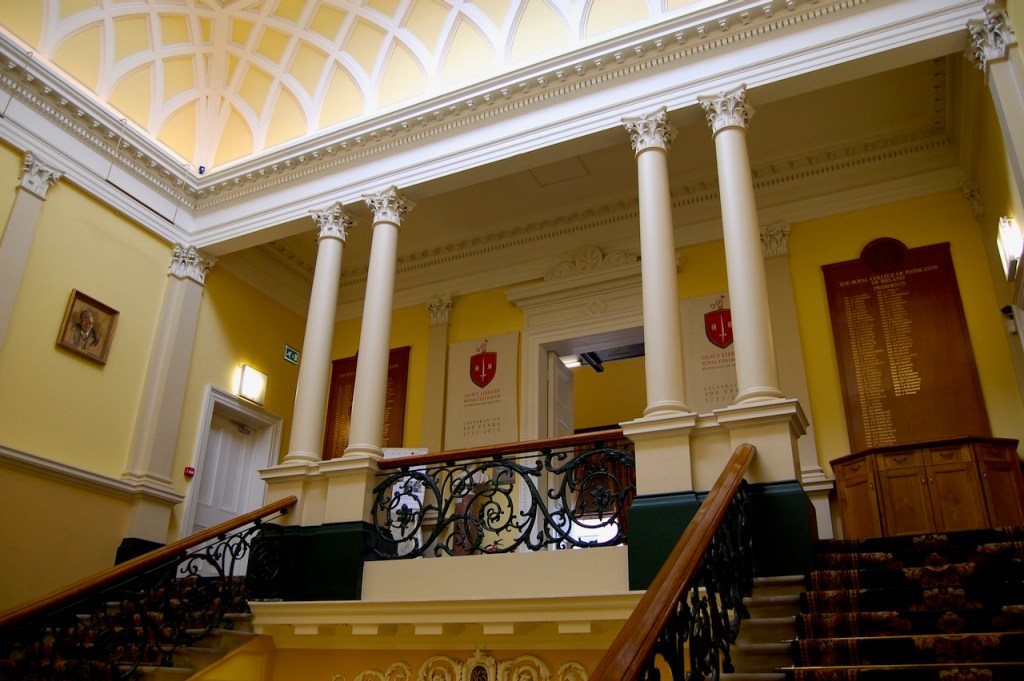
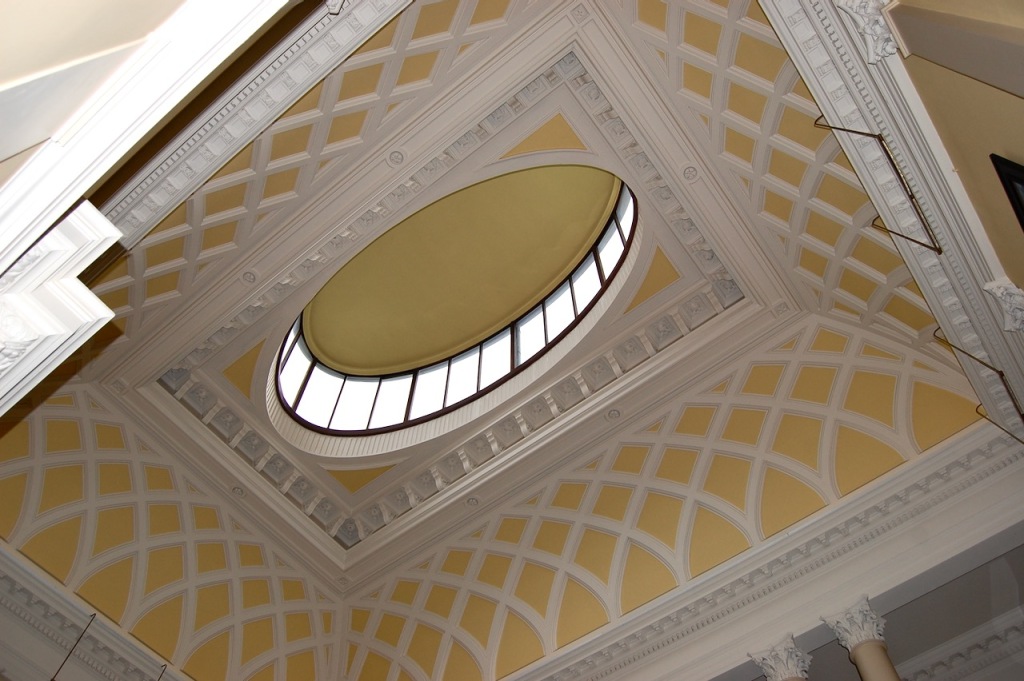
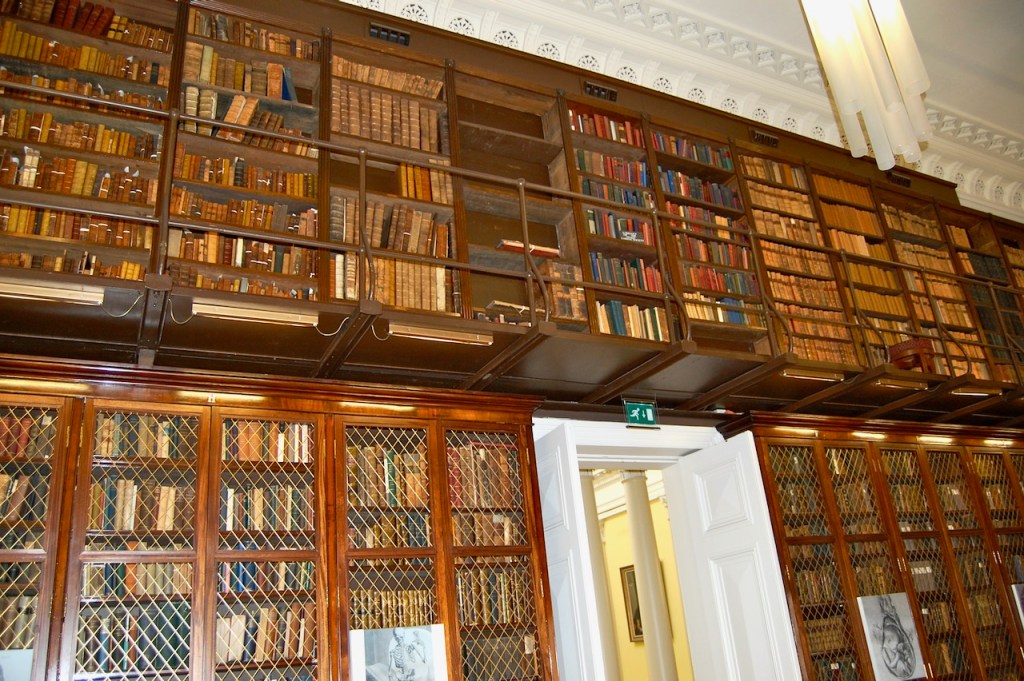

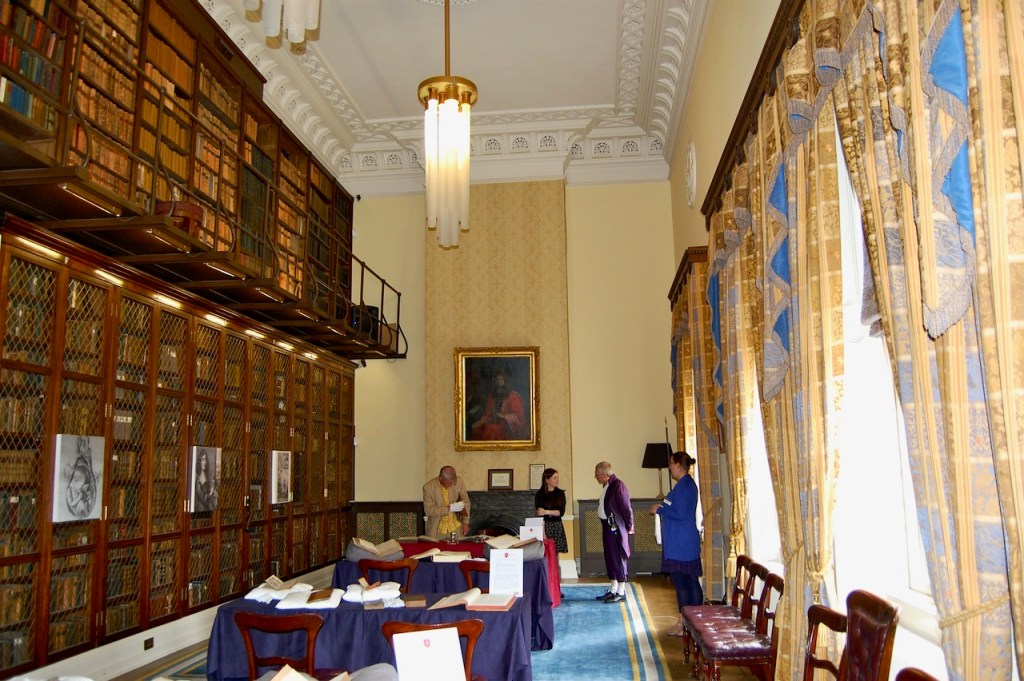
18. Royal College of Surgeons, Dublin (Open House 2011)
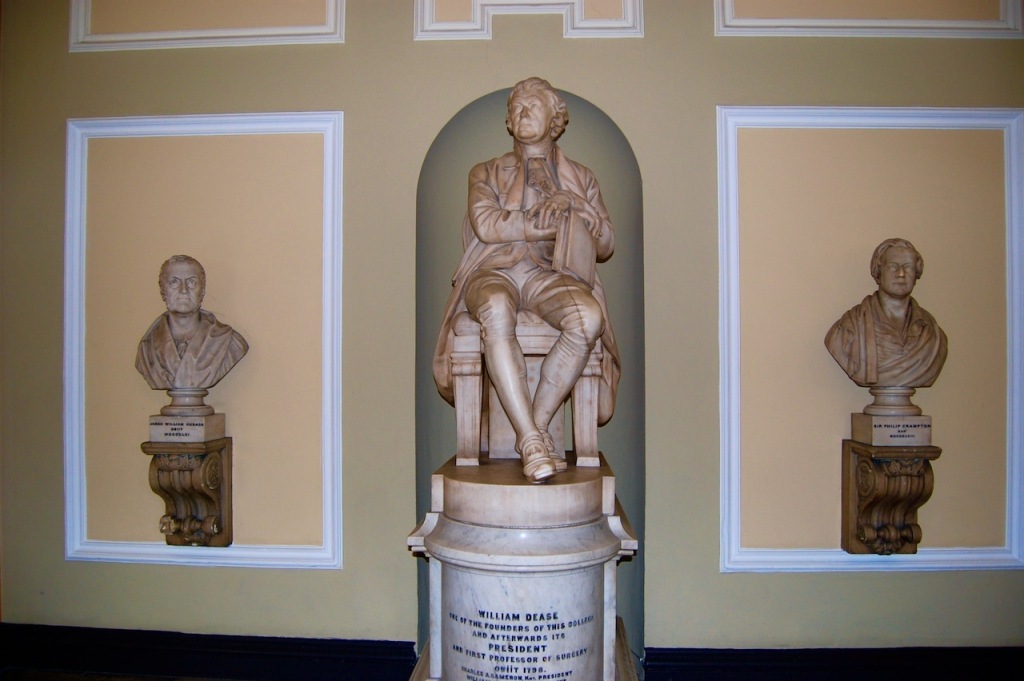
The Royal College of Surgeons was built in two phases, first by architect Edward Parke, who built what is now the last three bays on the south side and five bays deep on York Street. This was subsumed later by architect William Murray, who added four bays to the north and moved the pediment to the new centre of the building, on St. Stephen’s Green. The facade has large round-headed windows separated by freestanding columns. The pediment has the royal arms, and is topped with three statues: Athena (goddess of Wisdom and War), Asclepius (god of Medicine) and Hygiea (Goddess of Health), all by John Smyth [Archiseek]. It has a rusticated basement storey.
The interior, as listed in Lewis’s guide in 1837, contains a large board room, a library, an apartment for general meetings, an examination hall, several committee rooms and offices, lecture theatres and three museums, two of which have galleries.
There is a top-lit gallery with Adamesque plasterwork.

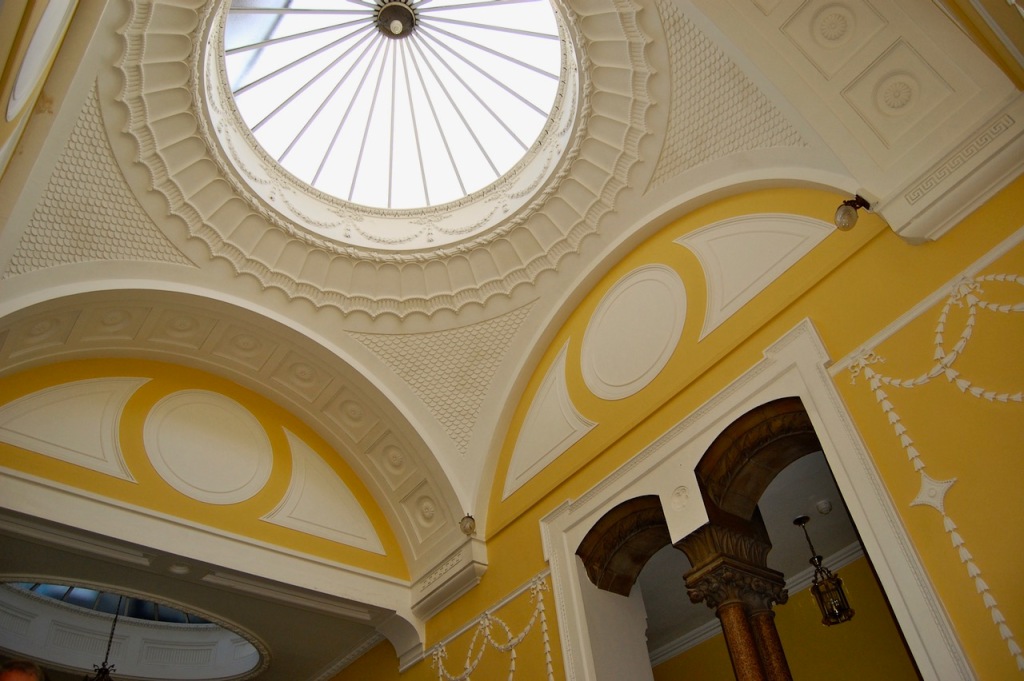
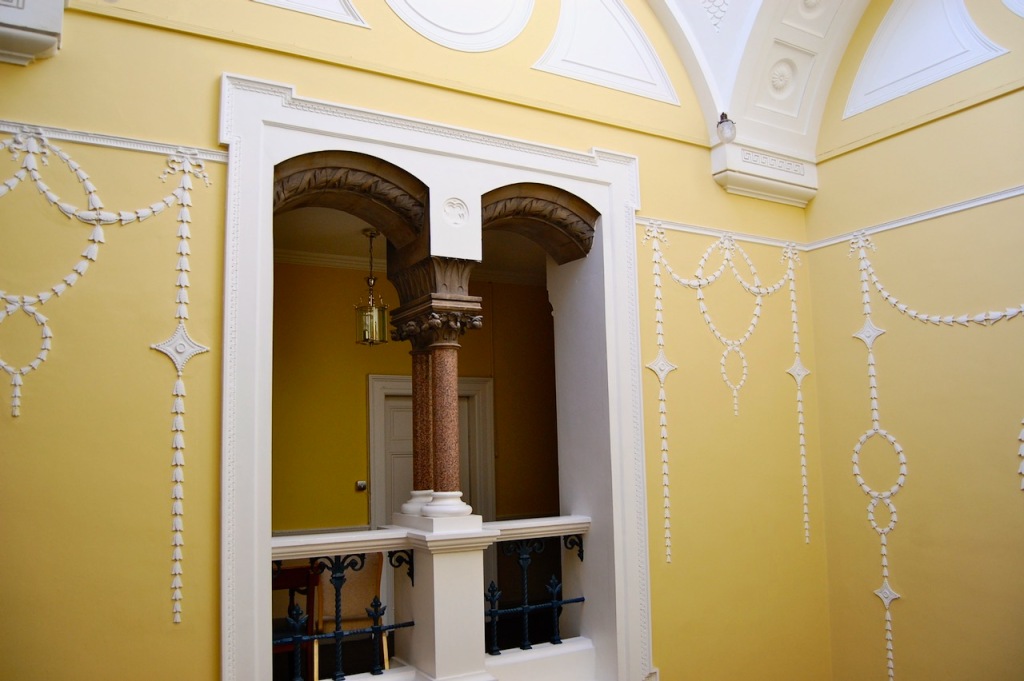
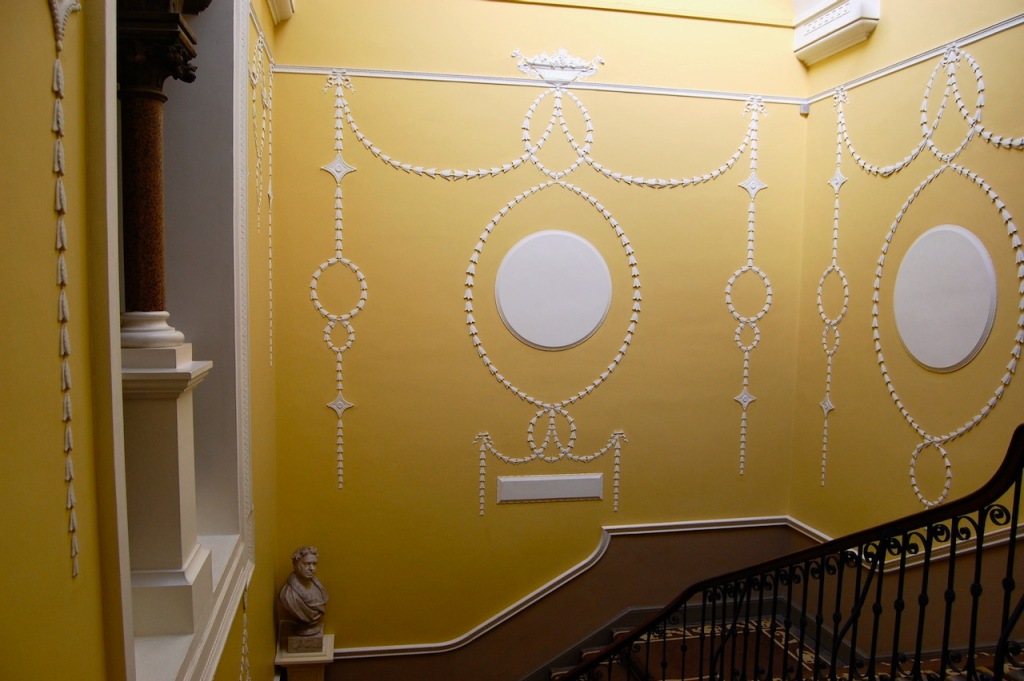

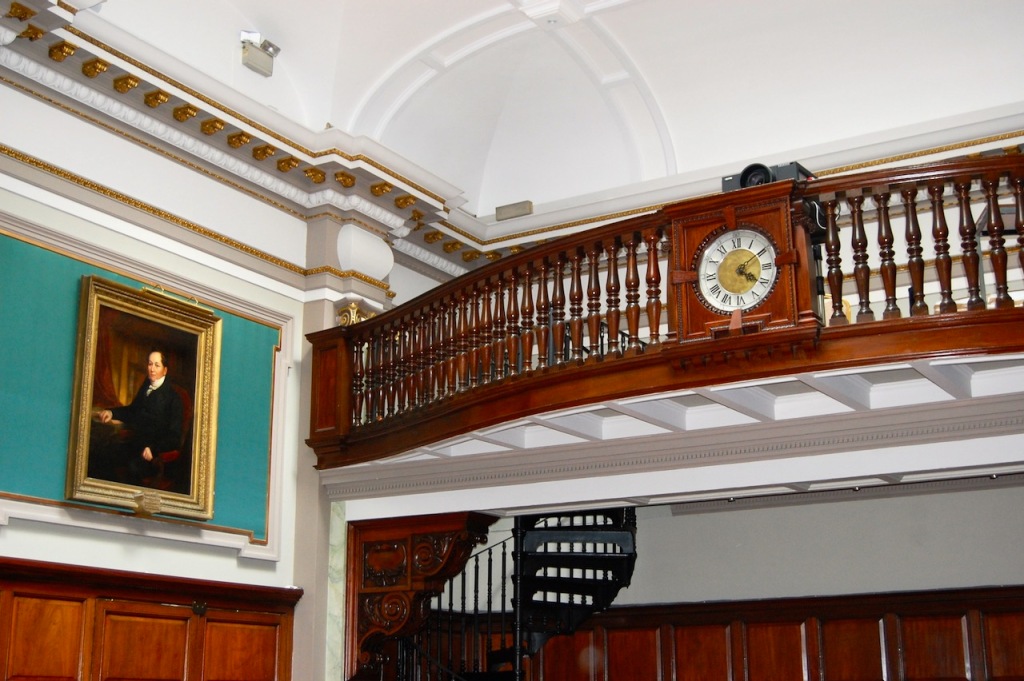

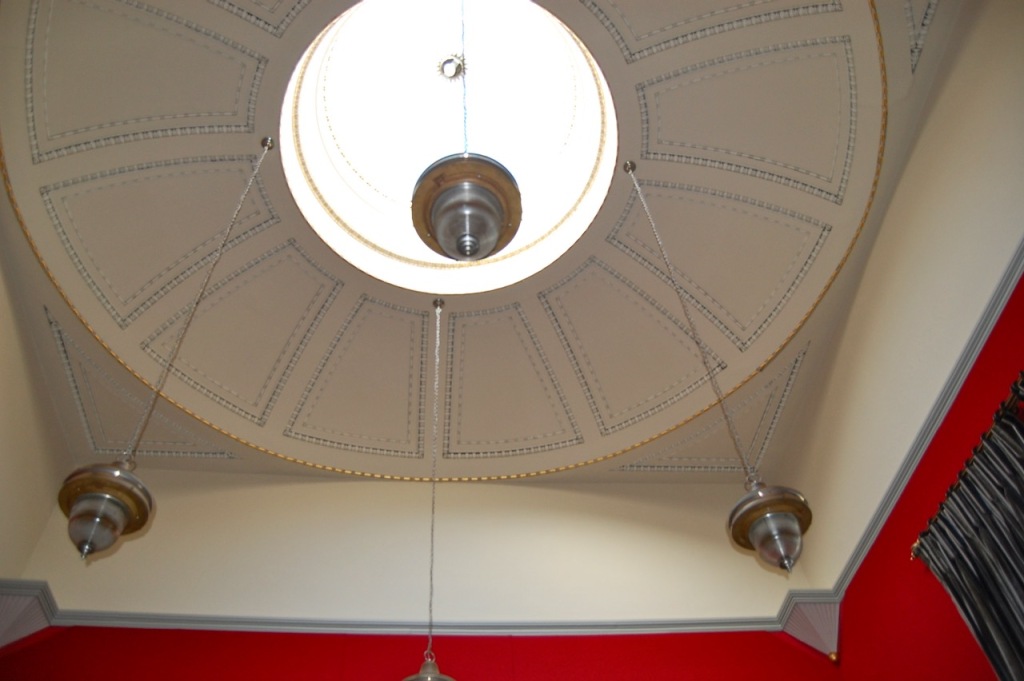

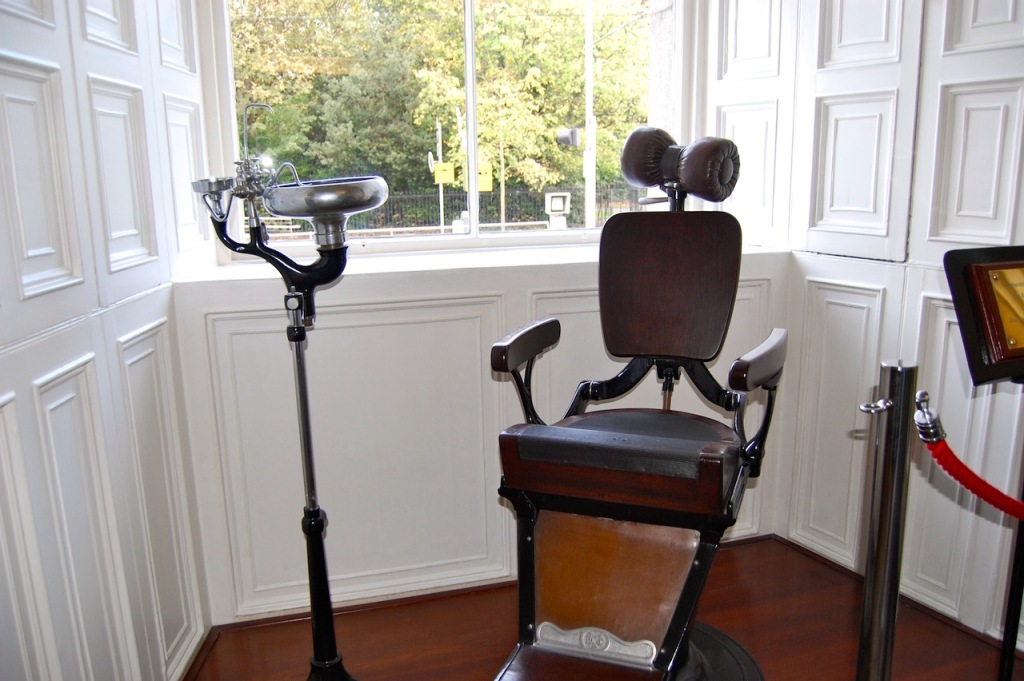
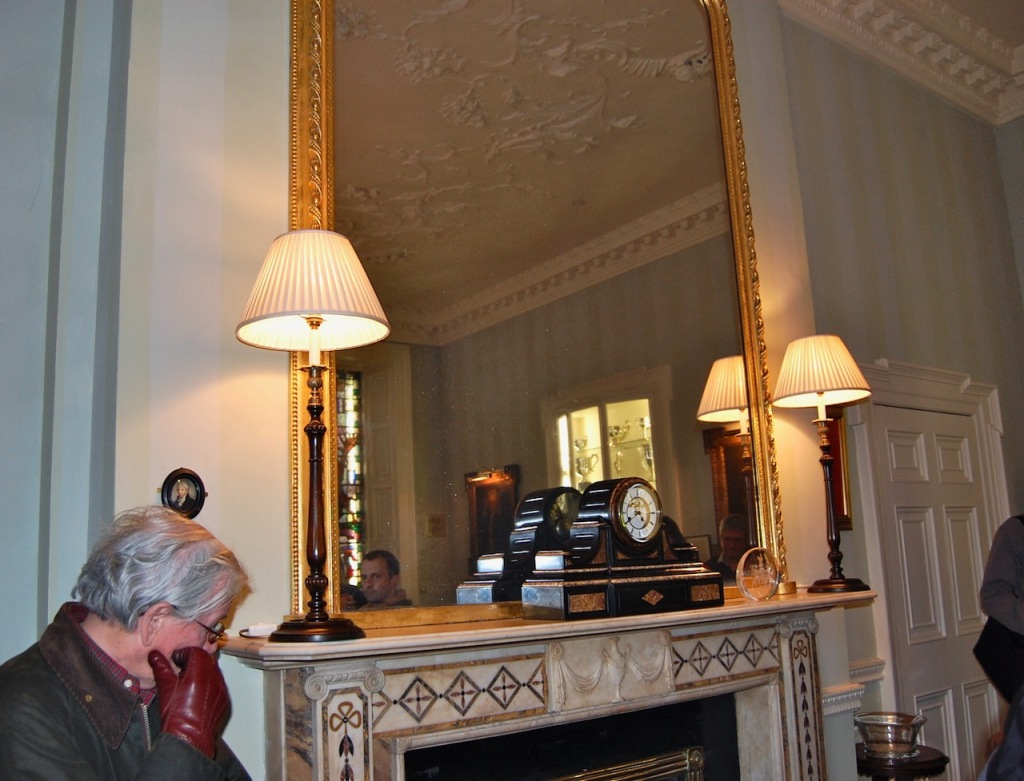
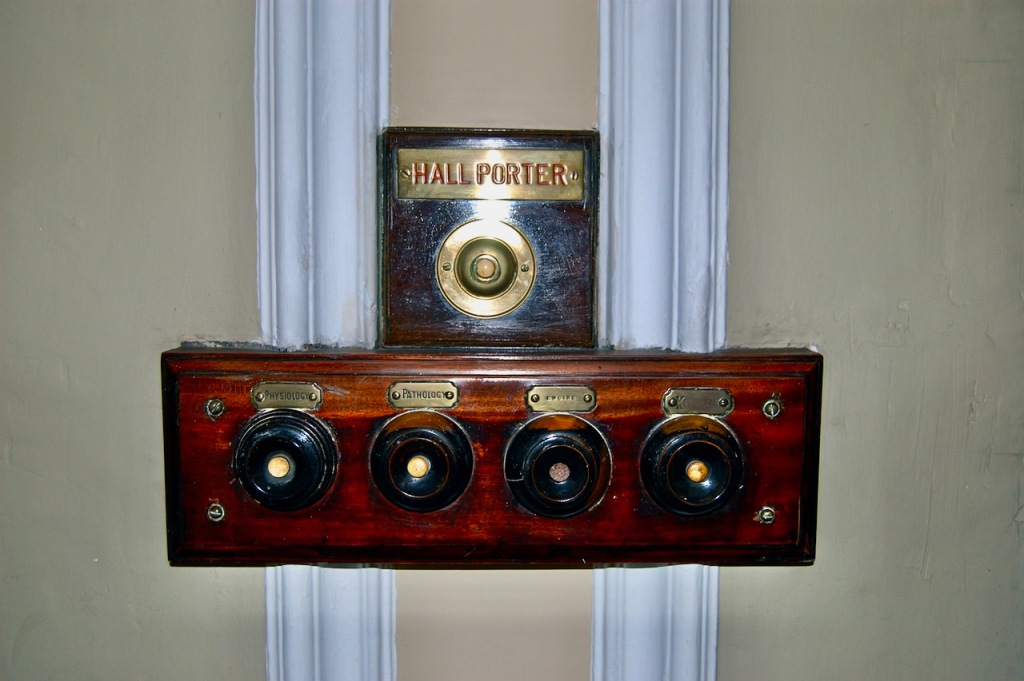
19. St. Mary’s Abbey, Dublin (Culture Night 2012)
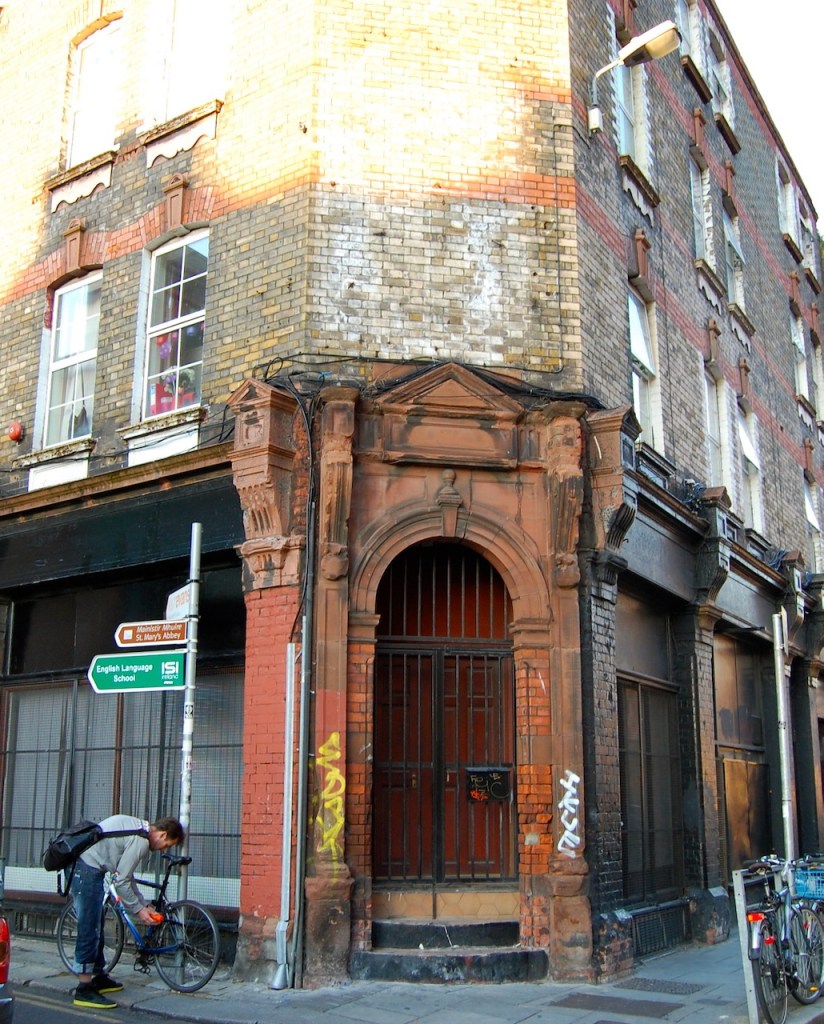
The Archiseek website tells us that in the early 1880s, seven feet below street level, under a bakery, the chapter house of St. Mary’s Abbey was discovered. St. Mary’s Abbey was a Cistercian Abbey founded by the Benedictine monks in 1139. It was dissolved in 1530 and fell into disrepair and its existence is reflected in the street names surrouding it: Mary Street and Abbey Street. The Chapter House is the only part remaining, and was built in 1190! [6]
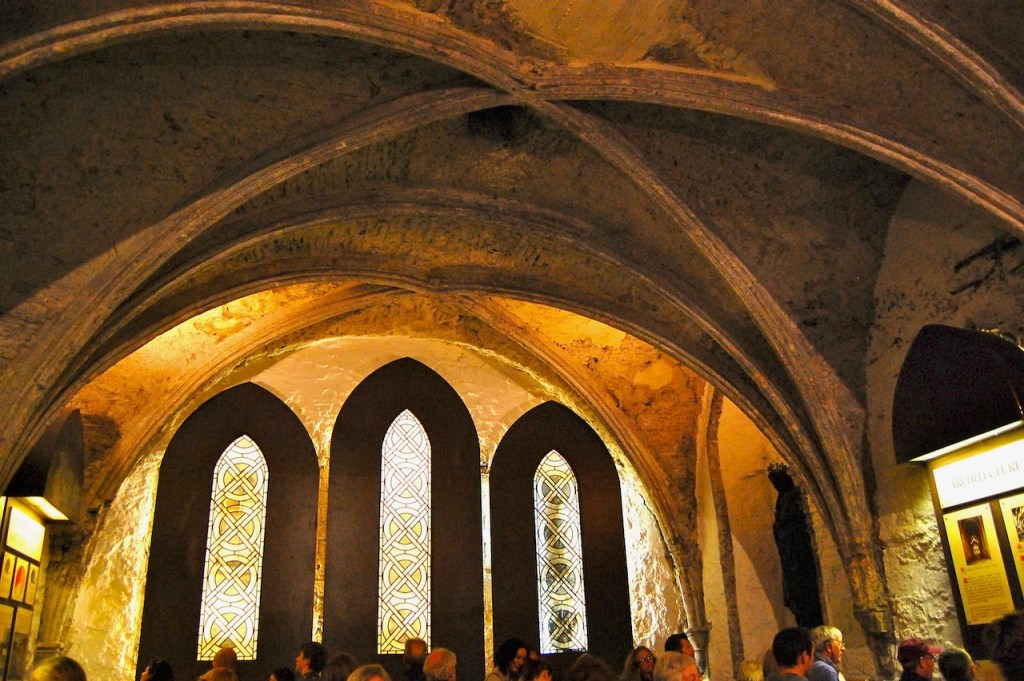
It was in the Chapter House, which could be rented out, that at a meeting of the Privy Council in 1534, “Silken Thomas” FitzGerald objected to the King, who had imprisoned his father. Thomas thought his father had been executed.


20. Tailor’s Guild Hall, Dublin (Culture Night 2013)

Tailor’s Hall was built in 1706 and is the only Guild Hall from the medieval guilds still in existence in Dublin. It is two storeys over basement and the hall inside is lit by tall round-headed windows on both sides, and has two floors of smaller rooms. It is now the headquarters for An Taisce. It was originally the meeting hall for the Guild of Merchant Tailors, from 1706-1841.
It was used in 1792 as the meeting place for the Catholic Committee during their campaign against Penal Law, and for this the building earned the nickname of “Back Lane Parliament.” Later still, it was used as a meeting place for the United Irishmen around 1798.
From Christine Casey, The Buildings of Ireland: Dublin, 2005, p. 367:
“1703-1707, Richard Mills overseer. The Tailors’ Guild Hall is a tall shallow red brick building with a steep roof and dormer windows, a large gabled chimneystack and stair compartment projecting from the rear or N. wall. The entrance front is the long S elevation, reached by a stone arch and forecourt from Back Lane. In the 18th century the Hall was concealed behind houses on High Street and Back Lane and preceded only by the narrow arched pathway and a basement area. This unusual sequestered position is explained by the fact that the site was formerly occupied by a Jesuit chapel and college, endowed in 1629 by the Countess of Kildare. Seized by the Crown in 1630, it was subsequently repossessed by Lord and Lady Kildare and returned to the Jesuits who remained here for an unknown period prior to 1706…Tailors’ Hall is substantially early 18C. However, curiosities in the design and [p.368] structure suggest that it may incorporate something of the fabric of the 17C chapel.
The most striking feature of the facade is its asymmetry. Four tall narrow round-headed windows lighting the assembly hall fill almost two-thirds of the facade. To their right the facade is of two storeys and three bays with the entrance on the left next to the hall framed by an elegant rusticated limestone door surround of 1770. The basic arrangement reflects a pragmatic medieval-based system of hall and upper chamber, common in London livery halls of the late C17… A granite base-mould divides the brick masonry of the principal floor from the basement walling, which is largely of Calp with a band of brick forming the slightly cambered heads of the basement windows.”
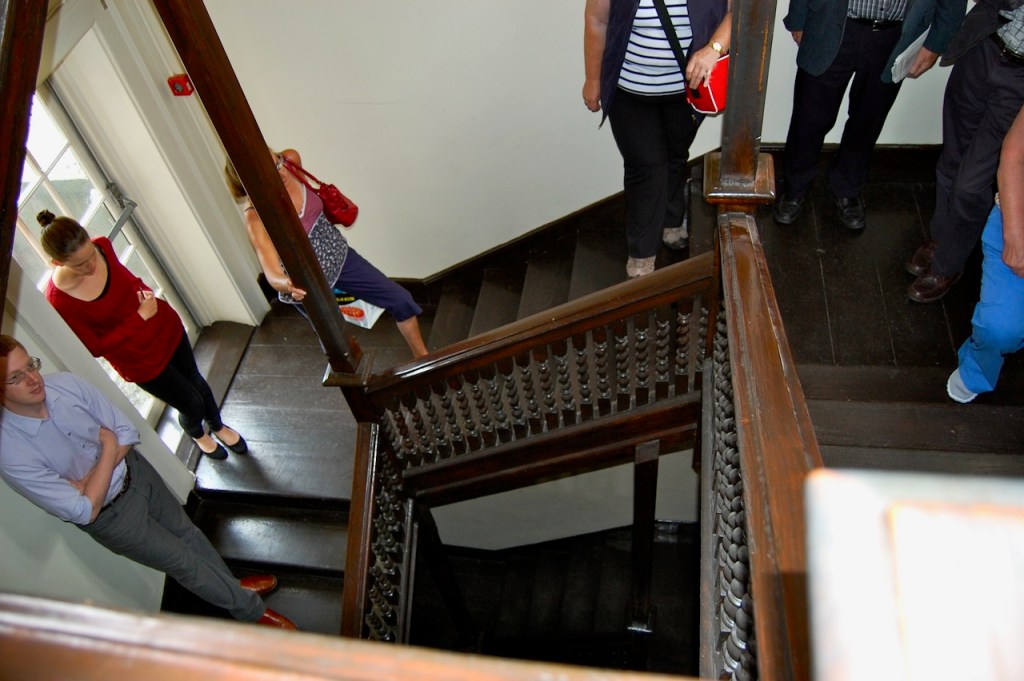
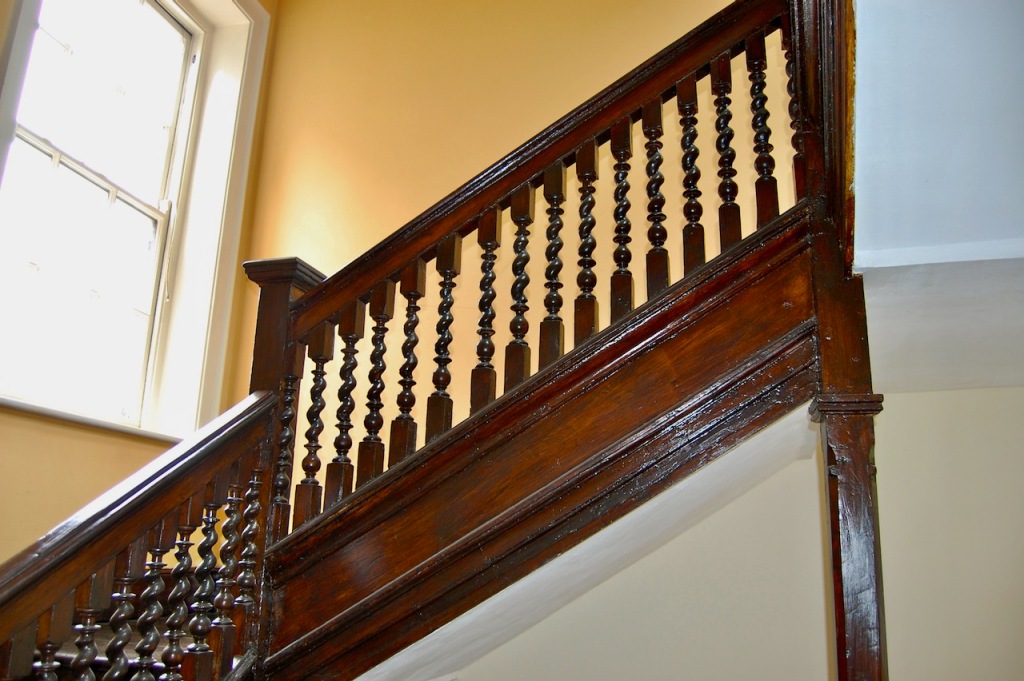
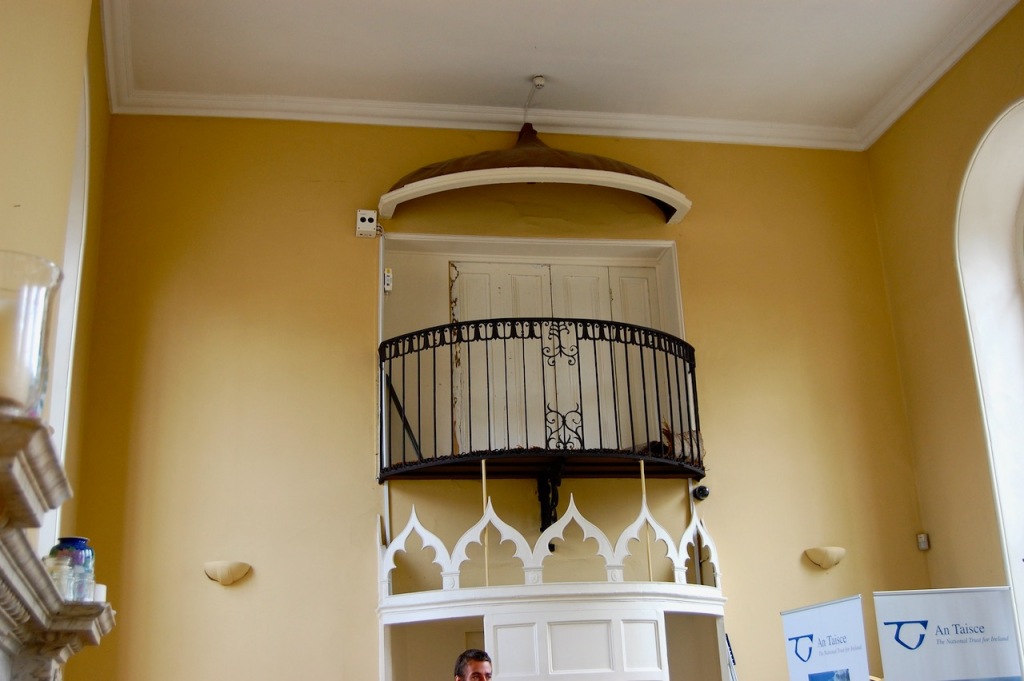

21. Trinity Innovation Centre, former Bank, Foster Place, Dublin (2013)
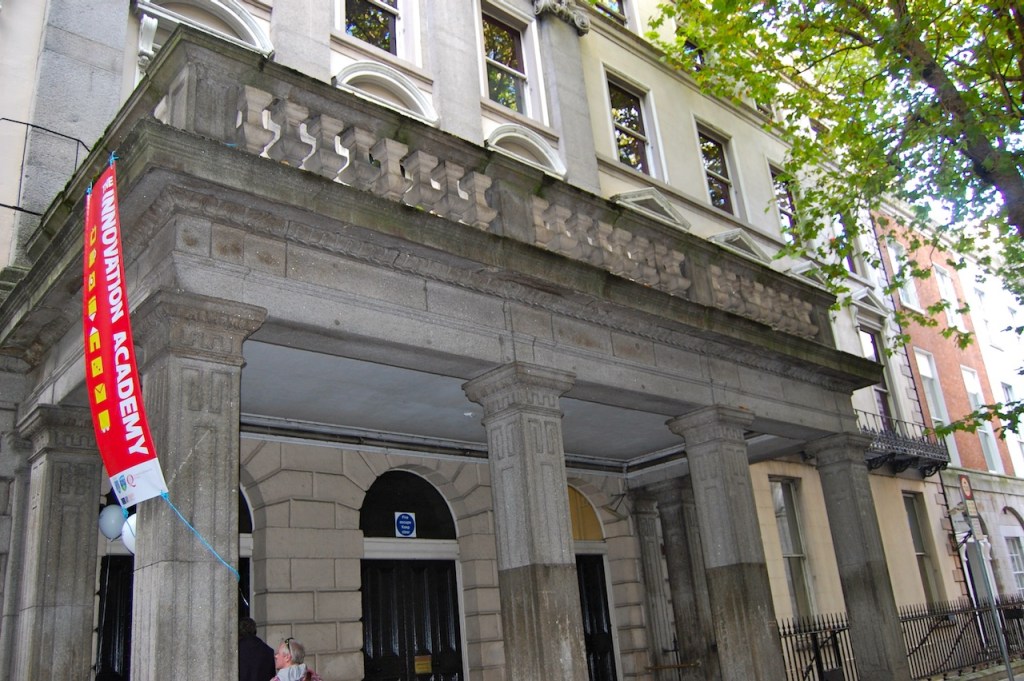
Before the formation of AIB (Allied Irish Bank), this was known as the Royal Bank. A Neo-Classical porch was added by George Papworth in 1850. The banking hall was added by Charles Geoghegan in 1859 at the rear of the building. It has a coffered barrel vaulted space top-lit and supported by cast iron Corinthian columns. The building has a double-height entrance hall. The bank closed in 2002 and the building is now owned by Trinity College Dublin.
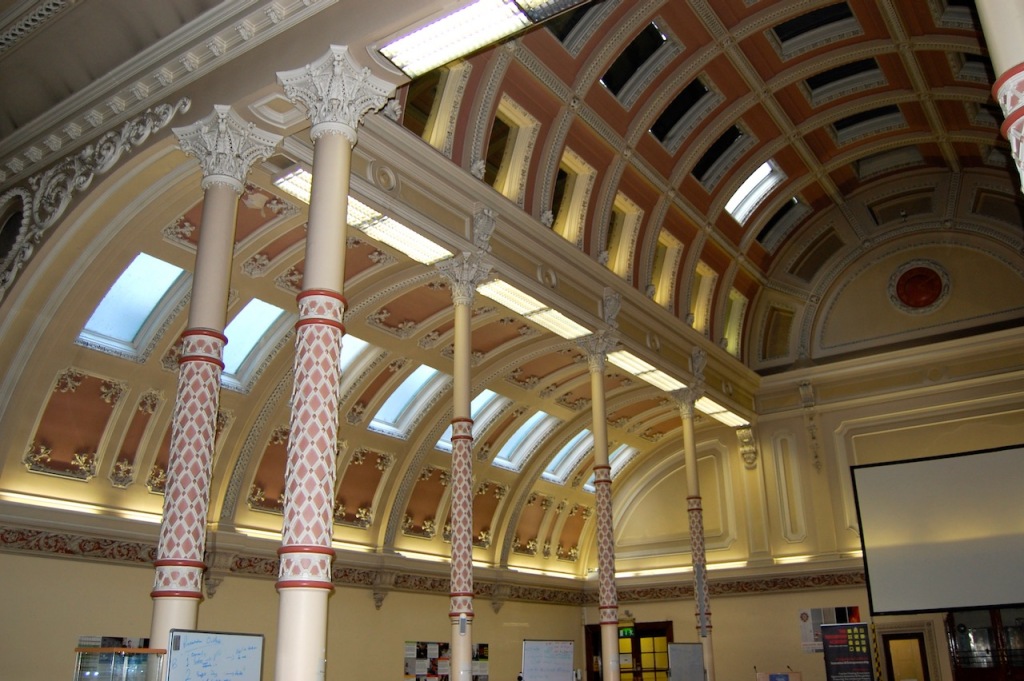
The description of the day’s event tells us:
“Behind a neat stucco facade (with a neo-classical porch added by George Papworth circa 1850) and a double-height entrance hall, the interior includes what has been described as Dublin’s finest Victorian banking hall. A curving mahogany counter wraps most of the floor area, previously as a barrier between the bank clerks and customers. The space is in excellent condition, lit from above by a coffered and glazed barrel vault, supported by elegant cast-iron columns. For those who love pattern and ornament, the friezes and the plasterwork on the columns and their capitals will be particularly enjoyable.”


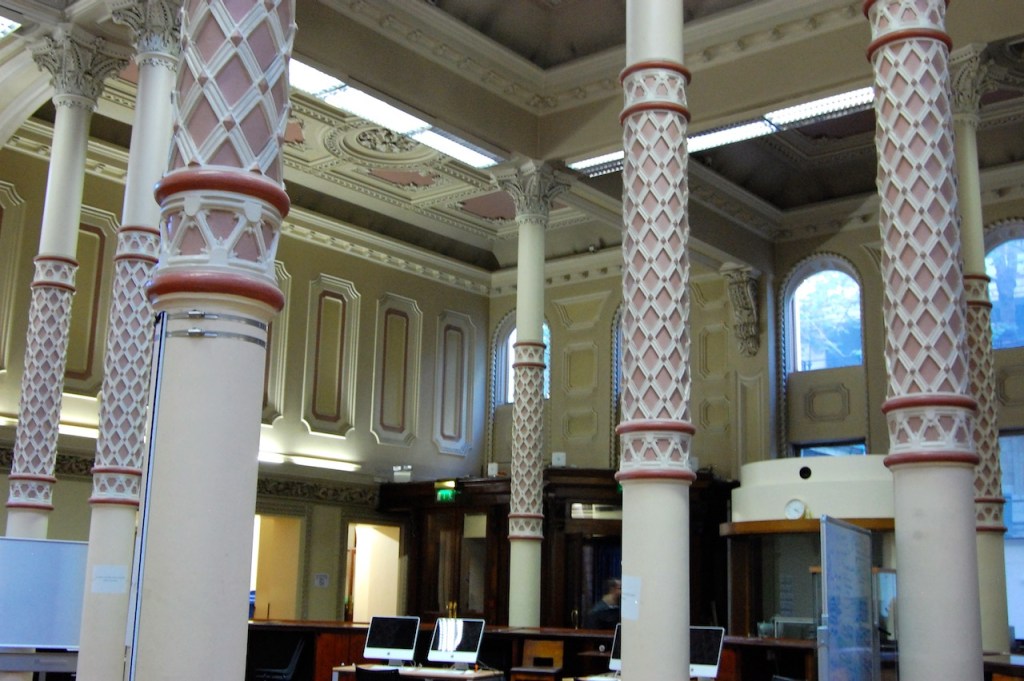
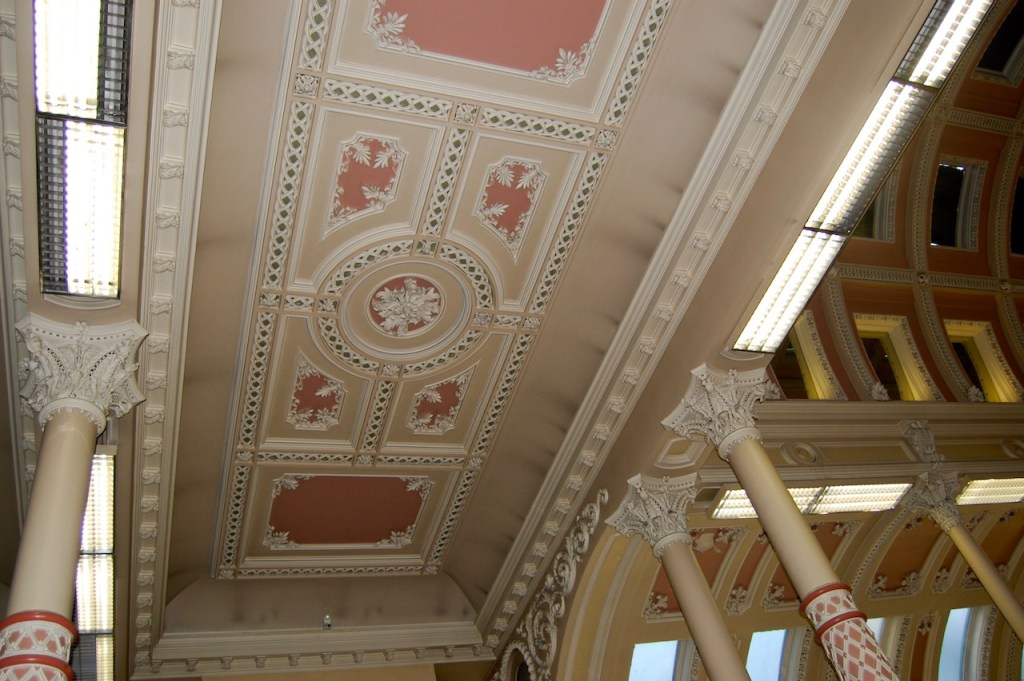
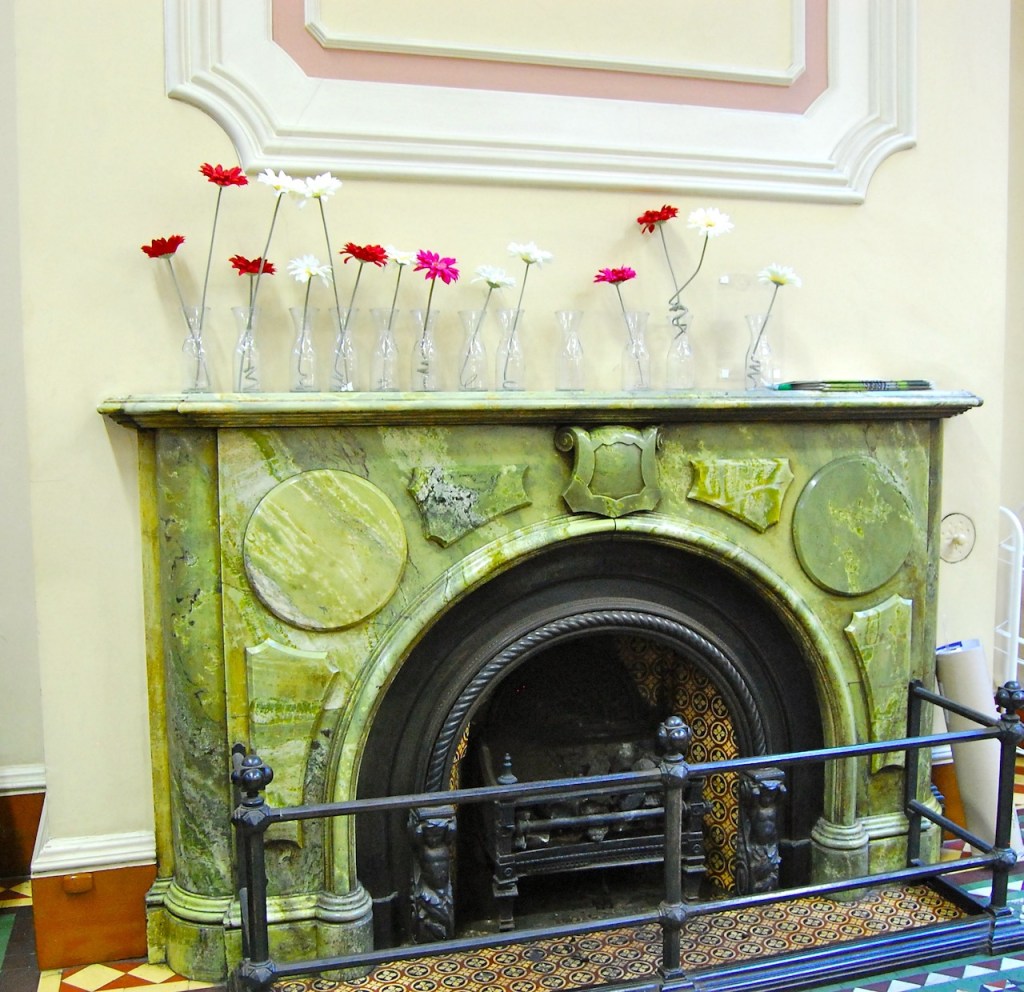
[1] https://www.archiseek.com/2010/1730-no-10-henrietta-street-dublin/
[2] https://theirishaesthete.com/2017/03/20/shedding-light-on-a-subject/
[3] https://www.archiseek.com/2010/1715-mansion-house-dawson-street-dublin/
[4] https://www.buildingsofireland.ie/building-of-the-month/the-mansion-house-dawson-street-dublin-2/
[5] National Library and Archives digital repository.
[6] https://www.archiseek.com/2010/st-marys-abbey-chapter-house-marys-abbey-dublin/
3 thoughts on “Open House, Culture Night and Heritage Week Dublin Visits”